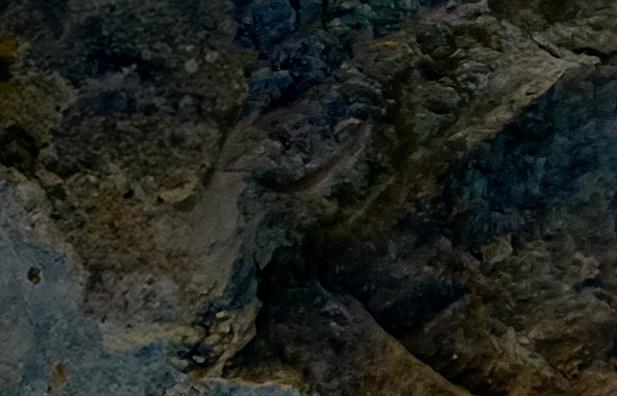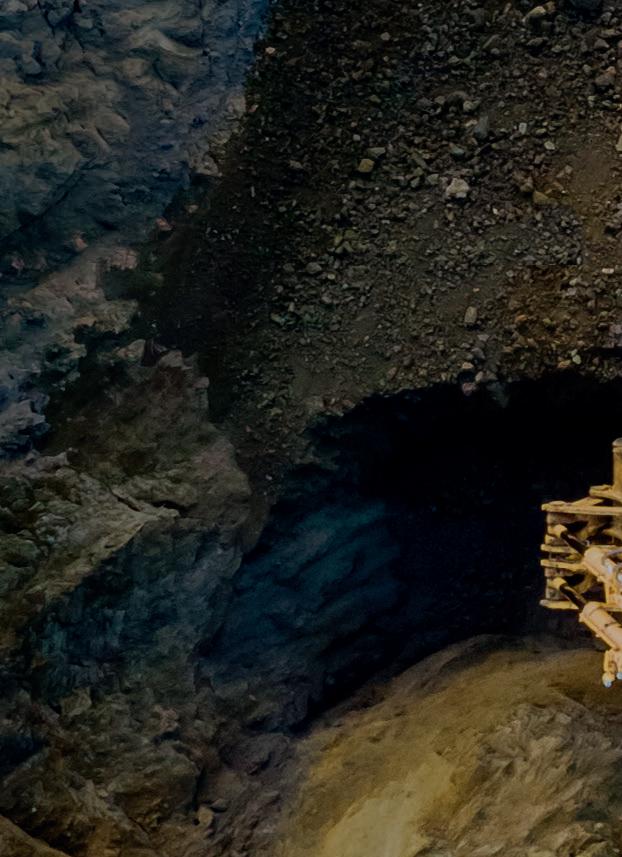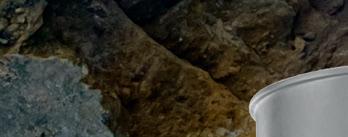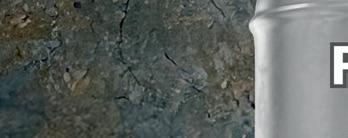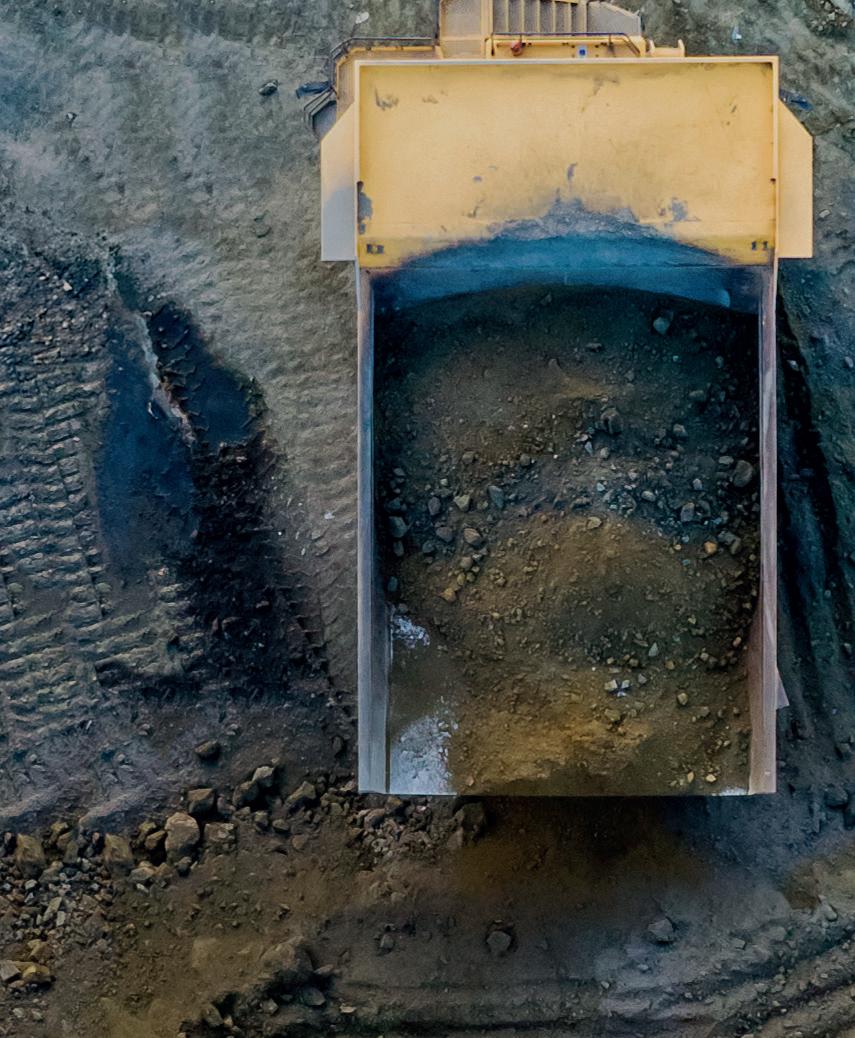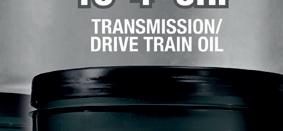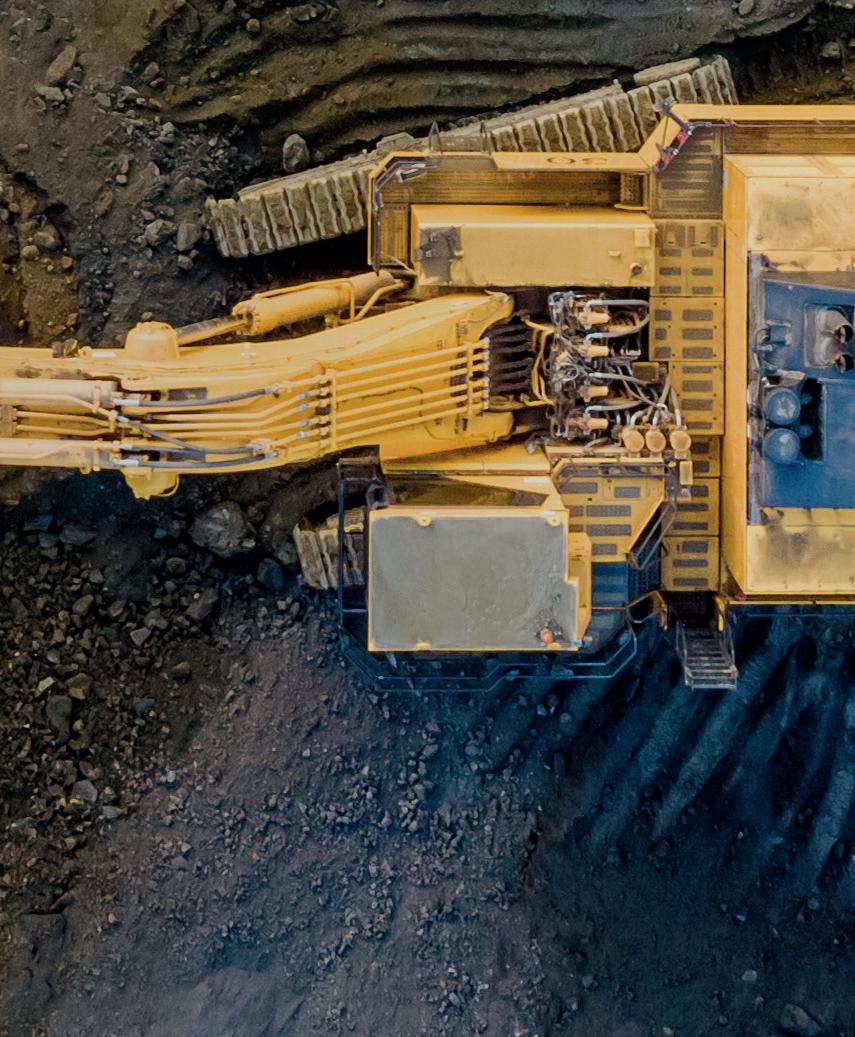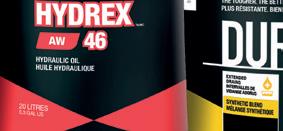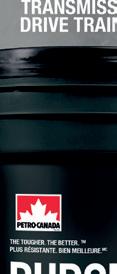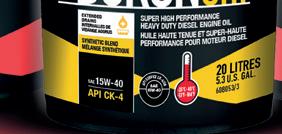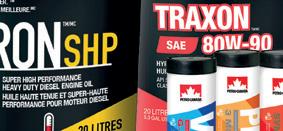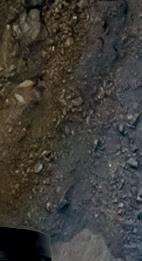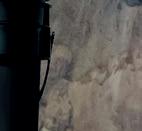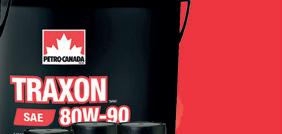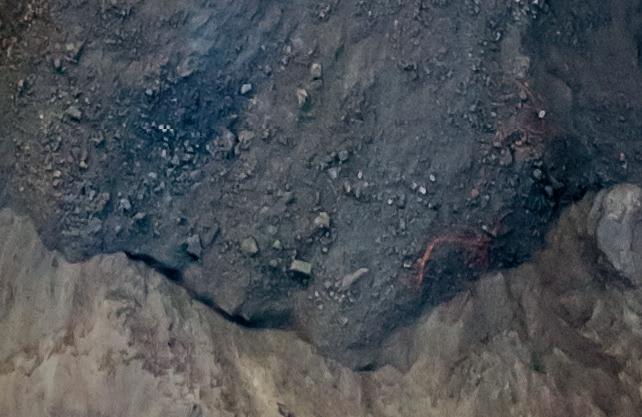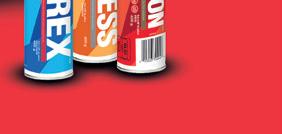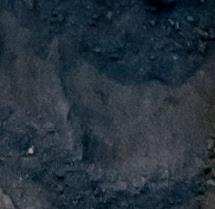





















> Proudly Canadian: Proudly Mining
> The mines across the tickle


> Drilling into Manitoba’s untapped potential



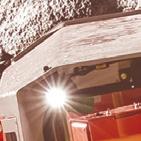

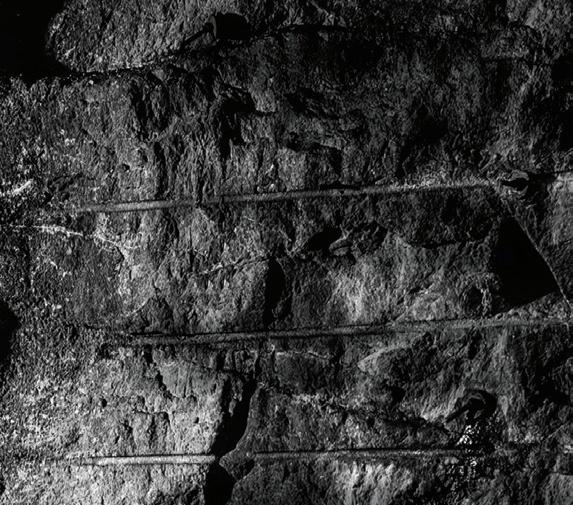
> THE FUTURE OF AUTONOMY IN MINING OPERATIONS
> HOW GEOSCIENCE SOFTWARE FLIPPED THE MINING INDUSTRY ON ITS HEAD
> SUBSURFACE INTELLIGENCE EMPOWERS MINERAL EXPLORATION



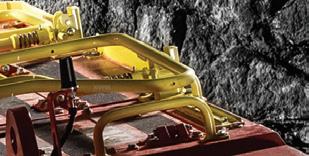

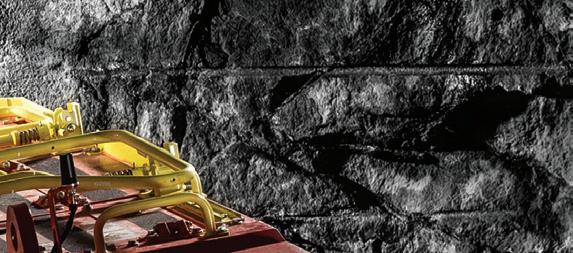
> A SURFACE SCANNING TECHNOLOGY FROM MARS MISSIONS

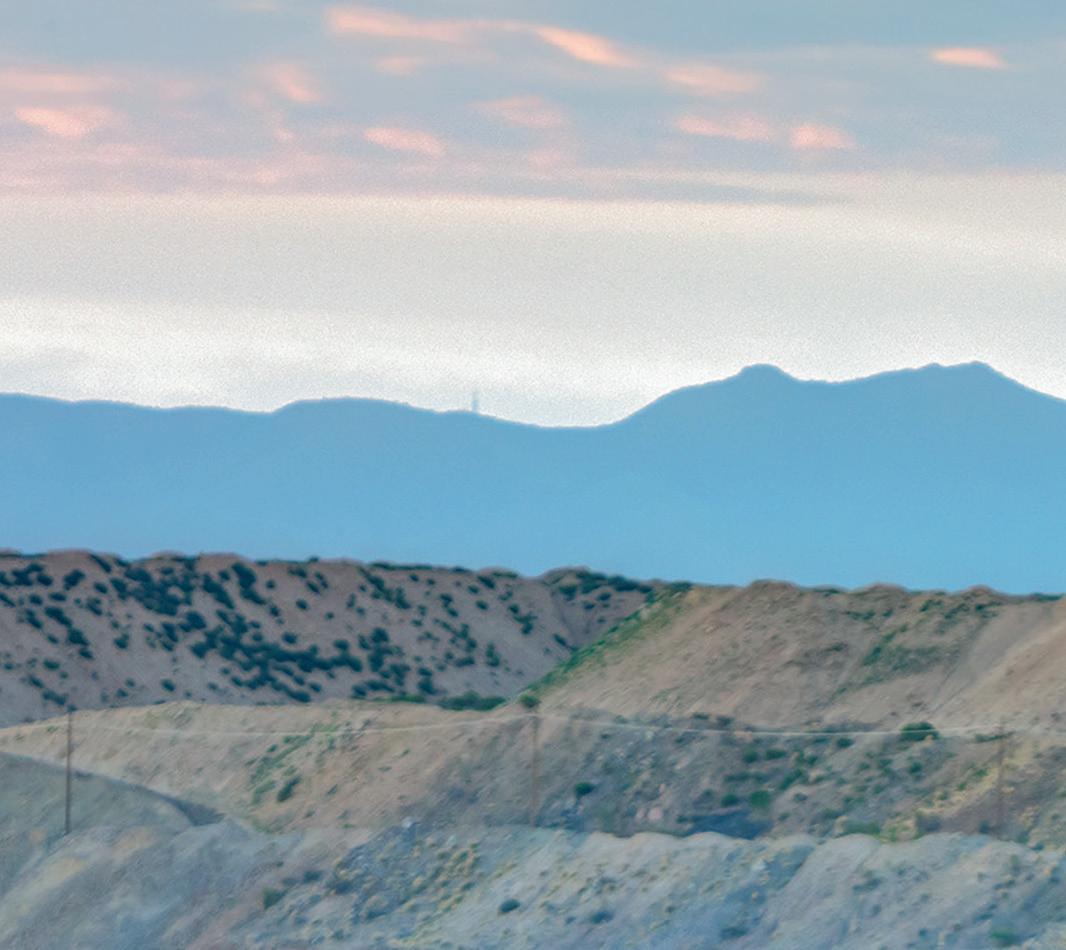
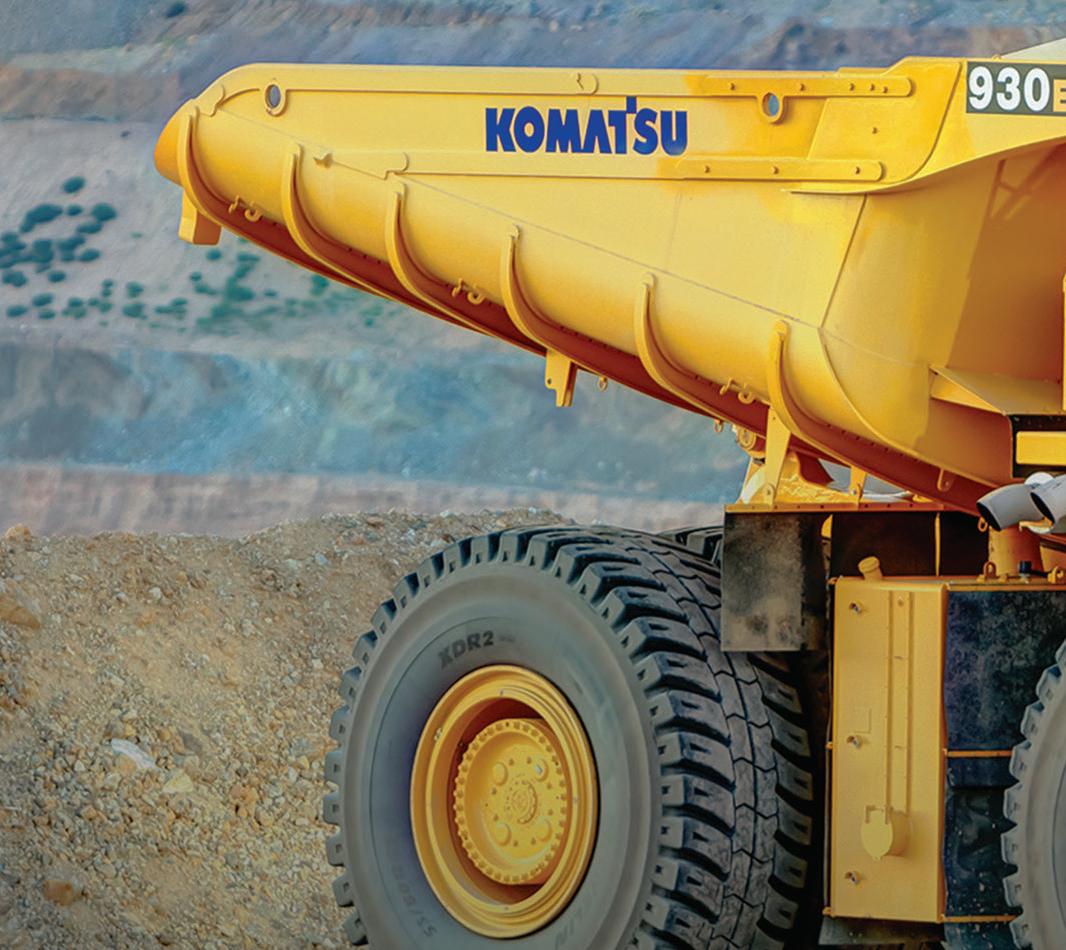

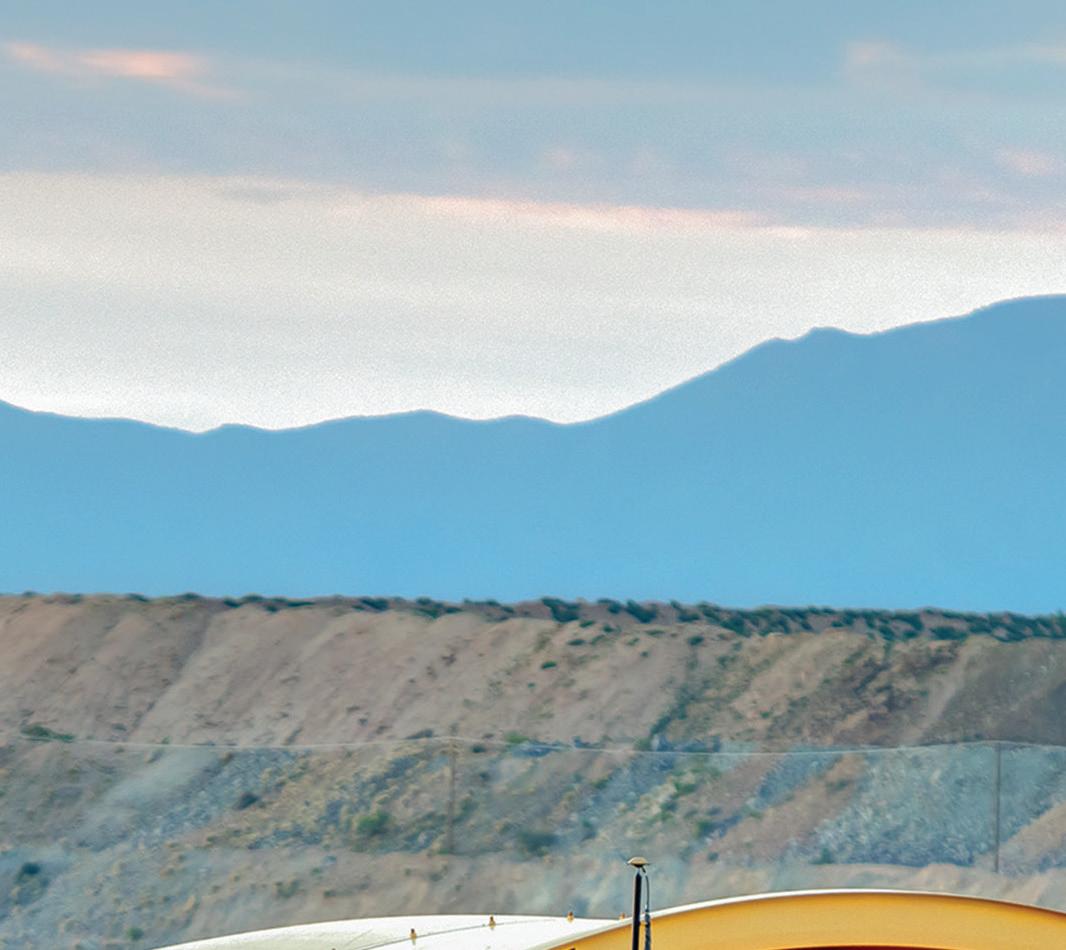
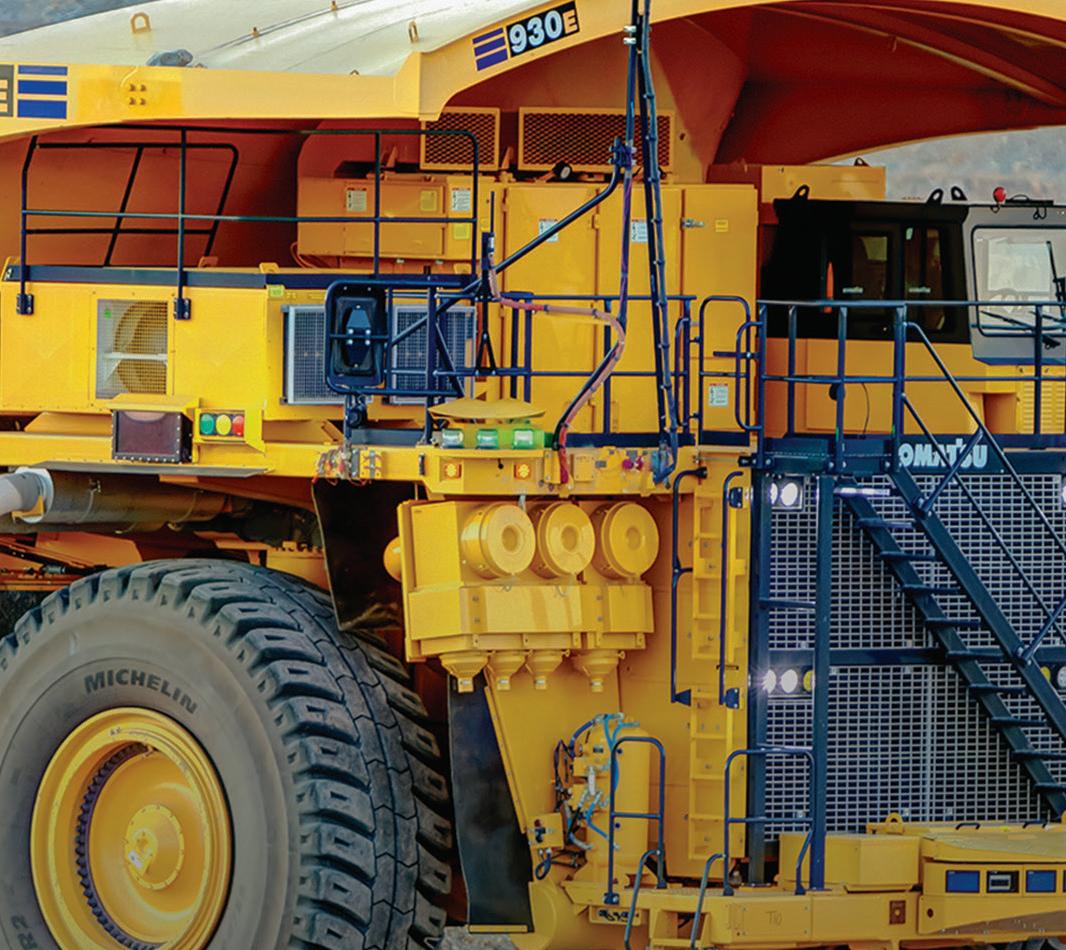
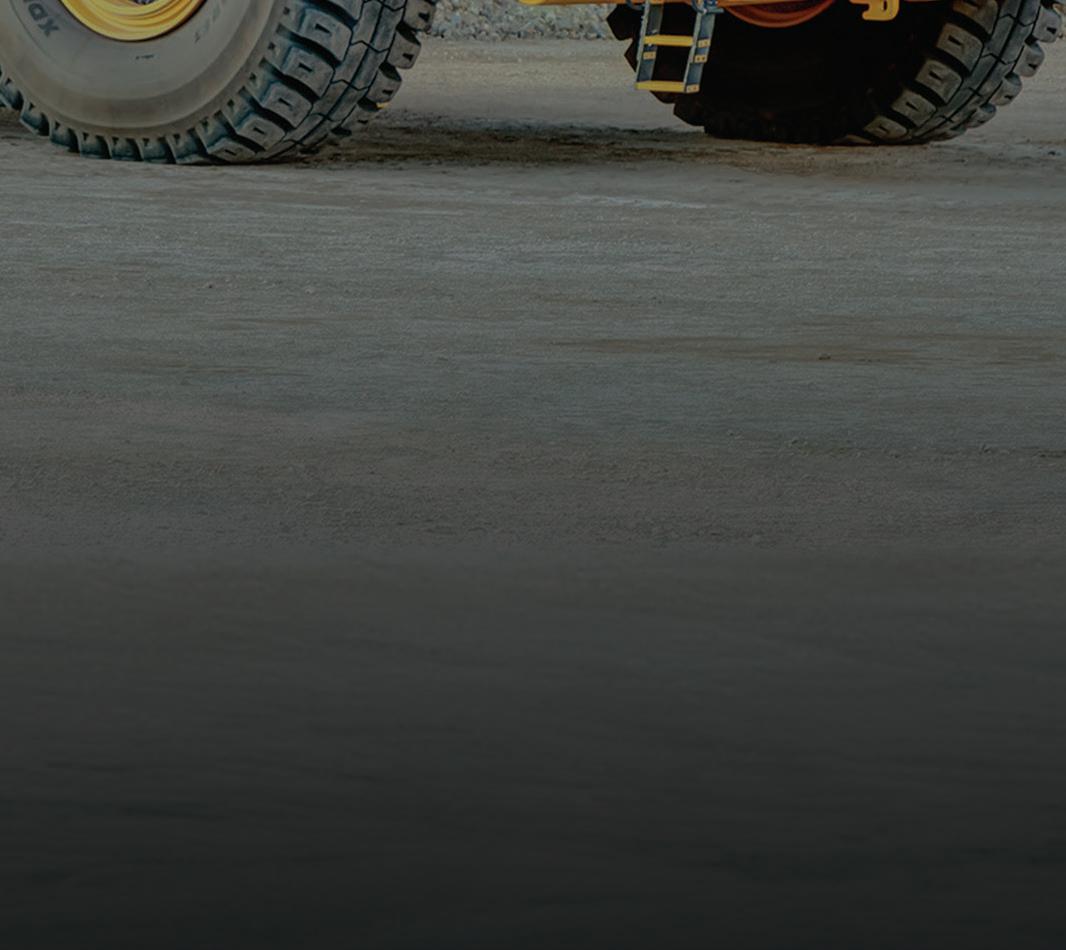










































































































MINING IN CANADA
12 Is mineral processing geomimicry? Mining a mineral message (part 3).
14 Proudly Canadian: Proudly mining.
16 History of mining: The mines across the tickle.
18 A tremendous career advocating for mining: An interview with Chris Hodgson.
22 Revival of Thompson nickel belt: Drilling into Manitoba’s untapped potential.
MINING IN THE DIGITAL AGE
24 Panacea versus practicality: The future and promise of autonomy in mining operations.
26 Under the surface: How AI and GenAI are transforming the end-to-end mining landscape.
28 Subsurface intelligence empowers mineral exploration companies to drill less and discover more.
33 How geoscience software flipped the mining industry on its head: An interview with Graham Grant, CEO of Seequent.
37 A surface scanning technology from Mars missions: Laser-induced breakdown spectroscopy.
40 A holistic approach to mine digitalization for strategic success.
45 Mitigating wildfire risk for mining and industrial operations. LUBRICANTS
42 A new era in mining lubrication.
CRITICAL MINERALS, DECARBONIZATIO, AND INTERNATIONAL MINING
43 Five things that will define success in rare earth elements.
53 Decarbonizing mining: Can Chile succeed?
WOMEN IN MINING
55 The cost of the inclusion.
57 The mining industry can play a key role in addressing the scourge of gender-based violence.
REBRANDING MINING
58 The underappreciated valor of Canada’s mining industry.
4 EDITORIAL | The good, the bad, and the tariffed: Mining’s digital lifeline in uncertain times.
6 FAST NEWS | Updates from across the mining ecosystem.
10 LAW AND REGULATIONS | Tips for avoiding delays in British Columbia’s permitting process.
48 MIN(E)D YOUR BUSINESS | Can Idaho’s SPEED Act serve as a model for mine permitting reform?
52 MINING SPOTLIGHTS
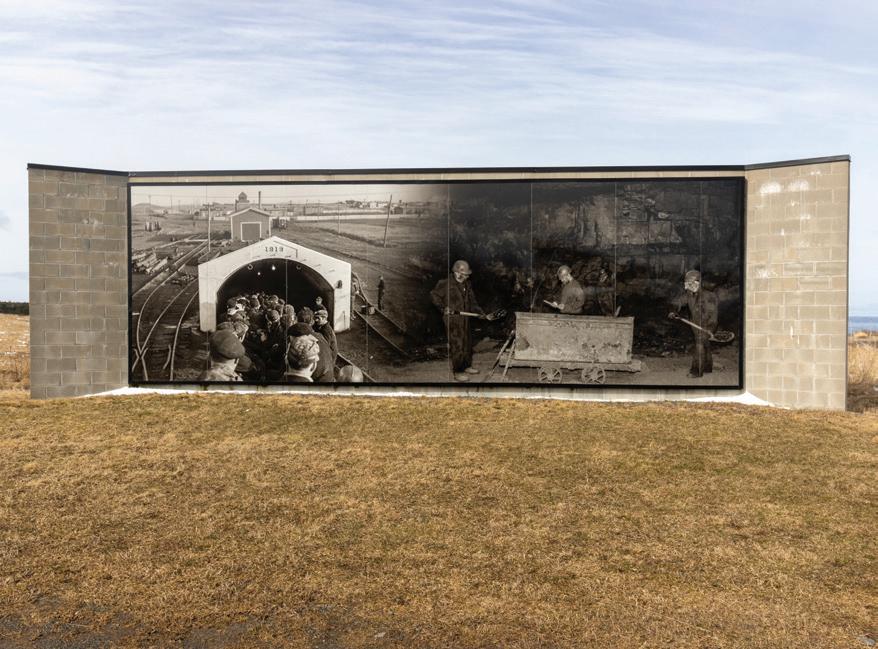
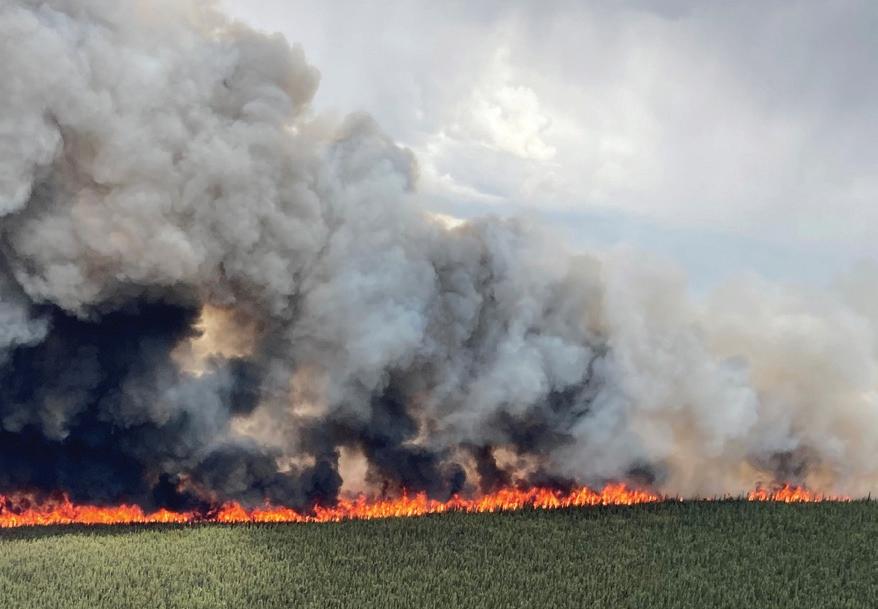
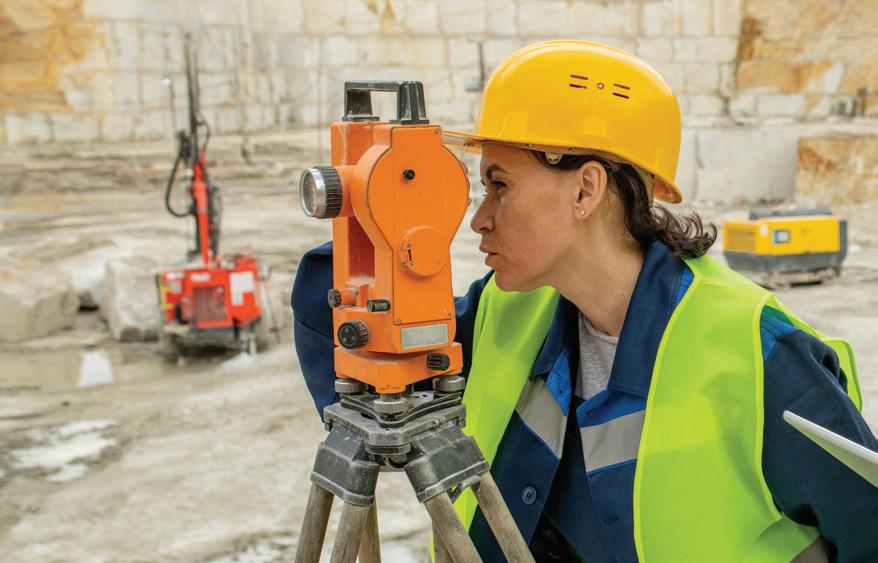







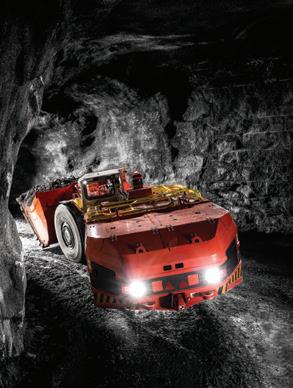






Tamer Elbokl, PhD
lthough U.S. tariffs have introduced significant challenges for the Canadian mining industry, they also bring an environment of change that could stimulate strategic shifts, increased efficiency, or investment in domestic capabilities.
The good news is that Prime Minister Mark Carney has publicly endorsed a long-desired mining policy in Canada of a “one project, one review” permitting system. Carney announced recently that he and Canada’s premiers have agreed to eliminate all interprovincial trade barriers and streamline environmental assessments for major projects, including mining projects, high-speed rail, hydroelectricity grids, and pipelines. The plan is touted as a major way to replace duplicative federal and provincial environmental reviews with a single streamlined process. Meanwhile in Ontario, Premier Doug Ford is following through on his vows to expedite the development of the Ring of Fire region as a response to Trump tariffs and get critical minerals projects moving in the province. His recently re-elected majority government is proposing legislation that will speed mining and other major projects across the province in the Ring of Fire and other economic priority zones. However, a coalition of First Nation chiefs has already issued a word of caution.
At first glance, the recent U.S. tariffs seem like nothing but bad news for Canada’s mining sector — all downside, no upside. But dig a little deeper, and even this uncertainty may hold unexpected opportunities. In my opinion, tariffs also introduce a degree of disruption that may create openings for strategic adaptation and innovation.
Digitalization can significantly help the mining industry mitigate the impact of tariffs through several key strategies such as enhancing supply chain management to help mining companies navigate disruptions and maintain steady operations, achieving cost efficiency using automation and artificial intelligence (AI) to streamline operations, using real-time data analysis to provide insights into market trends and tariff impacts, improving productivity using digital innovations like predictive maintenance and automated machinery, diversifying the markets by using digital platforms to facilitate access to new markets and customers and reduce the reliance on regions affected by tariffs, and finally by embracing electrification, the mining industry cannot only reduce its environmental footprint but also strengthen its financial resilience against tariffs.
Leveraging advanced digital technologies enables the mining sector to navigate the multifaceted impacts of tariffs while bolstering operational resilience in an increasingly uncertain global economy.
In this issue, we cover several topics related to “Mining in the Digital Age” on pages 24 to 47, with a special focus on digitalization, the future and promise of autonomy in mining operations, and how AI is transforming the mining landscape.
Additionally, in our “Mining in Canada” section, including a “proudly Canadian” mining article by Steve Gravel on page 14, an article on the history of mining in Bell Island on page 16, and an interview with Chris Hodgson on page 18, we shed some light on how Canada can leverage its natural resources to become a leader in the critical minerals sector amid trade war ambiguity.
If you are planning to be in Montreal to attend CIM CONNECT 2025, please remember to collect a copy of this issue when you visit Earthlabs Media booth # 719.
Finally, our June-July 2025 issue will report on surface (open pit) mining, including reports on blasting and the rise of autonomous trucks, with special features on load and haul. Editorial contributions can be sent directly to the Editor in Chief before May 10.
MAY 2025 Vol. 146 – No. 3
69 Yonge St., Ste. 200, Toronto, ON M5E 1K3 Tel. (416) 510-6789 Fax (416) 510-5138 www.canadianminingjournal.com
Editor in Chief Dr. Tamer Elbokl telbokl@canadianminingjournal.com
News Editor Joseph Quesnel jquesnel@canadianminingjournal.com
Production Manager Jessica Jubb jjubb@northernminer.com
Manager of Product Distribution Allison Mein 416-510-6789 ext 3 amein@northernminergroup.com
Publisher & Sales
Robert Seagraves 416-510-6891 rseagraves@canadianminingjournal.com
Sales, Western Canada George Agelopoulos 416-510-5104 gagelopoulos@northernminer.com
Toll Free Canada & U.S.A.: 1-888-502-3456 ext 2 or 43734
Circulation Toll Free Canada & U.S.A.: 1-888-502-3456 ext 3
President, The Northern Miner Group Anthony Vaccaro
Established 1882
Canadian Mining Journal provides articles and information of practical use to those who work in the technical, administrative and supervisory aspects of exploration, mining and processing in the Canadian mineral exploration and mining industry. Canadian Mining Journal (ISSN 0008-4492) is published nine times a year by The Northern Miner Group. TNM is located at 69 Yonge St., Ste. 200, Toronto, ON M5E 1K3. Phone (416) 510-6891.
Legal deposit: National Library, Ottawa. Printed in Canada. All rights reserved. The contents of this magazine are protected by copyright and may be used only for your personal non-commercial purposes. All other rights are reserved and commercial use is prohibited. To make use of any of this material you must first obtain the permission of the owner of the copyright. For further information please contact Robert Seagraves at 416-510-6891.
Subscriptions – Canada: $51.95 per year; $81.50 for two years. USA: US$64.95 per year. Foreign: US$77.95 per year. Single copies: Canada $10; USA and foreign: US$10. Canadian subscribers must add HST and Provincial tax where necessary. HST registration # 809744071RT001.
From time to time we make our subscription list available to select companies and organizations whose product or service may interest you. If you do not wish your contact information to be made available, please contact us via one of the following methods: Phone: 1-888-502-3456 ext 3;
E-mail: amein@northernminergroup.com
Mail to: Allison Mein, 69 Yonge St., Ste. 200, Toronto, ON M5E 1K3
We acknowledge the financial support of the Government of Canada.

















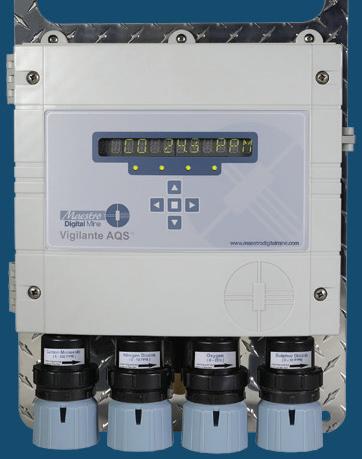
• MAJOR ORDER | AT2 Aerospace secures major airship order from Arctic Airships
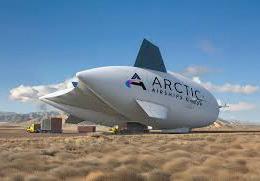
AT2 Aerospace – a Lockheed Martin spin-out and a pioneer in hybrid airship design and manufacturing – announced a significant purchase order from Arctic
Airships, a leading provider in Alaska of sustainable remote logistics.
The deal represents a major advancement in addressing the unique transportation challenges faced by many mining operations in remote Arctic regions. Approximately 70 percent of Canada’s landmass has neither railway nor road access making airships an appealing option. Mining companies have been exploring the feasibility of airships – including autonomous ones – to reach remote mining sites and in transporting ore.
The AT2 Aerospace order includes
• FIRST REFINERY | Feds commit to funding Electra’s first cobalt sulfate refinery in North America
Electra Battery Materials announced a conditional contribution from the federal government to support completion of North America’s first and only cobalt sulfate refinery.
To date, Electra has arranged US$54 million in non-dilutive funding, including US$34 million in government support – comprised of both a binding contract and a non-binding letter of intent – and a US$20 million strategic investment proposal. In 2023, Electra estimated the capital cost to complete the cobalt refinery at US$60 million, excluding first fills and commissioning costs. Additional non-dilutive funding options are in active development.
Nickel Belt MP Marc Serré commented: “Canada, with its abundance of critical mineral resources, is uniquely positioned to play an important role in the global energy transition. It is important that the government be there. Electra’s project will provide Canada with a high-quality critical mineral input that will contribute to the net-zero economy and strengthen our mining industry.”

Electra expects the facility to produce about 6,500 tons of cobalt per year, which would support the production of up to one million electric vehicles annually.
The refinery project is in the Northern Ontario town of Temiskaming Shores.
two hybrid airships with an option on eighteen additional airships. The company will be deploying these airships to support logistics in remote regions. AT2 Aerospace expects these advanced aircraft will vastly improve logistics in remote areas by providing access to locations previously considered difficult to reach, while reducing environmental impact and infrastructure requirements.
Dr. Bob Boyd, CEO of AT2 Aerospace, said, “This partnership with Arctic Airships validates our hybrid airship technology as a game-changing solution for the remote logistics sector. Our aircraft not only optimize cargo movement in challenging terrains but also aligns with the industry’s increasing focus on environmental responsibility and cost efficiency.”
• MAJORITY SUPPORT | Falco Resources releases survey showing majority support for Horne 5 underground mine project
Falco Resources published the results of an independent survey of the population of RouynNoranda and Abitibi-Témiscamingue conducted by Léger regarding the Falco Horne 5 underground mine project.
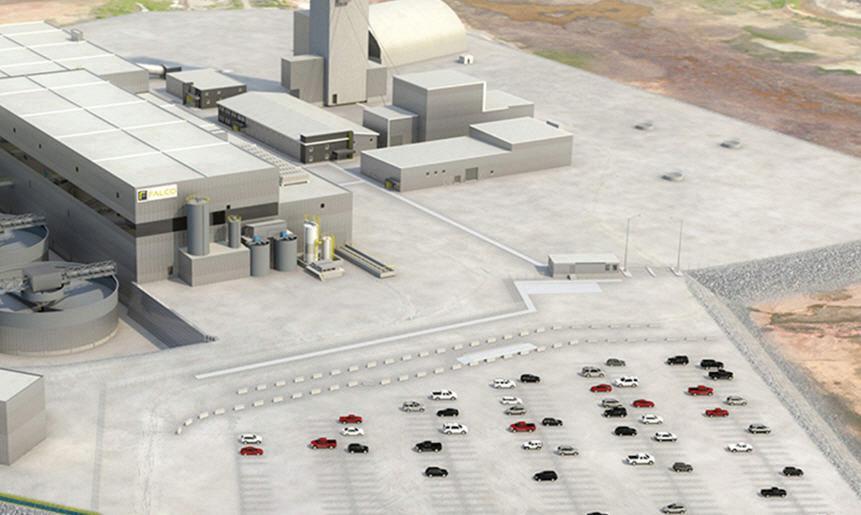
CREDIT: FALCO RESOURCES.A
The results show Falco enjoys strong majority support in Rouyn-Noranda, where 72% of respondents are in favour of the Horne 5 project, and in Abitibi-Témiscamingue, where support reaches 74%. These results demonstrate the population’s significant support for the project, particularly given its economic spin-offs and positive impact on employment.
The company will continue its discussions with the Ministère de l’Environnement, de la Lutte contre les changements climatiques, de la Faune et des Parcs to have the project’s compliance recognized and complete the environmental analysis.
The survey was conducted from February 27 to March 9, 2025, among 500 Abitibi-Témiscamingue residents aged 18 and over. The presumed margin of error is ±4.38%, 19 times out of 20.
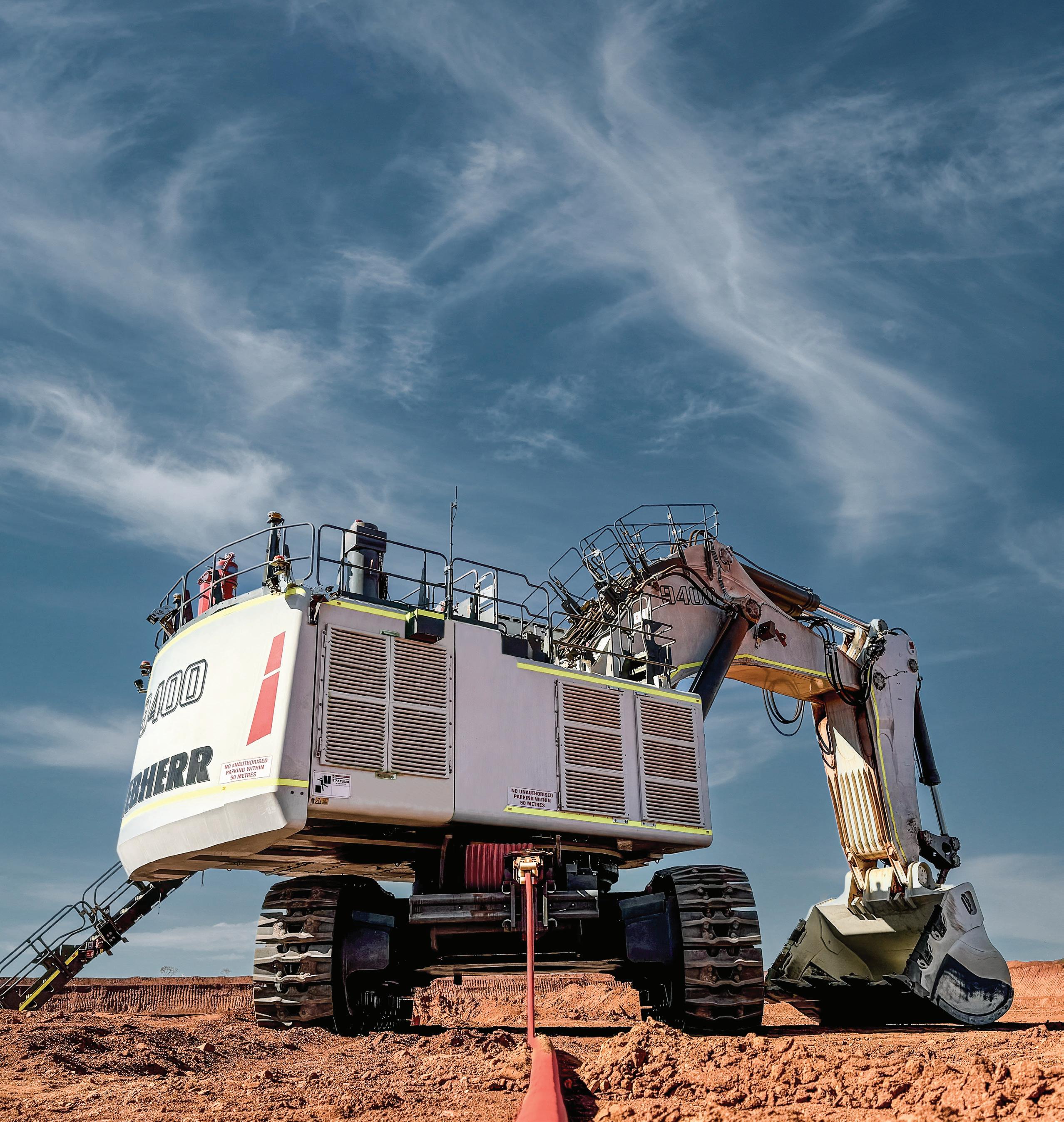
The Liebherr Zero Emission Mining Program was established to further develop the roadmap for a decarbonized future. Liebherr strives to provide customers with a range of methods to help meet emission reduction targets and is working to offer products that use alternative energy sources like batteries, electricity, and alternative and hybrid fuels. By 2030, Liebherr Mining will offer entirely fossil fuel free solutions for digging, dozing, and hauling.
• NEW MINING MAP | Sudbury unveils new online map showcasing city’s mining operations
The City of Greater Sudbury has created a new online map that will be showcasing mining facilities, mining suppliers, and any related mining infrastructure.
The city unveiled the new map at the annual Prospectors and Developers Association of Canada (PDAC) convention held in Toronto in March. The city expressed the hope that the map would lead investors and mining operators linking Sudbury with mining.
A notice on social media about the unveiling read: “This map showcases some of the key mining projects happening in the Sudbury Basin and gives a visual overview of the Basin that many have not seen before. We will be updating it regularly as things change, open and evolve.”
The website reads: “Greater Sudbury is home to the largest integrated mining complex in the world. It is located on a famous geological feature that has one of the largest concentrations of nickel-copper sulphides on the planet.”
“We are home to North America’s highest concentration of mining expertise. From capital equipment to consumables, engineering to mine construction and contracting, from mapping to automation and communications – our companies are innovators. If you’re looking for the latest in mining technology or thinking of establishing a presence in the industry – you should be looking to Sudbury.”
MAJOR ACQUISITION | Orla acquires Musselwhite gold mine
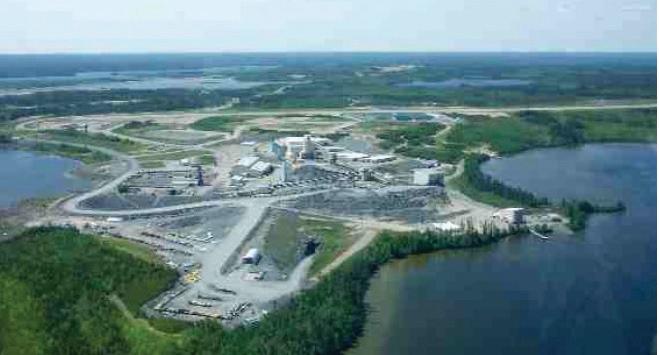
Orla Mining completed its acquisition of the Musselwhite gold mine in Ontario from Newmont. Musselwhite is a producing, underground gold mine located on the shore of Opapimiskan Lake in northwestern Ontario. It has been in operation for over 25 years, having produced close to 6 million ounces of gold to date, with a long history of resource growth and conversion.
Based only on the company’s current technical report, Musselwhite has a mine life until 2030. Significant opportunities exist to optimize the operation and extend mine life through known extensions of the ore body.
Jason Simpson, president and CEO of Orla Mining said: “The addition of Musselwhite transforms Orla into a North American-centred, geographically diversified intermediate gold producer with multiple gold-producing assets and a self-funded growth portfolio. Musselwhite strengthens our North American presence and more than doubles our annual gold production. This important Canadian gold mine also offers growth potential through optimization and mine life extension, something we intend to aggressively pursue.”
• HISTORIC EXPLORATION | Nova Scotia grants exploration licences for lithium projects
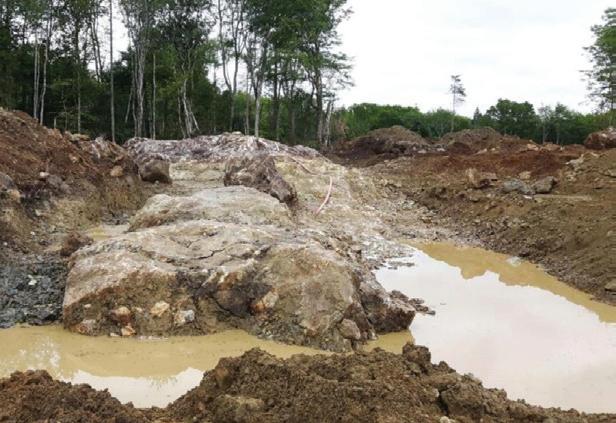
Nova Scotia’s department of natural resources has granted mineral exploratory licences for three lithium projects in the Yarmouth and Digby counties in the province. The Mining Association of Nova Scotia has hailed the move. The granting of licences comes after much-publicized recent comments by Nova Scotia Premier Tim Houston stating a willingness and necessity to explore new areas of resource development, including mining.
Sean Kirby, executive director of the provincial mining association, commented, “Nova Scotia has tremendous potential to provide the critical minerals needed to achieve climate goals, including lithium. We are excited about several lithium projects in southern Nova Scotia and exploration taking place elsewhere in the province and look forward to contributing to global supply of this key battery metal.”
Kirby added, “The global rush to source critical minerals creates an extraordinary economic opportunity for places like Nova Scotia that have the potential to provide them. The province can contribute to global supply while also generating jobs and government revenues to help pay for programs like health and education.”
The Impact Assessment Agency of Canada (IAAC) and its 15 First Nation partners invited expressions of interest from individuals and organizations that hold knowledge, expertise, information, or datasets that could support the work of the regional assessment.
The IAAC’s website said: “The regional assessment will be conducted in the area centred on the Ring of Fire mineral deposits in northern Ontario, approximately 540 km northeast of Thunder Bay. The regional assessment aims to gather information and data on the region; understand potential effects from past, existing and future development in the Ring of Fire area; and will inform and improve future impact assessments. Indigenous partners and the Impact Assessment Agency of Canada are co-leading the regional assessment and will provide Indigenous communities and organizations, federal and provincial governments, non-government organizations and the public opportunities to meaningfully participate.”
The invitation is part of the on-going conduct phase for the regional assessment of the Ring of Fire area. In addition to information that is currently in the public domain, the IAAC and its First Nation partners recognized that there may be a variety of existing information and datasets held by individuals and groups that may be relevant to the regional assessment.
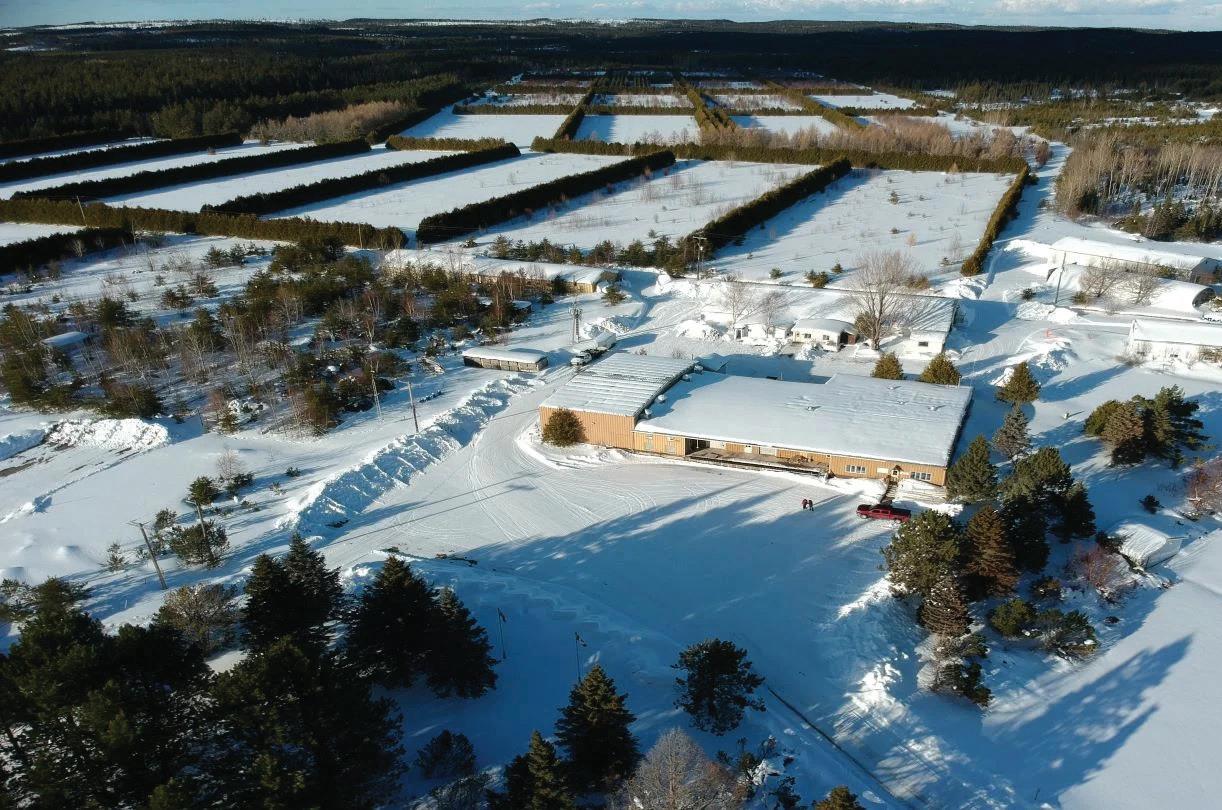
NexGold Mining announced potential positive outcomes as it works towards the completion of its feasibility study for its Goliath gold complex located in the Wabigoon Greenstone belt in
The federal government is granting a boon to critical mineral exploration in the form of a two-year extension on the 15% mineral exploration tax credit for investors. The tax credit –popular among explorers and investors – was set to expire on March 31st this year.
The move was part of a recent announcement by federal Natural Resources Minister Jonathan Wilkinson. The credit allows investors the credit to invest in flow-through shares of smaller mining firms. Mining industry analysts stated in the Globe and Mail and other media the move would likely free up $110 million to help develop mining sites, primarily in the northern regions in Canada. Much of the critical mineral development in Canada is occurring in that region.

northwestern Ontario. NexGold Mining is a gold-focused company with assets in Canada and Alaska. The company expects the feasibility study in the second quarter of this year. The Goliath gold complex project utilized a combination of open-pit and underground mining methods to extract gold ore.
The company’s feasibility study is being prepared in accordance with National Instrument 43-101 – Standards for Disclosure for Mineral Projects.
NexGold Mining also expects that progressive reclamation opportunities will be incorporated into the feasibility study to assist in the preparation and submission of a detailed mine closure plan. The company’s decision to optimize the mine sequencing will also potentially allow for earlier closure and remediation of the TSF and waste rock storage area, with the goal to be able to segment/isolate potentially acid generating and non-acid generating wastes as soon as possible.
NexGold will also minimize and reduce the areas of disturbance from mining activities through adding input from community engagement activities.
The federal government is using this capital market tool to spur investment and exploration. However, it comes on the heels of political controversies surrounding comments by U.S. President Donald Trump over Canada as well as Greenland that many believe is tied to U.S. interests in critical minerals. At present, China has maintained a stranglehold on critical mineral sites and supply chains. Canada – as well as many provinces and territories – have been racing to develop critical minerals for both economic and environmental reasons.
• DOUBLING SHIPMENTS | Hudbay and AGG set to double critical mineral shipments from Port of Churchill
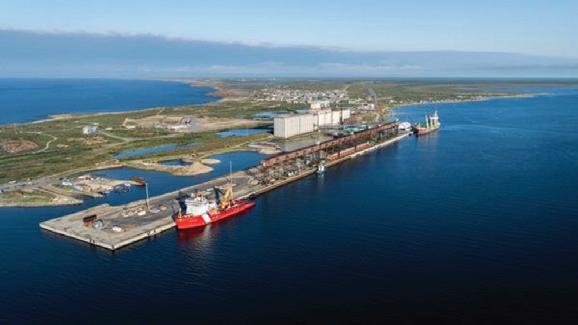
Arctic Gateway Group (AGG) announced a significant expansion of their critical mineral export partnership with Hudbay Minerals. This year Hudbay and AGG will double the volume of critical minerals shipped through the Port of Churchill. AGG also plans to triple current critical mineral storage capacity at the Port of Churchill, setting the stage for the continued growth of critical mineral exports from the Port of Churchill.
The Arctic Gateway Group is an Indigenous- and community-owned Manitoba company that owns and operates the Port of Churchill, Canada’s only Arctic seaport serviced by rail, as well as the Hudson Bay Railway, which runs from The Pas to Churchill. This announcement comes after last year’s successful shipment of zinc concentrate from the Port of Churchill to international markets.
Chris Avery, CEO of Arctic Gateway group, commented, “AGG is proud to work with Hudbay as we continue to ramp up our operations and are on a strong growth pathway. We’ve restored the Hudson Bay Railway to the best condition it has been in over 25 years, and we’re keeping it strong by investing in new advanced new railway tools. We’ve proven that we’re ready to haul, store and export Western Canada’s critical minerals to international markets and have secured the confidence of private sector partners to do so.”
By Robin Longe


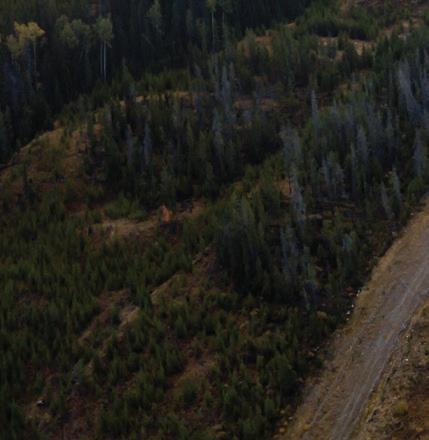

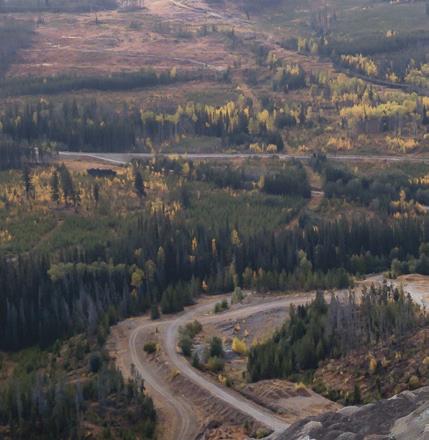
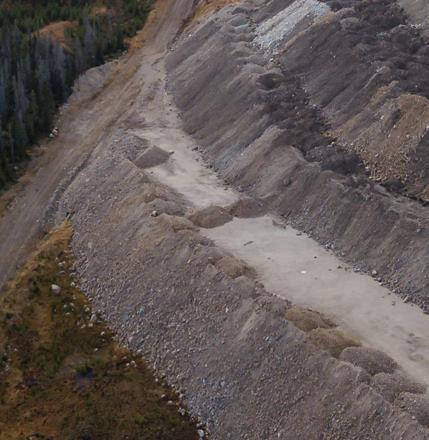

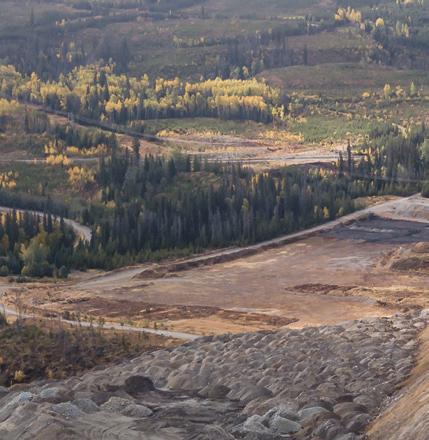
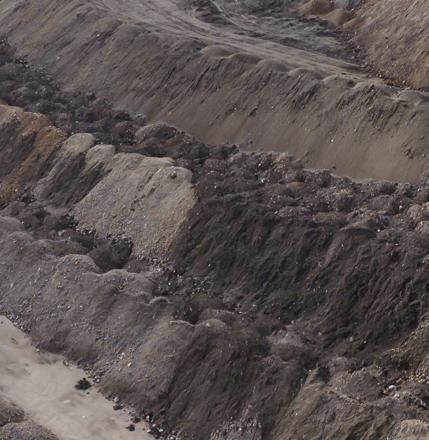
British Columbia is widely recognized as a key jurisdiction for mineral exploration and development, offering significant mineral resources together with a well-established regulatory framework. Nevertheless, the time required to secure necessary permits and authorizations can often become a concern, or even a source of frustration, for mining proponents seeking to advance their projects.
Whether submitting a “Notice of Work” application, applying for a “Mines Act” permit, or undertaking the environmental assessment process, navigating the province’s permitting process is a crucial step towards the successful development of a project. It is important for proponents to recognize that permitting timelines can be influenced by several factors, and while delays in the permitting process may arise from regulatory procedures, they can also be the result of a proponent’s deficient application or the failure to adequately consider and address the potential impacts of a project.
In this article, we offer a few tips and insights into streamlining the permitting process for mineral exploration and development in B.C.
It is important for mining proponents in B.C. to be familiar with and utilize tools and resources available to them. One such example is the Mines Digital Services (MDS) system being developed by the province’s Ministry of Mining and Critical Miner-
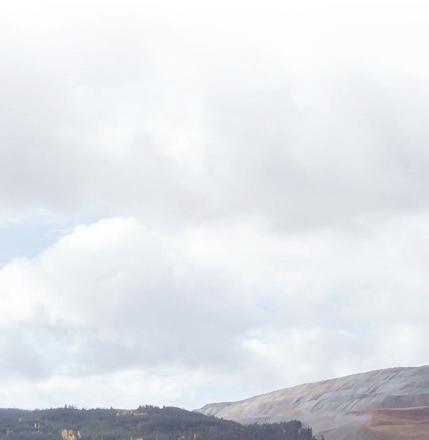

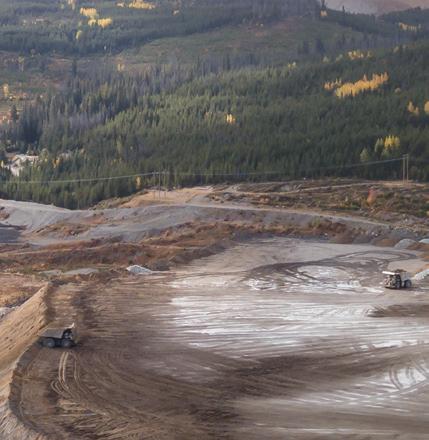
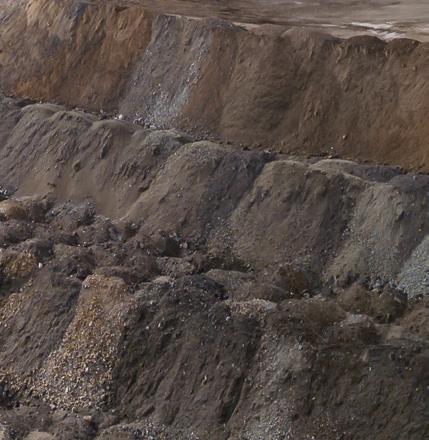
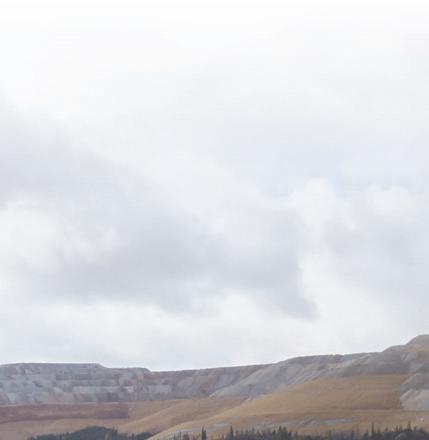

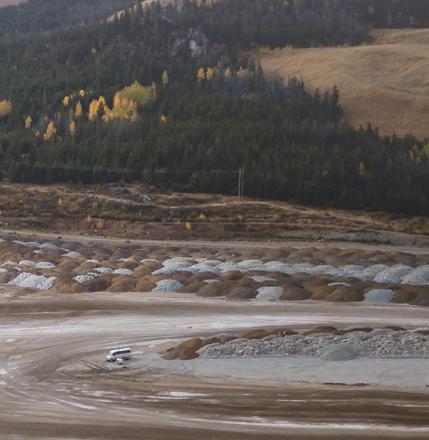
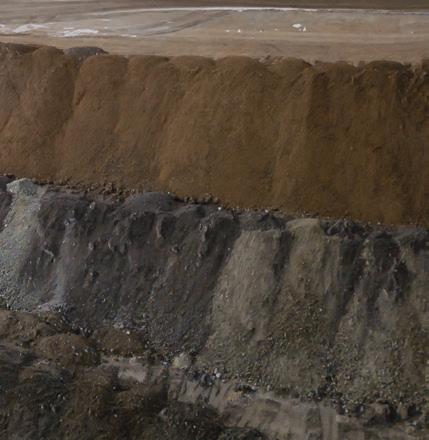

als as an initiative to modernize and streamline various processes for B.C.’s mining sector.
The MDS system includes the “MineSpace” platform, which provides several notable functions that proponents should be aware of, including the ability to (i) access mine permits and inspection histories; (ii) submit applications, incidents, and reports; (iii) check the status of submissions; (iv) manage files associated with submissions; and (v) receive in-app notifications regarding activity updates. Notably, miners are now able to receive digital credentials for their Mines Act permits directly through MineSpace, providing a streamlined way to verify the status of a permit.
Used effectively, tools such as MineSpace can help reduce administrative delays and improve communication between proponents and regulators, not only during the permitting process itself, but also throughout the lifecycle of a project.
An in-depth knowledge of the relevant legal framework is important for the preparation of successful permit applications, as it helps proponents understand the rationale behind the authorizations and decisions by regulators.
The primary legislation governing mining activities in B.C. is the “Mines Act,” which applies to all stages of a mining proj-
ect, from exploration and production to reclamation and closure. Before commencing any work on, in, or about a mine, permits must be issued under the Mines Act and, as part of the application process, proponents are required to detail the proposed work as well as plans for conservation and reclamation. Alongside the “Mines Act,” the “Health, Safety, and Reclamation Code” acts as a primary tool for the mining industry, setting out detailed regulatory standards for worker health and safety, environmental protection, and site reclamation, while the “Environmental Management Act” plays a significant role in regulating waste from mining activities. Proponents should also be aware of other provincial acts and regulations, including the “Land Act, Forest Act, Wildlife Act, and the Water Sustainability Act,” which may also apply to a mining project either now or in the future.
In addition to the legislation noted above, proponents should be mindful of any ongoing negotiations with Indigenous groups, including treaties or other agreements, in addition to Indigenous rights or title that has been asserted over the lands comprising a project, any of which may influence applicable consultation requirements associated with the permitting process in question.
Since every project is unique, with its own set of issues of importance to stakeholders, mining proponents in B.C. should always seek to engage in a process of effective and meaningful consultation. Consultation with Indigenous groups and stake-
holders is not only key to building project support but is an integral part of responsible mining and consequently influences the timely approval of permit applications.
Key strategies for engaging in meaningful consultation include the following: (i) engaging with Indigenous groups and other stakeholders early in the planning stage (even prior to any formal consultation); (ii) committing to open and transparent communication throughout a project’s lifecycle; (iii) regularly updating stakeholders on developments while promptly addressing concerns; and (iv) demonstrating commitment through timely action on community interests and the mitigation of potential impacts.
Lastly, to streamline the process overall, it is important for proponents to prioritize the preparation of comprehensive, high-quality application materials, and to adopt a proactive approach to permitting. This includes planning applications well in advance of any intended operations and carefully considering relevant factors, including the project’s location and description, environmental conditions in and around the project, and potential impacts to the project area and the interests of stakeholders.
Robin Longe is a partner in Dentons Canada LLP’s corporate group and acts as co-leader of the firm’s national mining group. Alexander Tatti is an associate in the corporate group of Dentons Canada LLP’s Vancouver office.
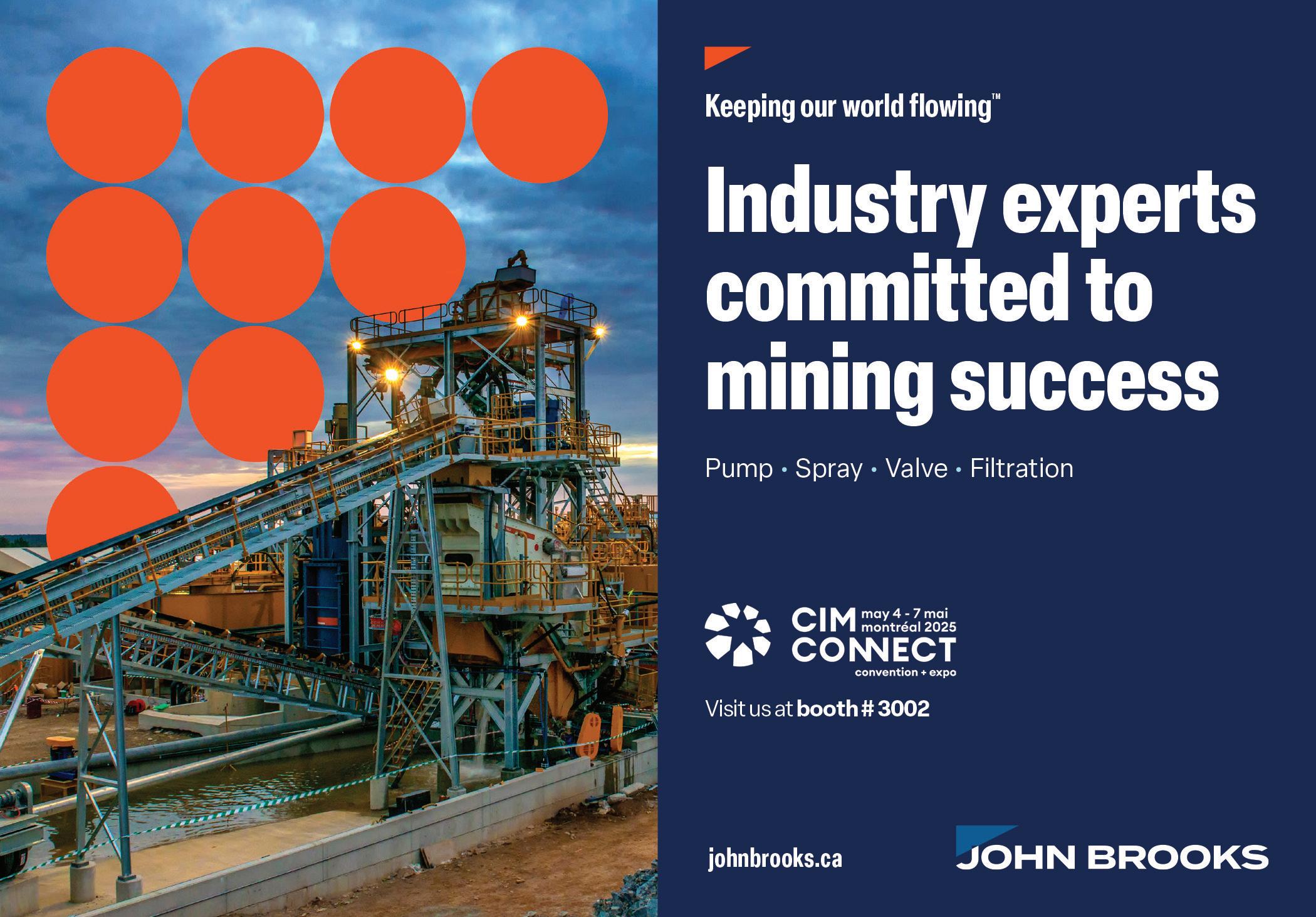
By
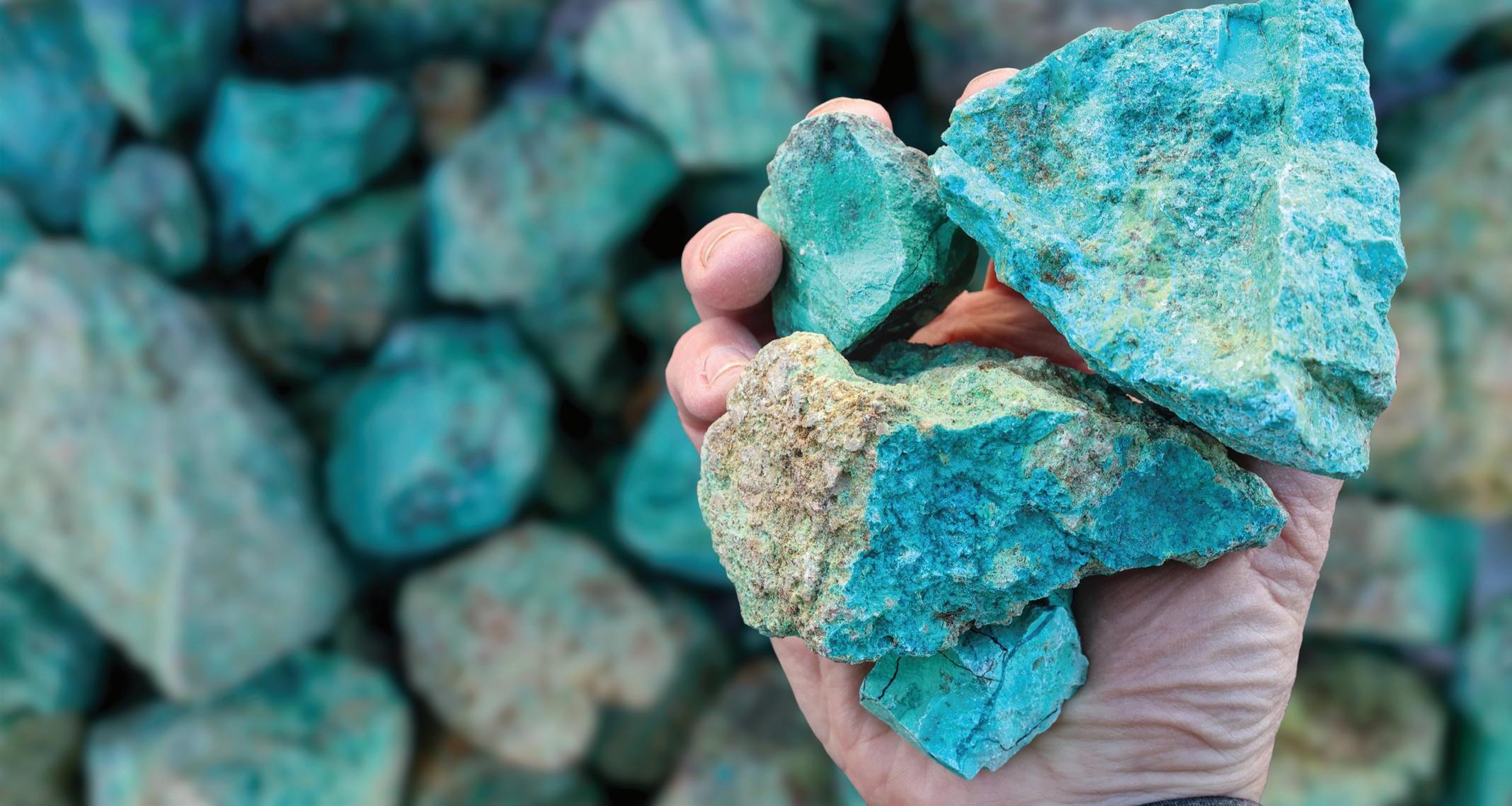
IWhat have you done today that did not involve a mineral?
n 2018, Gregory Unruh introduced the term “geomimicry,” defining it as the “imitation of physical geological processes in the design and manufacture of products and services.” This prompt a fascinating question: Is mineral processing a reverse of mineral deposit formation? To explore this, the authors compiled the comparison in Table 1, highlighting how Earth’s natural processes and human mineral processing align and diverge.
The Earth’s rock cycle continually constructs and destructs minerals over millions of years through processes like erosion, deposition, and metamorphism. In contrast, humans extract minerals and elements (e.g., potash, copper, gold, and lithium) from deposits and process them into usable forms within hours to months. Mineral processing, as a branch of extractive metallurgy, separates minerals from rock and ore into concentrates that can be further refined. Are these human-made processes mimicking Earth’s geological toolkit, or are they fundamentally distinct?
Mineral processing might appear to reverse nature’s work by breaking apart what nature has concentrated. However, the mechanisms and objectives differ significantly owing to the application of technology. While Earth’s processes are open systems operating slowly and naturally, human systems are closed, industrial, and designed for speed and efficiency. Interestingly, nature does on occasion separate out pure elements such as gold or silver. Yet humans cannot perfectly separate what nature has formed in mineral processing, necessitating refining to achieve greater purity. While nature benefits from abundant energy, an energy balance on either natural or human processing would likely reveal both to be inherently inefficient.
Both nature and humans rely on factors like gravity, water, temperature, and microbes, but humans amplify and modify these processes with tools and technology. For example, water naturally transports particles in some mineral deposits, while
humans use hydraulic systems to extract minerals rapidly. These adaptations allow humans to replicate Earth’s natural forces exponentially faster without ever fully knowing the longterm environmental cost. This is especially concerning when humans may add chemicals or genetically engineered microbes that were not originally present in the ore into the process.
Key differences suggest why geomimicry is not fully applied in mineral processing are as follows:
Timeframe: Nature’s system operates over millions of years, whereas human processes occur almost instantly by comparison. This disparity emphasizes that we must respect the finite nature of Earth’s resources, as replenishment is not feasible on a human timescale.
Spatial flexibility: Earth’s processes are bound to the geological conditions of a specific location, so no deposit will form if the region lacks the necessary conditions (heat, pressure, fluids, etc.), no matter how long the timeframe. Humans, however, can leverage resources from multiple locations globally, shipping ores and raw materials.
Selective concentration: Humans adapt technology to concentrate specific minerals or elements for removal from a property. In contrast, nature’s processes are holistic, shaping entire landscapes and ecosystems.
Landforms changes: Human extraction permanently alters local/regional geology, often leaving behind segregated waste piles. In contrast, nature continuously reshapes landforms and ecosystems without creating permanent depletion.
Earth’s mineral deposits are akin to a savings account built over millions of years. Humans act as both spenders and managers of these resources. Yet, without careful management, we risk exhausting this account, leaving little for future generations. Humans have leveraged incredible ingenuity to develop pro-
Table 1.
PARAMETERS
Landscapes and ecosystems
Geomimicry
Natural accumulation
Nature’s processes inspire human designs for mineral processing
Goal Nature builds mineral deposits over time
Time
Processing
End use
Cost to humans
Mineral recovery
Rock, mineral, element breakage
Supplies
Millions of years
Nature concentrates minerals/elements through physical/ chemical processes including erosion, gravity, hydrothermal activity, magmatic differentiation, metamorphism, precipitation, and sedimentation
Geochemical and microbial interactions with minerals liberate elements (e.g., Na, Ca, K, Zn, Si) that plants metabolize to grow
Unnoticeable, through to natural disasters
Orebody stores 100% of the minerals available
Natural: Mega to nano scale tectonics (e.g., faulting) and erosion break rocks for subsequent mineral/element extraction; plant roots and freeze-thaw cycles also break rocks
Local/regional geology
Transportation Movement by fluids (e.g., water or magma), glaciers, and gravity
Mineral accumulation
Elements
Pressure
Temperature
Water chemistry
Dewatering
Energy source
Sorting
Microbes
Waste
Recycling
Acid rock drainage (ARD) when geology appropriate
Minerals grow, crystallize and deposit
Minerals incorporate various elements
Ambient to several bars
Ambient to 600oC
Meteoric and/or hydrothermal waters transport leachate metal elements/ions
Water in fluids eventually dissipate
Overburden pressures, plate tectonics, and weathering
Rock and ore deposits are homogeneous, layered, or zoned depending upon ore genesis
Aid in deposit formation and mineral/element concentration
Concentrated in the matrix of the orebody
Ongoing process of Earth to construct and deconstruct deposits
Natural sulfuric acid leaches metals, resulting in acid rock drainage (e.g., supergene deposits)
cesses that mimic geological forces, but are we truly respecting Earth’s limitations? Mineral processing is not truly the reverse of mineral deposition, instead, it is an extension of nature’s processes. Earth’s systems will continue to persist, with forces far surpassing human activities.
This brings us back to the reflection in the November 2024 and December-January 2025 articles of the Canadian Mining Journal: What have you done today that did not involve a mineral? As we enjoy the benefits of extracted resources, we must also consider the long-term impacts of our actions. Are we leaving enough for future generations to thrive, or are we depleting Earth’s natural resources value chain?
Synthetic accumulation based on sorting out waste
Human processes sometimes emulate natural processes
Humans deconstruct ore to extract valuable minerals
Hours to months
Humans isolate through industrial techniques (blasting, comminution, flotation, gravity, leaching, magnetics, precipitation, and refining) that employ physical/ chemical processes for a concentrated metal, gem, or industrial mineral
Chemical (microbial) interactions with minerals liberate elements (e.g., Cu, Au, Ag, Fe, Pb, Zn, Si) for commercial products like cell phones
Immense financial investments are required for extraction through to reclamation
Depending on the process employed, recovery can vary significantly (30% to 98%)
Anthropogenic: Humans use blasting, crushing, and cutting techniques to break rocks, enabling mineral/ element extraction and processing
Local/regional/global geology
Movement via equipment such as trucks/conveyors
Existing minerals are recovered and concentrated by processing
Minerals may be processed to extract various elements
Ambient to several bars
Ambient to 200oC
Ground or surface water sources are modified by manufactured chemical solutions
Concentrates are dewatered
Manufactured electricity
Hand and/or mechanical sorting such as cutting, precipitation, and sieving
Aid in mineral decomposition including processes such as bioleaching
Separated out and stored as tailings/waste rock
Selective and inefficient recycling by humans
Concentrated tailings and processing chemicals of appropriate chemistry result in ARD
Let us ponder not only to the power of Earth’s systems but also the responsibility we hold in managing them.
Connections within the industry can expand our knowledge. Bruce Downing, a geoscientist consultant based in Langley, B.C., combines research, education, geochemistry, and industry in geoscience. Donna Beneteau, an associate professor in geological engineering at the University of Saskatchewan, combines academic insight with industry experience in mining. Daniel Hamilton, a metallurgical engineer turned laboratory engineer at at the University of Saskatchewan, bridges practical and research applications in mineral processing.


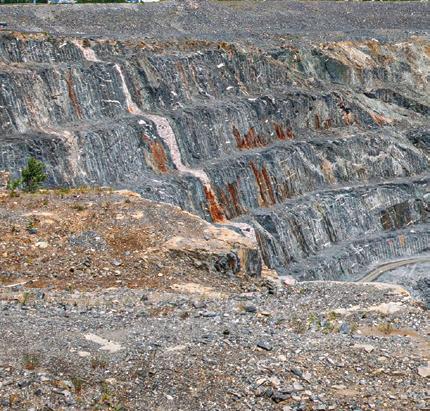


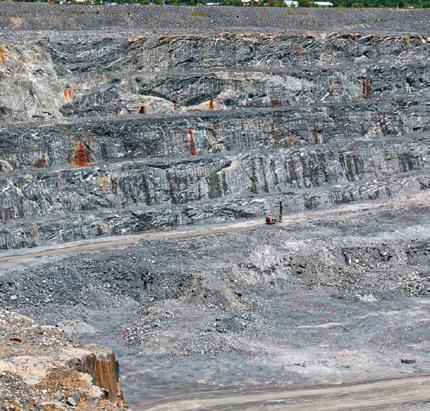



There are moments in every career when you pause and reflect not just on what you do, but why you do it. For me, that reflection always leads back to a quiet but steady sense of pride. I work in mining innovation in Canada. And to me, that is something worth being patriotic about.
Patriotism is often associated with flags and anthems, but I believe it can also be found in the work we do. When I think of mining in Canada, not just the mines but the entire supply chain, I see a deeply Canadian story; one of resilience, responsibility, innovation, and collaboration. I see people who go underground or into remote field camps, who work in labs and offices and workshops, all contributing to something much larger than themselves. And I believe that this story deserves more recognition not only within our industry, but also in the broader national conversation.
Mining has played a significant role in shaping Canadian identity, reflecting the country’s history, economy, and cultural development. From Klondike to Sudbury, from Val-d’Or to the Ring of Fire, we have extracted more than ore; we have pulled communities out of the wilderness, built towns and economies, and contributed to national prosperity in ways that are often overlooked or misunderstood.
There is quiet humility to how we operate in this sector. Maybe it is our Canadian nature, but we do not always talk about mining with pride. We let the headlines dwell on controversies or environmental challenges without balancing them



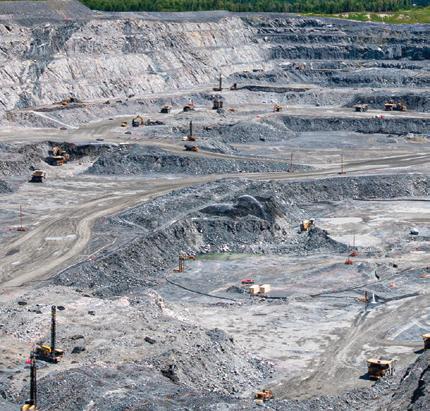


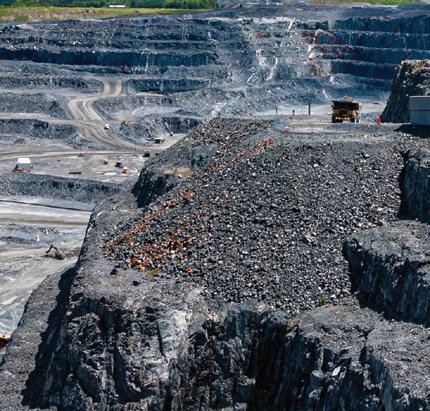



with stories of responsible development, groundbreaking technology, and a deep cultural respect for the land. And yet, those stories exist in abundance especially here in Canada.
When I see a haul truck roll out with sensors that help it avoid a collision or hear about a miner finishing their shift early thanks to AI-assisted decision making or talk to a young tradesperson who just completed their CWB welding certification to work at a mine site in the north, I do not just see progress; I see purpose. I see a country living its values through its resource sector.
Mining innovation is not only transforming operations but also creating opportunities for more meaningful and fulfilling work across the industry. In my own role, I have the privilege of working on the innovative side of mining. Whether it is introducing electric vehicle technologies to underground environments or helping industry partners adopt artificial intelligence and machine learning, the goal is always the same: make mining better, safer, leaner, more efficient, and human centered.
There is something uniquely satisfying about knowing the work you are doing is not just about the bottom line. It is about reducing diesel particulate exposure to workers. It is about minimizing environmental footprints. It is about using data to protect lives, not just optimizing operations. And every time we push a new idea forward or pilot a piece of new technology, I
am reminded that this is Canadian work. This is what it looks like when we apply our values to our industries.
Canadian mining innovation does not chase hype, it builds for longevity. We prioritize environmental, social, and governance (ESG) principles not because it is trendy, but because it is who we are. We push for safety not just to meet regulations, but because we genuinely care about our crew. And when we design or deploy new technologies, we do it with an eye toward integration, sustainability, and long-term benefit not just headlines.
Canadian mining increasingly reflects the nation’s core values of sustainability, inclusivity, and responsible resource development. In many ways, Canada is uniquely positioned to lead in the future of mining not only because of our mineral wealth, but also because of how we approach mining itself.
While we still have much work to do, we have made significant strides in Indigenous engagement and inclusion. A recent positive example is Technica Mining’s collaboration with Atikameksheng Anishnawbek and Wahnapitae First Nation with the Aki-eh Dibinwewziwin Limited Partnership (ADLP), a mine contracting partnership. Moreover, our environmental assessment frameworks, while complex, are among the most robust in the world. Our workforce is highly skilled and increasingly diverse. Our world-renowned tech sector is contributing to solutions to age-old problems, and our colleges and research institutions are rising to meet the industry’s evolving needs.
When you look at the global landscape, Canadian mining stands out not just for the commodities we produce, but for the way we produce them. We are exporting more than just copper or nickel; we are exporting trust, reliability, and a model for how mining can be done ethically and efficiently.
It is time to renew our sense of pride in the mining sector by recognizing its vital contributions to Canada’s economy, communities, and clean energy future. Mining is not just a job. For many, it is a legacy. For others, it is a calling. For all of us, it is an opportunity to build, improve, and lead.
We need to start telling that story more confidently. The average Canadian may not see the connection between their smartphone and a nickel mine in Ontario, or between wind turbines and rare earth elements from our north, but we do. And we should be proud of it. We are not a sunset industry, we are the foundation of every transition that matters, from electrification to decarbonization.
So, to those working in the mining sector across Canada — in the field, in the shop, in the lab, and in the boardroom — I want to say this: your work matters. You are part of something deeply Canadian. Something worth celebrating.
Steve Gravel is the manager of the Centre for Smart Mining at Cambrian College.


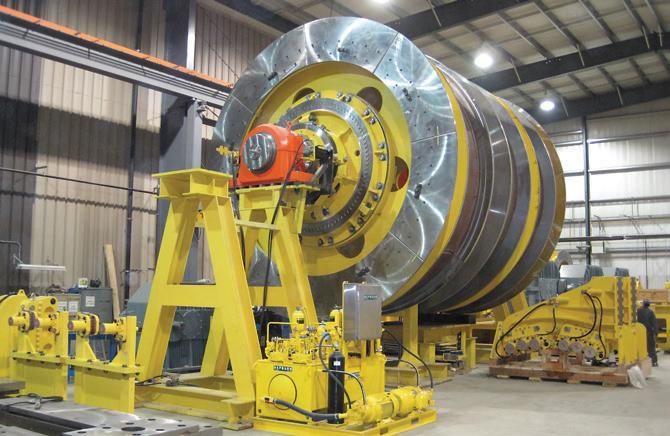

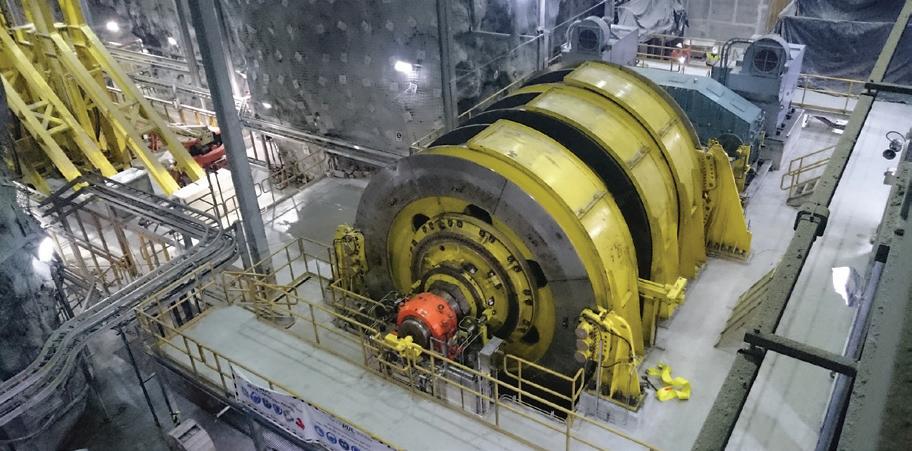


By John Sandlos
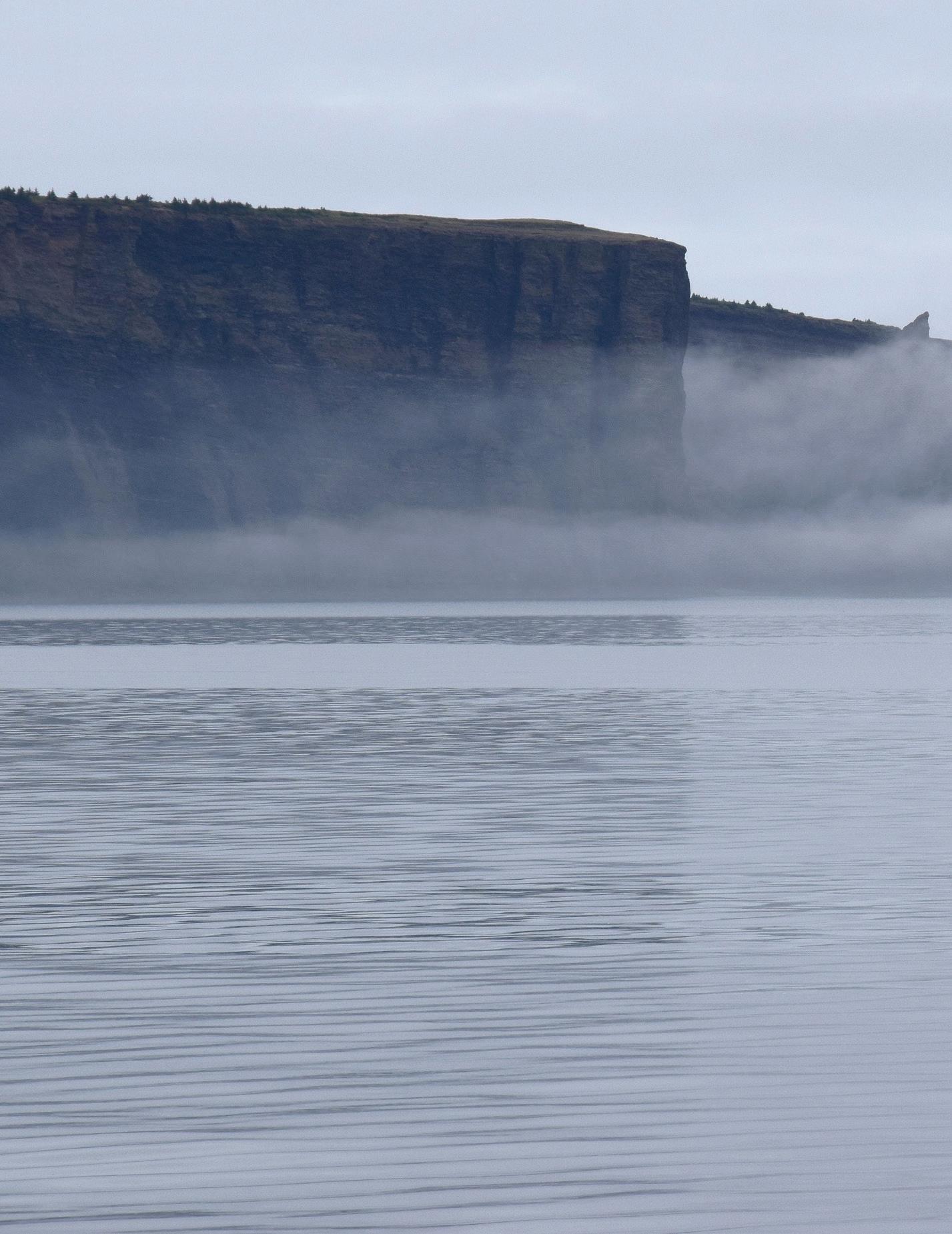



When I first moved to St. John’s, I heard about Bell Island almost every morning on the radio. If the traffic report said the ferry is moving well on the tickle (a narrow straight in Newfoundland English), that meant commuters to and from what is essentially a bedroom community for the nearby provincial capital had escaped the common delays of rough seas, bad weather, or mechanical breakdown — at least for one day. Eventually, I took my two boys out to Bell Island as they got a bit older, but not so old they would not find the ferry ride a big adventure. Bell Island is not a big place (about 34 km2), but between picking wild cranberries, eating the best fish and chips in the St. John’s area (at Dicks’, right by the ferry terminal), and hanging out at the lighthouse, there was no shortage of things to do.

One of the biggest thrills of all was visiting the “No. 2 Mine Tour and Museum” near the main town of Wabana. Here, we learned that the mine had begun in 1895 as a small open pit (surface) iron operation, but an American industrialist, Henry Melville Whitney, purchased some of the Bell Island holdings in 1899 as a source of iron for his new Dominion Iron and Steel Company steel mill in Sydney, Nova Scotia (the remainder of the Bell Island claims were owned by the Scotia Company, who operated a smaller steel mill in Sydney). By 1902, Dominion Iron and Steel and Scotia had depleted the surface deposits at Bell Island and began to push tunnels out under the sea, using room and pillar mining to extract the iron ore. Before the mine closed in 1966, miners had produced nearly 80 million tonnes of ore, 25% of the iron used in Canadian steel production while the mines remained open. The Bell Island mines had doubled its annual ore production between 1935 and 1965, peaking at nearly two million long tonnes of ore annually, but the surbit



face mines of the newly developed Labrador and Quebec iron mining complex were cheaper to operate than the complex sub-seabed mines of Bell Island and yielded a higher-grade ore. The last of the Bell Island mines (No. 3) closed in 1966. The island’s population dwindled from 12,000 to roughly 2,000 people today. As if to drive home this point, at the end of our tour the guide whirled a light toward the end of a tunnel, revealing how seawater had reclaimed much of the former mine.
A mine is always much more than the ore it produces, and Bell Island seems to have more than its fair share of colourful characters. In her popular book, “The Miners of Wabana,” local historian Gail Weir documented the quirky beliefs and habits of the Bell Island miners. Some, for instance, invoked taboos against calling on men who had slept through their shift because it meant certain death for the latecomer. Experienced miners often played pranks on the newbies, sending them to the shop for a fictitious “skyhook” or asking them to fill a wheelbarrow with smoke. Folk beliefs permeated the cultural life of the mines. Miners and their family members often claimed they had seen the ghosts of those killed in accidents, chilling late-night sightings of miners underground or on the surface who left no footprints. Others claimed to have seen, and even spent time with, diminutive faeries, encountering them in the mine and on the surface. Perhaps more tangibly, miners also maintained close relationships with animals, caring for the horses that worked in the mines and sometimes adopting individual rats that lived underground as pets. Of course, work at the Bell Island mines was primarily devoted to drilling, blasting, mucking, and hauling, the same as miners anywhere else in the world. But Weir’s account of Bell Island is



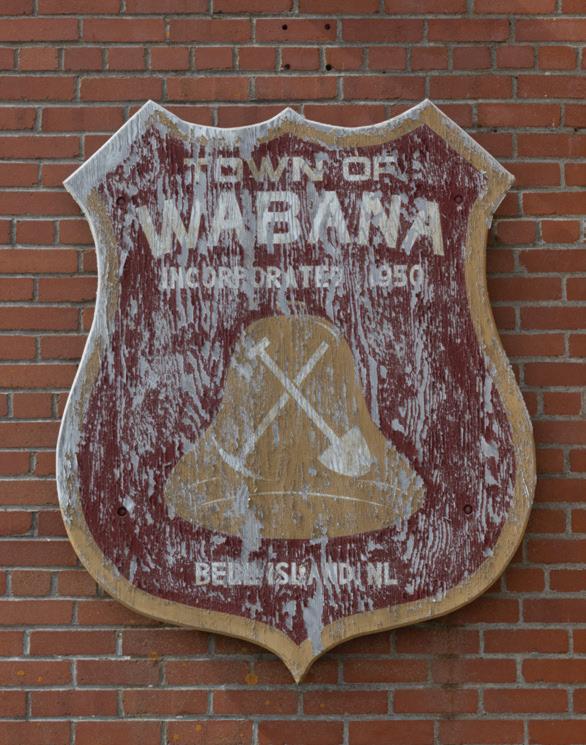
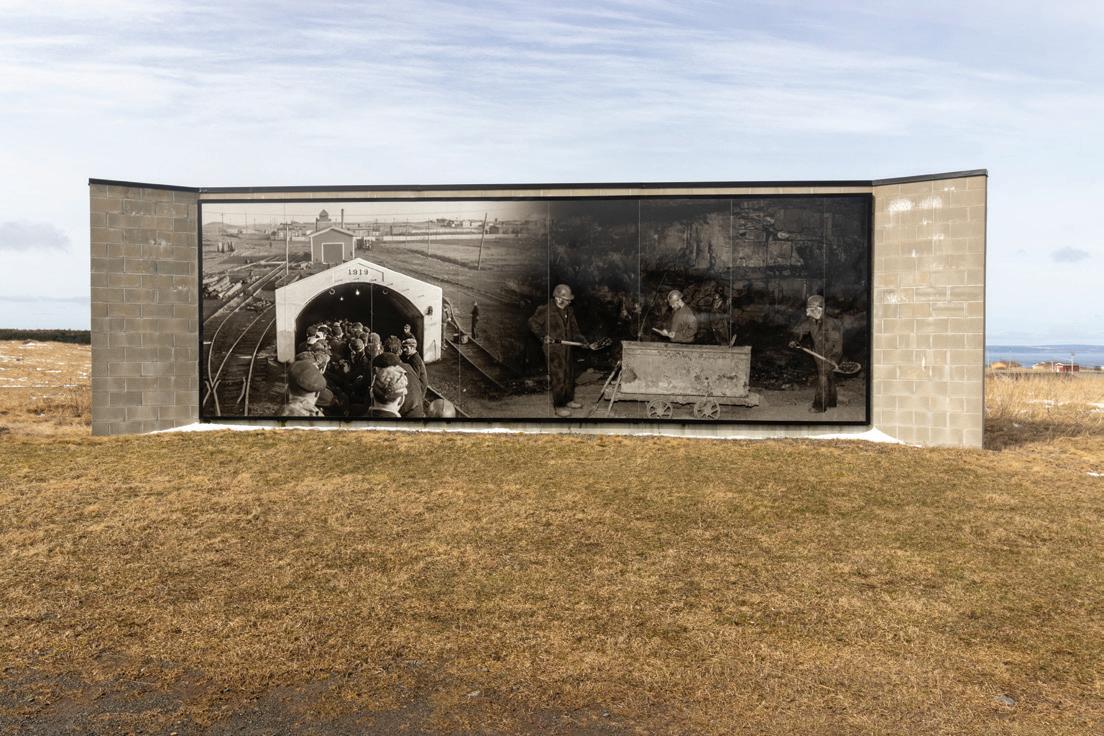

a good reminder of the unique cultural practices that may develop in tandem with a mine.
















Bell Island is also exceptional as one of the few places in North America to come under direct German attack during World War Two. Newfoundlanders were aware of the threat from German U-Boats, as news of torpedo attacks on North Atlantic shipping convoys featured prominently in local newspapers. In March 1942, three explosions rocked the south side of St. John’s Harbour as a German submarine bounced torpedoes harmlessly off the rock. But on September 5, 1942, Bell Island iron ore became a target as the submarine U-513 followed a coal boat into Conception Bay and settled on the ocean floor at 20 metres depth close to the ore carrier loading docks. The next day, U-513 sank two ore carriers, the SS Lord Strathcona and the and the SS Saganaga, killing 29 crew members. Although military censors kept news of the attack out of the press, word of mouth accounts of the tragedy spread, and Canadian navy commanders beefed up anti-submarine patrols around Bell Island.














Even so, another attack occurred on November 2, 1942, as U-518 arrived with the explicit mission of attacking iron ore carriers headed for Sydney. Weir interviewed one Bell Island resident, Joe Pynn, who claimed he saw the submarine in the days leading up to the attack and tried to warn the Canadian navy, but nobody believed him. The U-boat aimed its first torpedo at the SS Anna T., but missed, hitting the pier, resulting in a loud explosion that alerted Bell Islanders to the attack. U-518 then sunk the SS Rose Castle, killing 28 crew, and then a Free French ship from North Africa, PLM 27, killing 12 crew. These two attacks compounded other tragedies that had occurred that fall, most notably the sinking of the Caribou on October 14, a passenger

ferry on route from Sydney to Port-aux-Basque, with 167 people lost at sea. At Bell Island, the Canadian Navy managed to prevent further U-boat attacks by installing protective steel netting around the pier, but the heavy toll of U-boat attacks had brought the war home to Newfoundlanders in a terrible way.
As with so many places where a mine has shut down, Bell Island has harnessed its mining history to re-brand itself as a tourist destination. In addition to the mine tour, the No. 2 Museum displays a collection of remarkable photographs by famous photographer Yousuf Karsh, who visited Bell Island in 1953 to document the working life of the miners for Maclean’s Magazine. In 1990, a group of Wabana residents organized a mural project to commemorate the town’s mining heritage and attract visitors. Scuba diving tours of the shipwrecks are popular, while in 2016 the Royal Canadian Geographic Society funded a diving expedition into the old mining tunnels. From 1997 to 1999, a theatre group produced a play, “Place of First Light: The Bell Island Experience,” based on the lives of historical figures who worked in the mines. In 1988, the Canadian government designated the mine workings of Bell Island as a site of national historical significance, recognizing its contribution to the Atlantic steel industry and its status as Newfoundland’s most important mine.

John Sandlos is a professor in the History Department at Memorial University of Newfoundland and the co-author (with Arn Keeling) of “Mining Country: A History of Canada’s Mines and Miners,” published by James Lorimer and Co. in 2021. His new book, “The Price of Gold: Mining, Pollution and Resistance in Yellowknife” (also co-authored by Arn Keeling), will be released with McGillQueen’s University Press in 2025.

By Tamer Elbokl, PhD
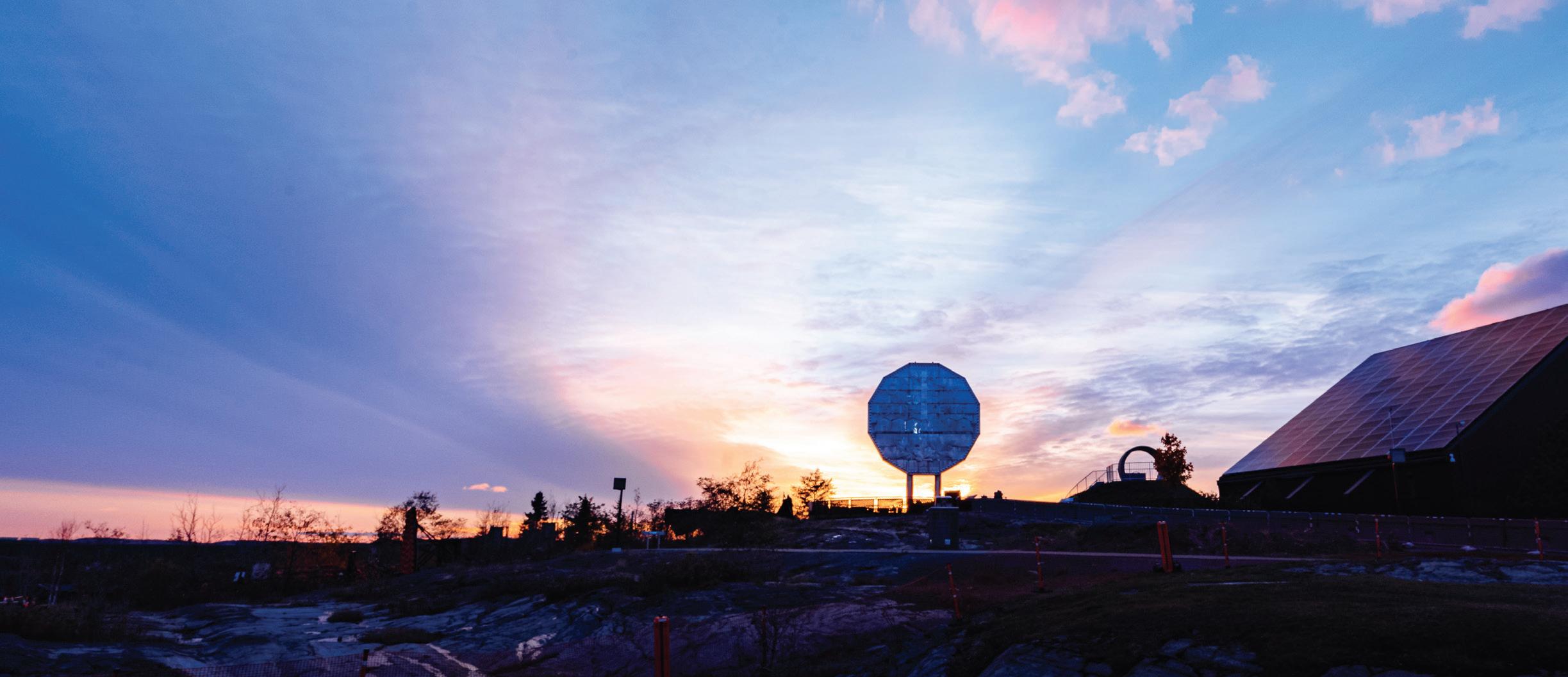
Few figures have shaped Ontario’s mining landscape as profoundly as Chris Hodgson (CH). He has left an indelible mark on Ontario’s mining industry. His career, which spanned both politics and industry leadership, showcases his unwavering dedication to the sector. Hodgson’s journey from natural resources critic to mining minister, and ultimately to a 20year tenure as president of the Ontario Mining Association (OMA), reflects a deep commitment to advancing the sector. In this wide-ranging interview, Hodgson speaks with the Canadian Mining Journal about his unexpected entry into mining, the tough decisions that defined his time in office, and the major strides made under his leadership — from groundbreaking safety reforms to reshaping public perceptions of the industry. With decades of experience bridging government, industry, and communities, he offers insights into the evolution of mining in Ontario and what lies ahead for the province’s critical minerals future.
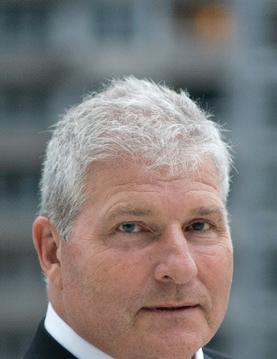
job for 20 years and is also a former member of the legislature. The OMA approached me in 2004 and asked if I would consider replacing him. I initially wanted to be there for only two years, but it turned out to be 20 years. The OMA is a great group of people to work with. The whole experience was 30 years from my first exposure to mining.
CMJ: WHAT WERE SOME OF THE MOST CHALLENGING DECISIONS THAT YOU HAD TO MAKE AS MINISTER?
CH: One of the most challenging decisions was lifting the Land Caution on the Temagami area and initiating the mineral exploration survey called Operation Treasure Hunt. There was an issue in the 1980s and 1990s that paralyzed the interior government with different factions, and we were able to pull them together. I got along well with the First Nations and the environmentalists in that area. They could see the benefit of mining there and were interested in seeing the potential. It was a great success story.
CMJ: LOOKING BACK, WHAT ARE YOU MOST PROUD OF DURING YOUR TENURE AS PRESIDENT OF THE OMA?
CMJ: TO START OUR CONVERSATION, CAN YOU TELL US ABOUT YOUR JOURNEY SERVING BOTH AS A MINING MINISTER AND AS THE PRESIDENT OF THE OMA?
CH: I was elected to the Ontario legislature in a 1994 by-election, and I was appointed as critic of natural resources. I spent a bit of time with Mike Harris in Northern Ontario in the lead-up to the 1995 provincial election, and after the election, Premier Harris asked me to join his cabinet. It was a small cabinet with only 18 members. I was given what had been three ministries in the previous government: Northern Development, Mines, and Natural Resources, which included parks at that time. My assistant deputy minister in Mines, John Gammon, was very knowledgeable and basically educated me on mining. Through his teachings, meeting miners, and forming working groups that included people from exploration through to operations, I got a good understanding of mining. I retained Northern Development and Mines until 1999 and retired from politics four years later. My predecessor at the OMA was Patrick Reid, who had the
CH: I am proud of our work with Ontario’s chief prevention officer. Through the 1970s and up to 2014, safety incidents resulted in management and labour hiring lawyers spending weeks in judicial inquiries at huge expense. Big reports were issued, but they would just sit on the shelf — they did not improve the numbers in terms of safety. When Ontario created the Mining Tripartite Committee, the government, management, and labour were able to work on issues to improve mine safety. That resulted in a continual improvement in lost time injuries. In the 35 years from 1975 to 2010, the Ontario mining industry achieved a 96% improvement in lost time injury frequency and, today, performs better than the Workplace Safety and Insurance Board (WSIB) industry average (public and private sector).
We worked with George Gritziotis, the chief prevention officer, to set up the Mining Health, Safety, and Prevention Review. That was a very successful collaborative approach that brought all stakeholders closer together instead of it being a confrontational process. All sides learned a lot and brought in
some new ways to improve safety.
We also overhauled the “Mining Act” twice and introduced the “Building More Mines Act.” We helped shape Ontario’s first ever critical mineral strategy. We published economic labour research reports that help the public get a clear snapshot of the economic and social benefits of mining for Ontario.
Some of the accomplishments I am most proud of are our public outreach programs. With “Mining Matters” and the “Canadian Ecology Centre,” we implemented a teachers’ tour, where teachers are exposed to modern mining, learn the benefits and how it works, and then pass that knowledge on to their students. We launched the “This Is Mining” campaign to celebrate the centennial of the OMA, which included an award-winning podcast, and this later evolved into “This Is Mine Life” — an initiative that aims to encourage more young people to consider careers in mining. We ran the “MINED Open Innovation Challenge” in 2017 and 2018 (where university students solved a real-life mining challenge). We worked with Moses Znaimer at the “ideacity conference” to expose a new audience to modern mining. We also hosted the “So You Think You Know Mining” contest from 2009 to 2016, where students put together short videos on mining. For that contest, we gave away thousands of dollars in prizes, we had judges from the Toronto International Film Festival (TIFF), and the premiers and cabinet ministers attended the awards ceremonies. The winners were mostly young people in the arts community who would have never been exposed to mining. It was a lot of fun and a great opportunity to see young people interacting with the mining community.
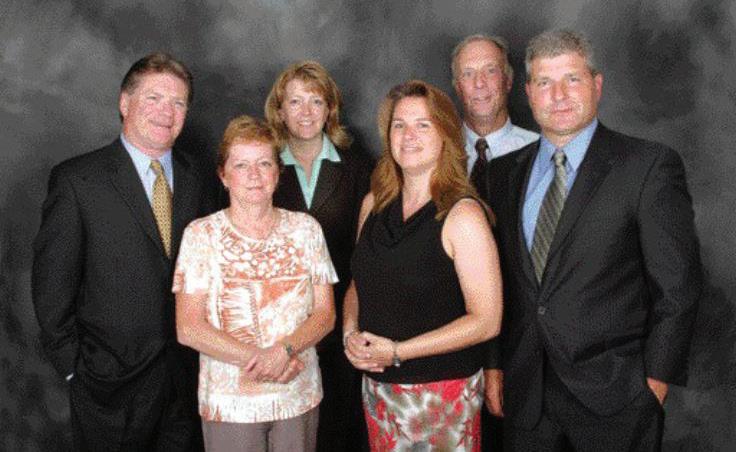
We recognized the need to redefine mining’s reputation (rebrand mining), reach young people, and make sure that the public understood how essential mining is to our modern society. So, we polled the public every year to make sure our message was getting through. At first, there was a lack of understanding: people thought we were running 19th-century coal mines in Charles Dickens’ world. Now, the polling shows unbelievable support on the environmental side of mining. People realize that if you are going to achieve a carbon-neutral state by 2050, you need mining to be the backbone for those improvements in technology. It all comes from minerals. People also see the need for local supply chains and manufacturing —

the public was ahead of the politicians on this one. Given the current trade situation, everyone is realizing the critical role mining playing in supply chains needed for advanced technologies that play an important role in our geopolitical and economic security.
CMJ: HOW HAS ONTARIO’S MINING SECTOR EVOLVED OVER THE
YEARS? WHAT DO YOU SEE AS ITS BIGGEST ACHIEVEMENTS?
CH: I think safety has always been the top defining aspect in the culture of mining, and in Ontario, we have really improved lost time injuries. We use better technology, like sensors and remote drilling to mitigate the risk of injury. Injuries do still happen, and they are so heartbreaking for families and communities,







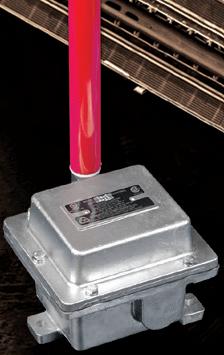


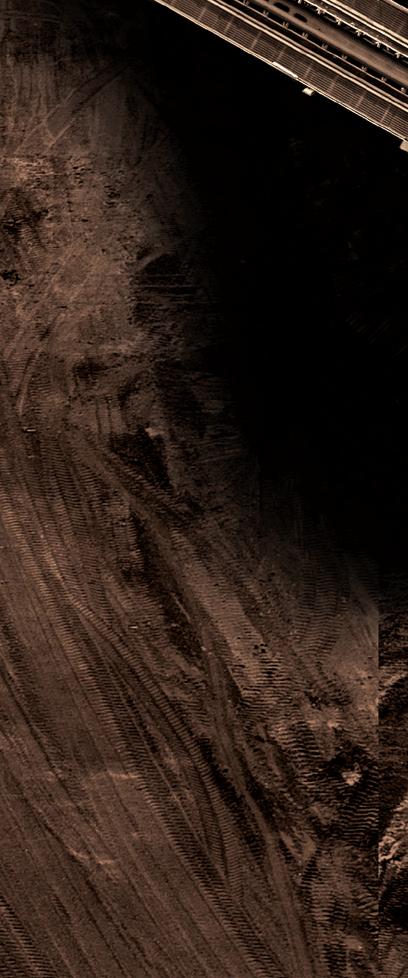
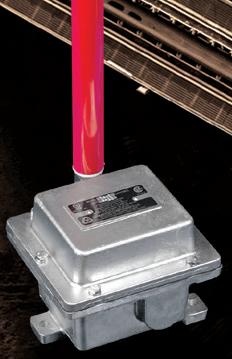
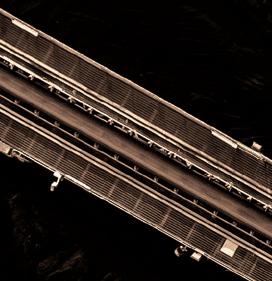







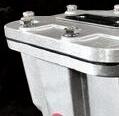
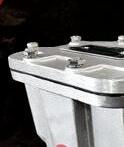
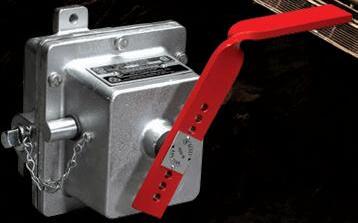



















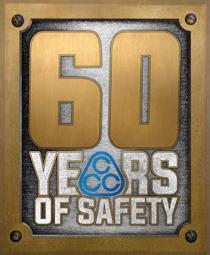











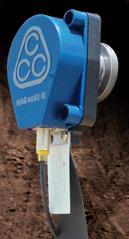


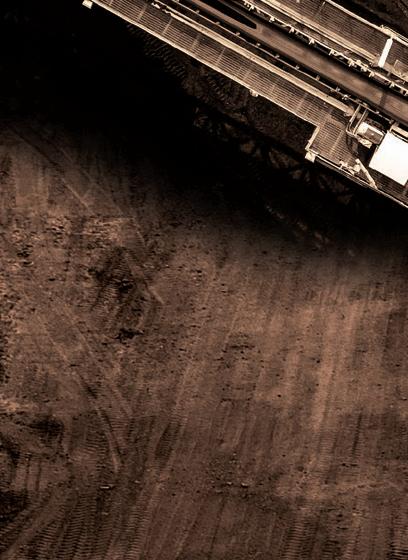


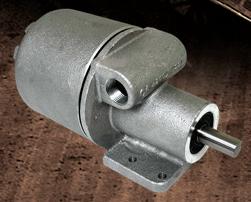

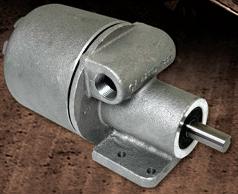







so safety has always been the focus. Our industry has been at the forefront of adapting to make sure that mining is done in a more sustainable, environmentally friendly manner. Not only do our products reduce carbon in the world, but we also walk the walk in our operations. Carbon footprints have dramatically decreased, electricity has replaced diesel, and technology is allowing us to reduce pollution and greenhouse gas (GHG) emissions at a faster rate than we used to. For example, real-time monitoring of the airshed around Sudbury was not possible 40 years ago. In the old days, everybody wanted things modelled, but we have shown that modelling can be inexact and twisted to fit someone else’s agenda. Real-time testing avoids those issues. We have not always been early adopters of new technology because it is so expensive, and mistakes are costly, but when a technology is proven to improve safety and environmental protection, our industry has really invested in it. It has been a pleasure to work with miners and see these achievements over the last 30 years.
CMJ: THINKING ABOUT THE PERMITTING PROCESS FOR MINING IN ONTARIO, AND CANADA IN GENERAL, WHAT KIND OF ADVICE WOULD YOU GIVE TO THE POLICYMAKERS TODAY REGARDING MINING REGULATIONS AND PERMITTING?
CH: The OMA has a strong culture of bringing people together, and I think they should continue that type of forum, whether it is a minister-led advisory that we are part of or we are working with labour and management on a new type of forum. The bottom line is that the world has changed. Mining is more important now than it has been in the last five or six generations. We need more mines, shorter permitting time, and robust environmental protection, but the processes must be way more efficient. I think governments are reacting to that at every level in all parties. You must gather the right people and understand the details to sit down and say, “Our goal is to shrink
permitting process from 15 years down to five, or even shorter. What are the key things that we need to do, and how can we then reverse engineer it?” I think the best forum to do that is with the OMA, government, labour, and some environmental groups. Indigenous communities and First Nations must be involved in that reverse engineering to come up with what they need.
CMJ: IN YOUR OPINION, WHAT ARE THE BIGGEST RISKS OR CHALLENGES FOR THE FUTURE OF MINING IN ONTARIO?
CH: We will want to make sure that Ontario is part of the new manufacturing, processing, and supply chains that are being developed, and that they will last for 40 years. Ontario should be the global minerals supplier of choice, and Ontarians and the local population should benefit from this realignment of the supply chains.
CMJ: WHAT IS THE OMA’S ROLE IN THAT PROCESS?
CH: I think the OMA should stick to their values in terms of making sure that Ontario mining is competitive and can grow. Patrick Reid and Priya Tandon (my predecessor and my successor at the OMA, respectively) share the same philosophy of collaboration and making sure that our voice is not only heard but also brings people together to promote more mining. There is no other group that has the breadth of knowledge that the OMA has.
Thirty years ago, we were at the mercy of a global market where commodities were declining in real value for the previous 100 years. Buyers had the advantage, and we had to think
on behalf of the customer. Now, suppliers have the advantage; customers need our product. As they say in real estate, “It is a seller’s market.” That should change the way we regulate and manage and how we look to the future of mining. These changes could last for the next 40 years, so public policy should adapt to that or at least be cognizant of it. The OMA can play a role in promoting that and increasing public knowledge as well.
CMJ: IF YOU HAD THE CHANCE TO IMPLEMENT ONE MAJOR CHANGE IN ONTARIO’S MINING SECTOR TODAY, WHAT WOULD IT BE?
CH: I think we must keep getting younger people involved in understanding the importance of mining. We are making some good progress on that, but I would put it into the curriculum around economics. Canada is well-positioned for this new world — our natural resources are really in demand now, especially when the global supply chains are realigning — but we must get more people involved in navigating it. It cannot just be a reaction to some other country’s agenda. We need to be more proactive and more strategic.
CMJ: FINALLY, HOW ARE YOU ENJOYING YOUR RETIREMENT?
CH: I still sit on several boards, so I am keeping active. Marie and I went to Florida for a month and had our family come down to visit. We have four kids and two grandkids. Our youngest daughter just got engaged. So, things are busy, but I am really enjoying it.
Kesiah Stoker is a multi-skilled freelance writer.
























































































































(705)
(819) 797-3866
GLOBAL





QUARTERS Pittsburgh, PA, USA (412)-963-9071


















Core Nickel Corp. (CSE: CNCO) is quickly gaining traction as an emerging exploration company targeting highgrade nickel sulfide systems in northern Manitoba. Since listing in late 2023, the company has raised $3.9 million in capital, secured nearly $0.5 million in non-dilutive government funding, launched multiple drill programs, and initiated airborne surveys across key assets — all while firmly establishing itself in the globally significant Thompson Nickel Belt.
The company’s exploration efforts are centered on the Thompson Nickel Belt, the world’s fifth-largest nickel belt and a globally significant source of high-grade nickel sulfide. Though more than five billion lbs. of nickel have been mined from the region, large portions of the belt remain underexplored using modern geological and geophysical techniques. Because of this long history of mining activity, the region boasts exceptional infrastructure to support future development, including all-season highways, rail connections, and access to two nearby nickel mills: Vale’s Thompson Mill, which has a processing capacity of approximately 12,000 tonnes per day (t/d), and the Bucko Mill near Wabowden, which has a capacity of 1,000 t/d. The entire area is powered by Manitoba’s nearly 100% clean hydroelec-
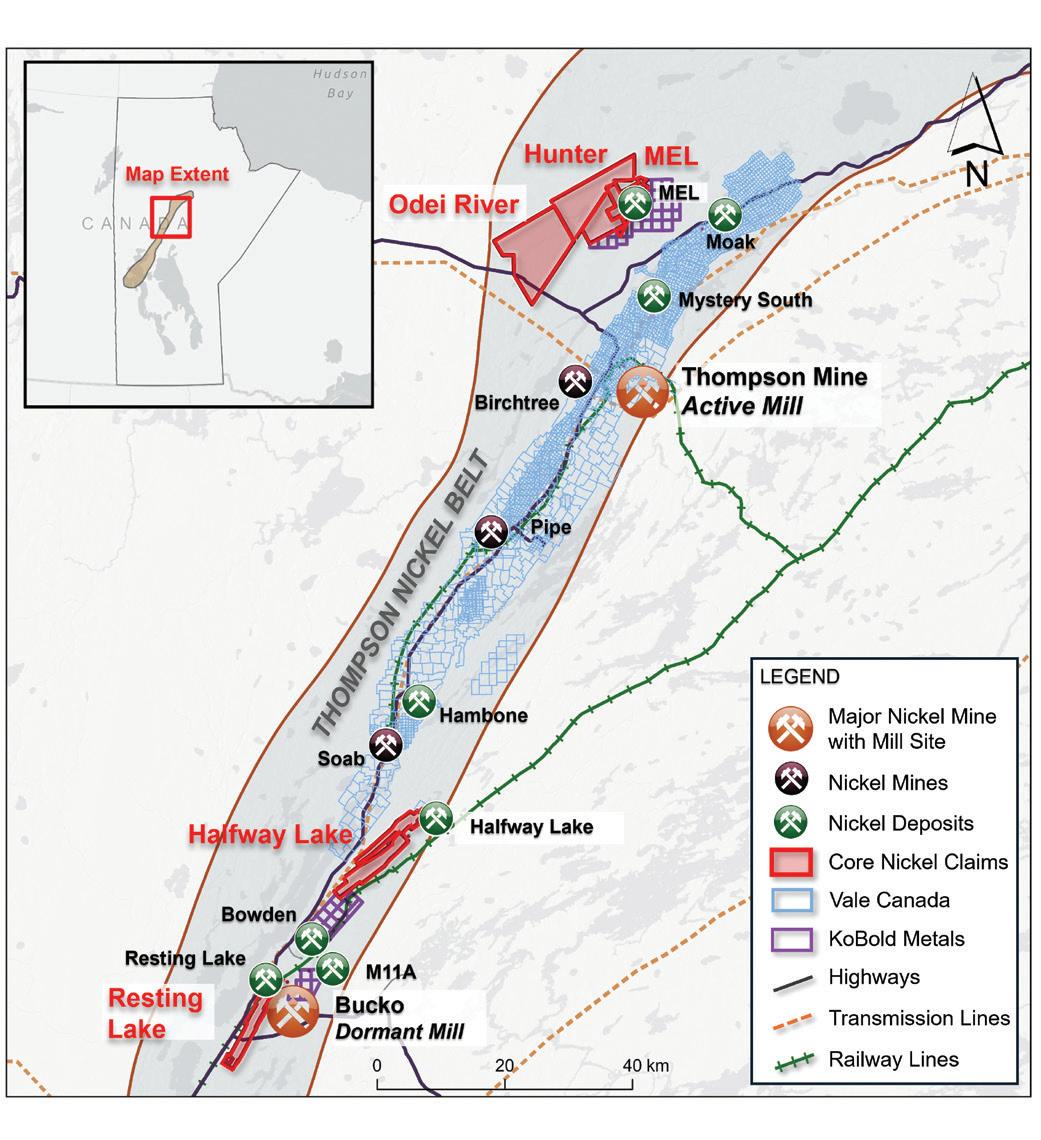
tric grid, providing a significant advantage for low-carbon, sustainable development.
Core Nickel holds 100% ownership in 270 km2 of land across five properties in the Thompson Nickel Belt: Mel, Halfway Lake, Resting Lake, Hunter, and Odei River. The company’s flagship Mel project hosts a historical mineral resource consisting of an indicated resource of 4.28 million tonnes grading 0.875% nickel (Ni), and an inferred resource of 1.01 million tonnes grading 0.839% Ni, using a cut-off grade of 0.5% Ni. The Mel deposit is situated only 20 km from the Thompson Mill and just 10 km from a provincial highway, providing excellent access to processing and transportation infrastructure.
The company’s strategy includes both expanding the historical resource at Mel and identifying new discoveries within its broader land position. This effort is being supported by a property-wide helicopter-borne versatile time domain electromagnetics (VTEM) and horizontal gradiometer geophysical survey across the Mel and Odei River projects. The survey is designed to identify conductive and magnetic features associated with nickel sulfide mineralization and will support a better understanding of the Mel deposit geology, assist with Mel resource expansion, and progress the understanding of the broader Mel and Odei River property geology. Upon completion of the VTEM survey on Mel and Odei River, Core Nickel’s entire land portfolio will be covered by modern VTEM — one of the most vital tools used in nickel exploration within the Thompson Nickel Belt.
In parallel, Core Nickel has engaged Understood Mineral Resources to initiate a modern resource update for the Mel deposit. This process will incorporate new geological modelling alongside historical and new data to bring the deposit in line with current NI 43-101 standards. As part of this work, the company has launched a re-assay program using available core from past drilling at Mel to validate historical results and improve confidence in the resource model. The re-assay program will help inform the updated resource and support future drilling plans aimed at expanding and upgrading the deposit.
Core Nickel’s inaugural 2024 drill program was focused on the W62 Zone at the Halfway Lake Project, where the company completed three diamond drillholes totaling 797.45 metres. Results confirmed a wide nickel-bearing ultramafic package in hole HFW-002, which returned 91.05 metres grading 0.37% Ni from a vertical depth of approximately 120 metres. The intersection of prominent nickel-bearing ultramafics is encouraging, confirming the presence of nickel in the system. The next phase of exploration will aim to locate areas where nickel has been remobi-
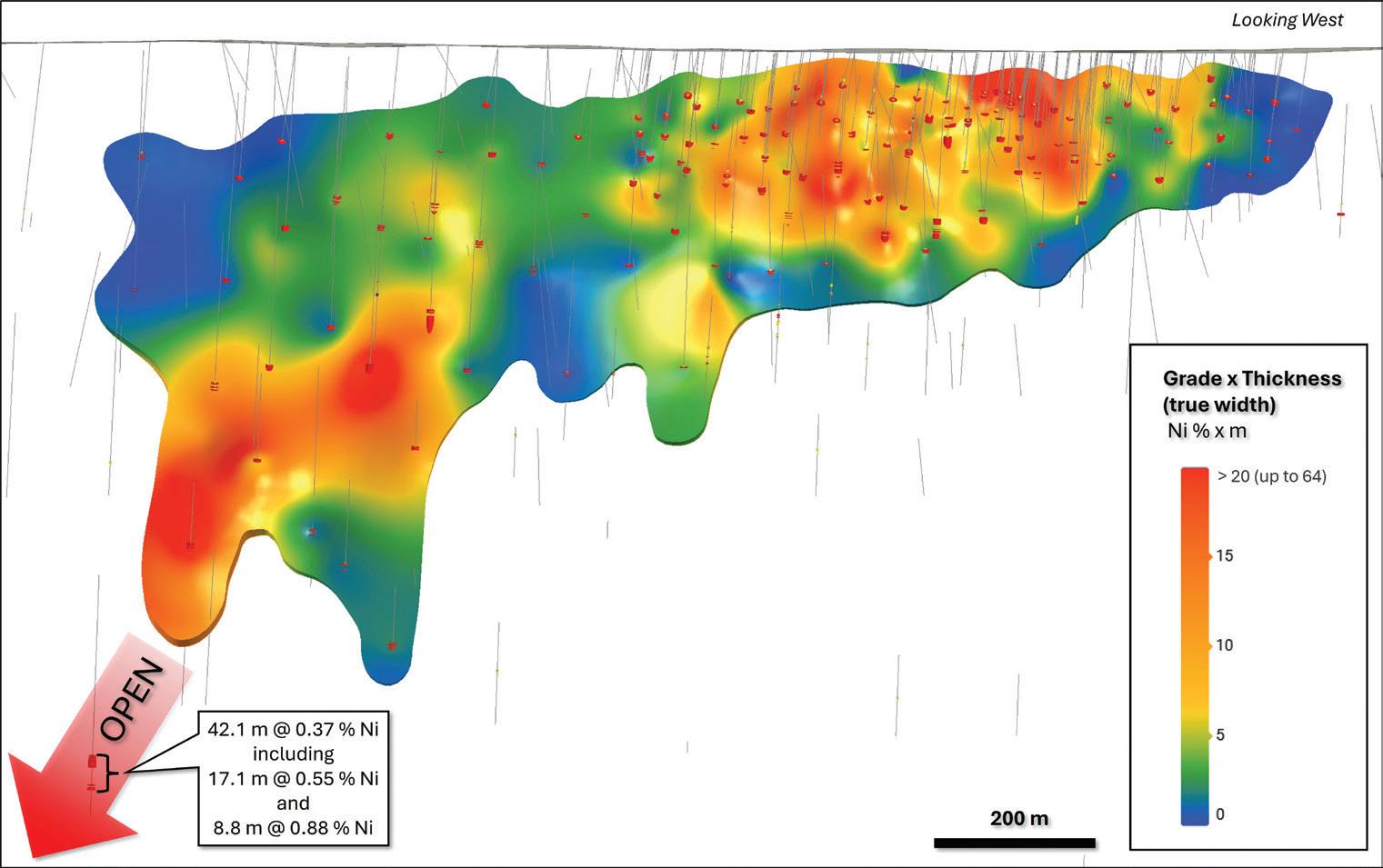
lized and concentrated into higher-grade massive sulfide zones.
To support the ongoing target generation, Core Nickel completed a property-wide VTEM and horizontal magnetic gradiometry survey over the Halfway Lake and Resting Lake properties in the summer of 2024. The survey identified 14 high-priority targets across Halfway Lake. In January 2025, the company commenced a 4,000-metre follow-up diamond drill program on
the Halfway Lake property to begin testing these high-priority targets. Drilling was planned for completion in mid-April 2025, with assay results anticipated in mid- to lateMay. The combination of promising geophysical targets and strong geological indicators from previous drilling makes Halfway Lake a key component of Core Nickel’s discovery-focused exploration strategy.
As Canada pushes to secure a domestic supply of critical minerals for electric vehicles and clean energy technologies, companies like Core Nickel are playing an increasingly important role. With a growing portfolio of prospective targets and a clear operational roadmap, Core Nickel is positioning itself to become a key player in nickel exploration.
The Thompson Nickel Belt remains one of the most compelling underexplored nickel regions globally. With a strong technical team, well-funded exploration plans, and collaborative development philosophy, Core Nickel is aiming to deliver results that match the scale of the opportunity.
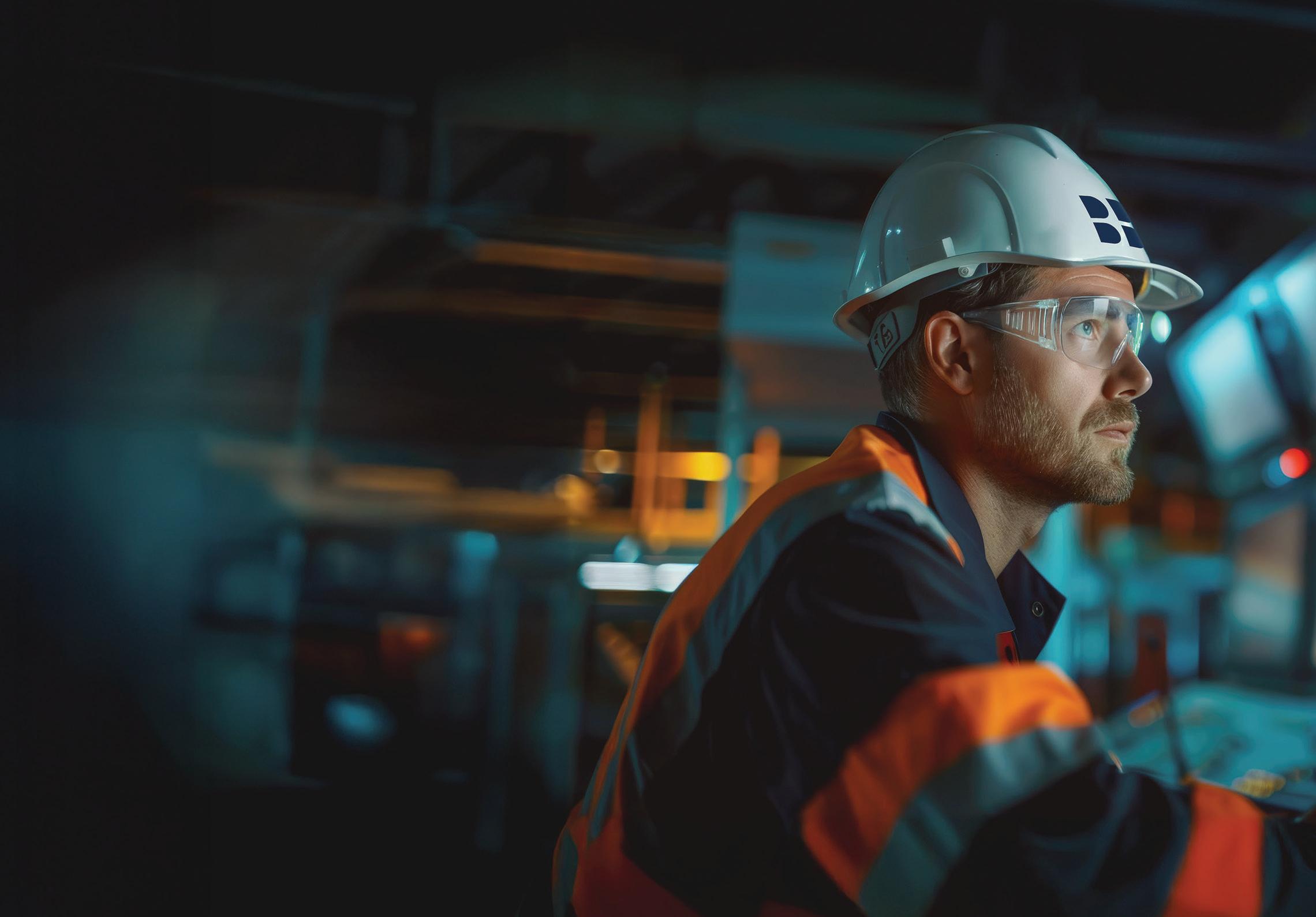



By Theresa Sapara and Daniel Morales
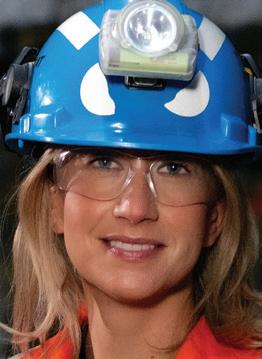

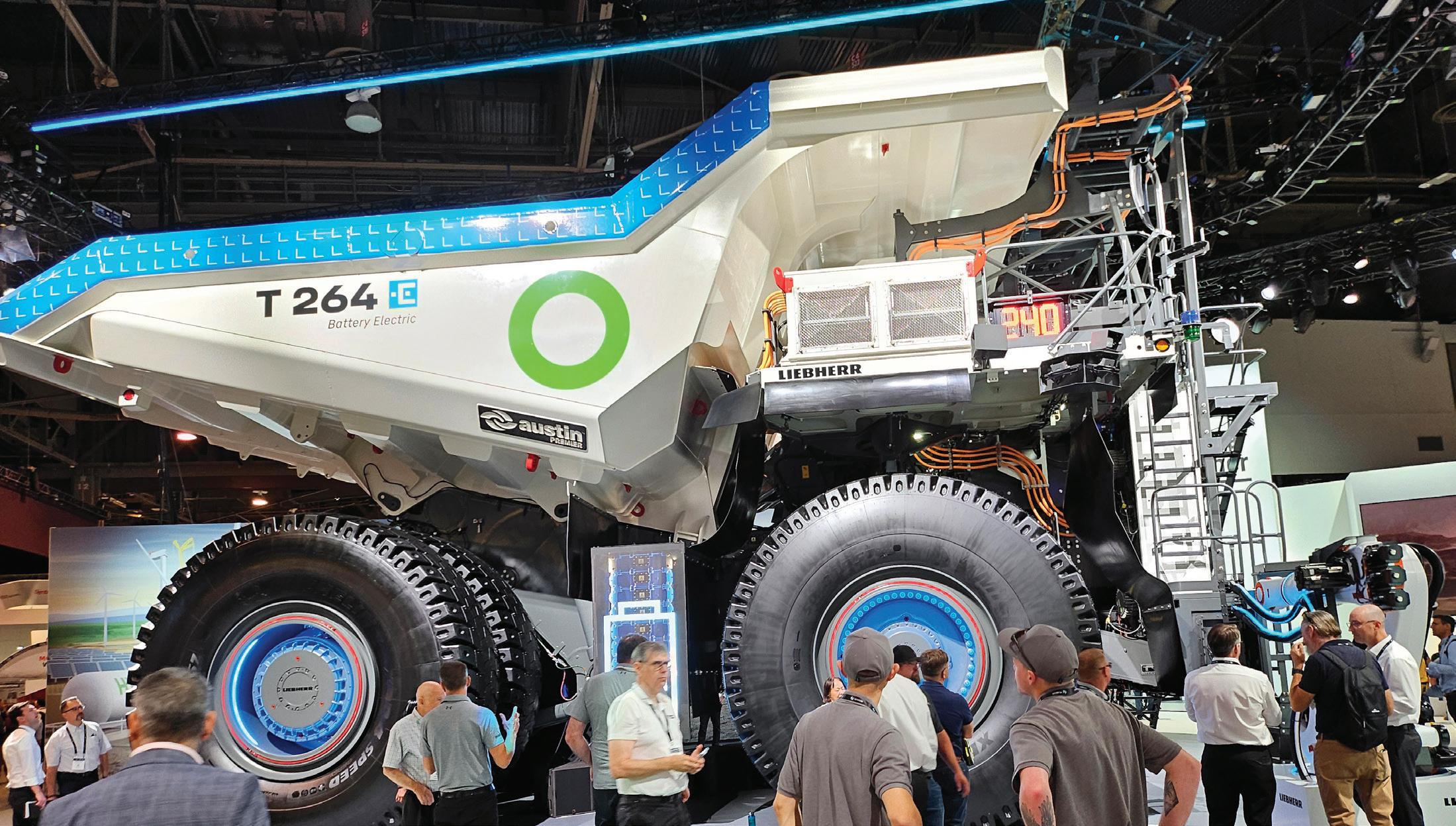
In the face of mounting pressures, autonomy in mining is sometimes touted as a potential silver bullet — a transformative solution that promises to address the industry’s most pressing challenges. From enhancing safety and productivity to mitigating labour shortages and advancing sustainability initiatives, the allure of autonomous technology is undeniable. However, while the potential benefits are appealing, successful integration requires resolving multiple practical hurdles. Understanding the true implications of autonomy is key to unlocking its full potential.
Despite its promise, many mining companies, particularly brownfield operations, must address barriers to adopting autonomous technology. These include workforce readiness, capital constraints, network infrastructure, and ensuring appropriate and sustained technical and practical support, especially during the planning and ramp up phases.
Shifting to autonomous operations requires significant workforce readiness, including extensive retraining for employees. Transitioning to unmanned processes represents a substantial shift in operations, requiring new roles, oversight, and organizational adjustments. Traditional roles, such as equipment opera-
tors, will transition to more advanced positions like fleet managers, necessitating new skills and changes in operational modes.
Additionally, maintenance becomes more complex, as it must cover not only mechanical systems but also electronic components and software packages that need regular updates. The procurement of specialized parts can also affect supply chains and overall operational efficiency.
Cybersecurity measures are also crucial for protecting these autonomous fleets from potential threats, ensuring the integrity and safety of mining operations.
Lastly, both a wholesome understanding of the ramp up period and recognition of possible short-term impacts to productivity losses during initial integration phases are equally key
Indeed, EY’s “Top 10 risks and opportunities for mining and metals companies in 2025” report indicates that despite “Innovation” as a category dropping to tenth among top concerns for mining leaders, the industry’s focus on innovation persists, with more than half of global respondents (54%) anticipating increased investment in the coming year. Despite capital, geopolitical and regulatory headwinds, this desire for technological advancement remains strong.
But while autonomy presents attractive advantages, it is capital-intensive and often limited largely to big pocket play-
ers. Looking forward, the standardization of autonomous machines may increase their availability and lower costs, which smaller companies can benefit from. Ultimately, low-cost standardized autonomous machines have shown they can redefine constructive activities, such as mining, farming, and manufacturing. Regardless of subsector, a change management strategy remains fundamental to help determine when the jump to autonomy becomes practical.
Among the various automated technologies at the sector’s disposal, autonomous haulage systems (AHS) are particularly gaining traction. EY’s latest market data reveals mining executives and technical experts alike overwhelmingly view AHS as a pivotal element for the industry’s future, driven by the need for improved safety measures, cost reduction, and productivity enhancement.
Specifically, AHS has the potential to enhance safety by removing operators from hazardous environments, allow better control on wear and tear of equipment, decrease fuel consumption as well as mitigate labour shortages in regions like Australia and Canada.
A final consideration in a mining company’s autonomous transition can include the incorporation of peer reviews into the planning, piloting, or implementation phases. This begins with engaging subject matter experts to confirm the
scope and focus areas of the review and ensuring alignment with specific needs of the present or future autonomous program. Using a structured framework can allow organizations to evaluate critical pillars such as strategy, structure, change management, and operations, scoring each on a readiness scale. Based on subsequent assessments, transparent and independent recommendations can be developed and improvement opportunities tailored to the organization’s context.
By adopting this peer review process, mining companies can gain objective insights into their present and future autonomous initiatives, enabling a clear view of what’s working well and what needs more attention. This approach facilitates access to technical expertise, allowing organizations to effectively mitigate potential business risks. Companies can expect improved stakeholder alignment and enhanced overall readiness for autonomous adoption, leading to a more successful implementation and better operational outcomes.
The path to autonomy in mining is not linear. However, it presents opportunities for companies to enhance safety, productivity, and sustainability. Success in the robotic age will come to those who implement with intention — balancing constraints, leveraging proven technologies like AHS, and learning from peers along the way.
Theresa Sapara and Daniel Morales serve as lead and consulting manager, respectively, with the Americas Metals and Mining Centre of Excellence at EY.



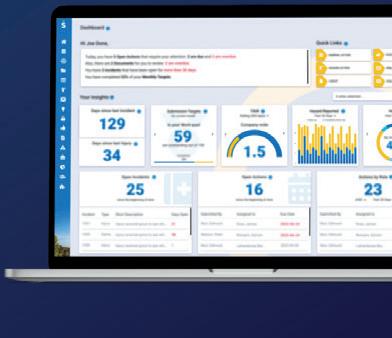
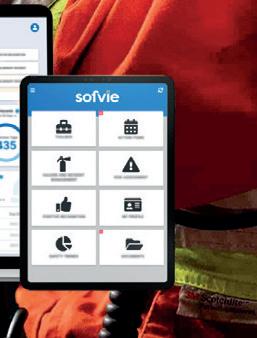
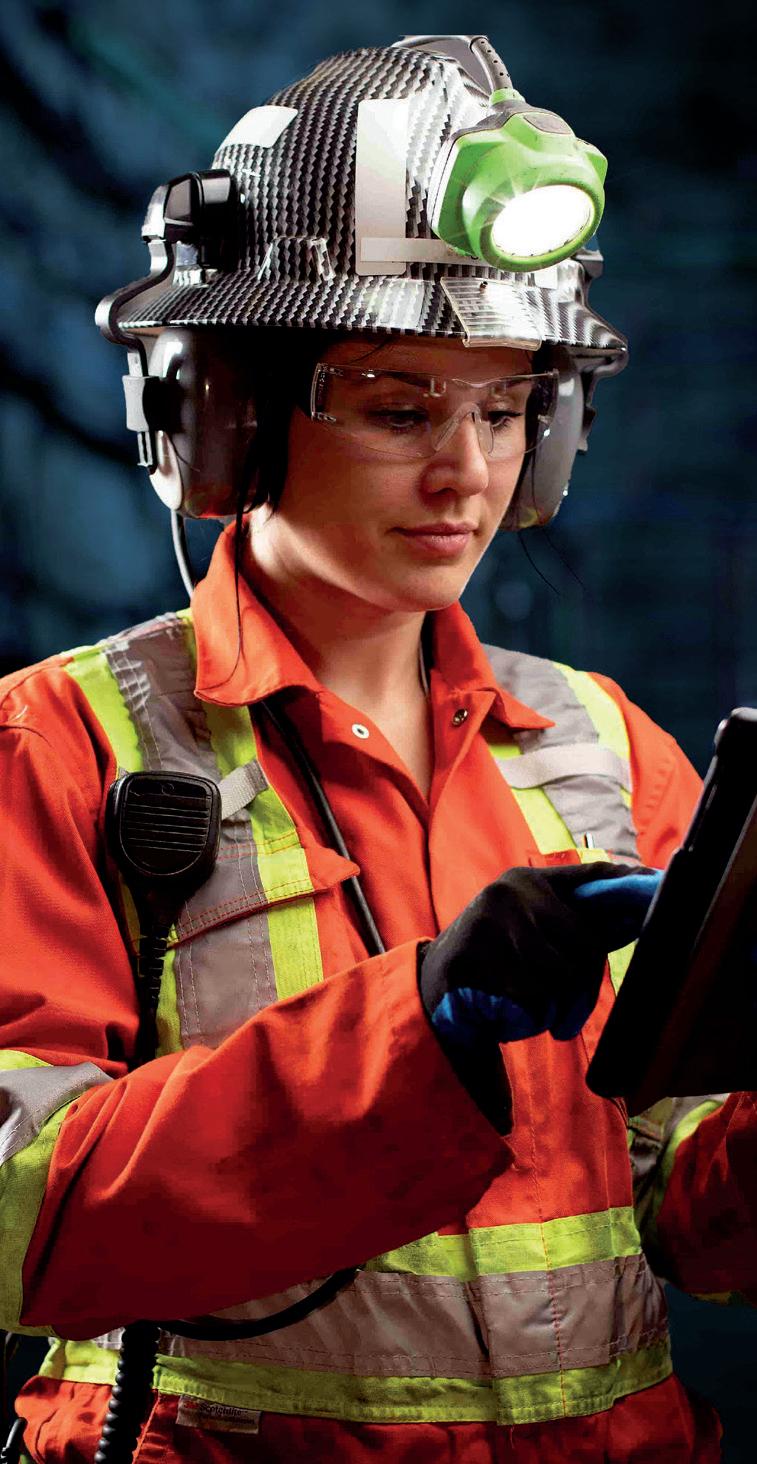

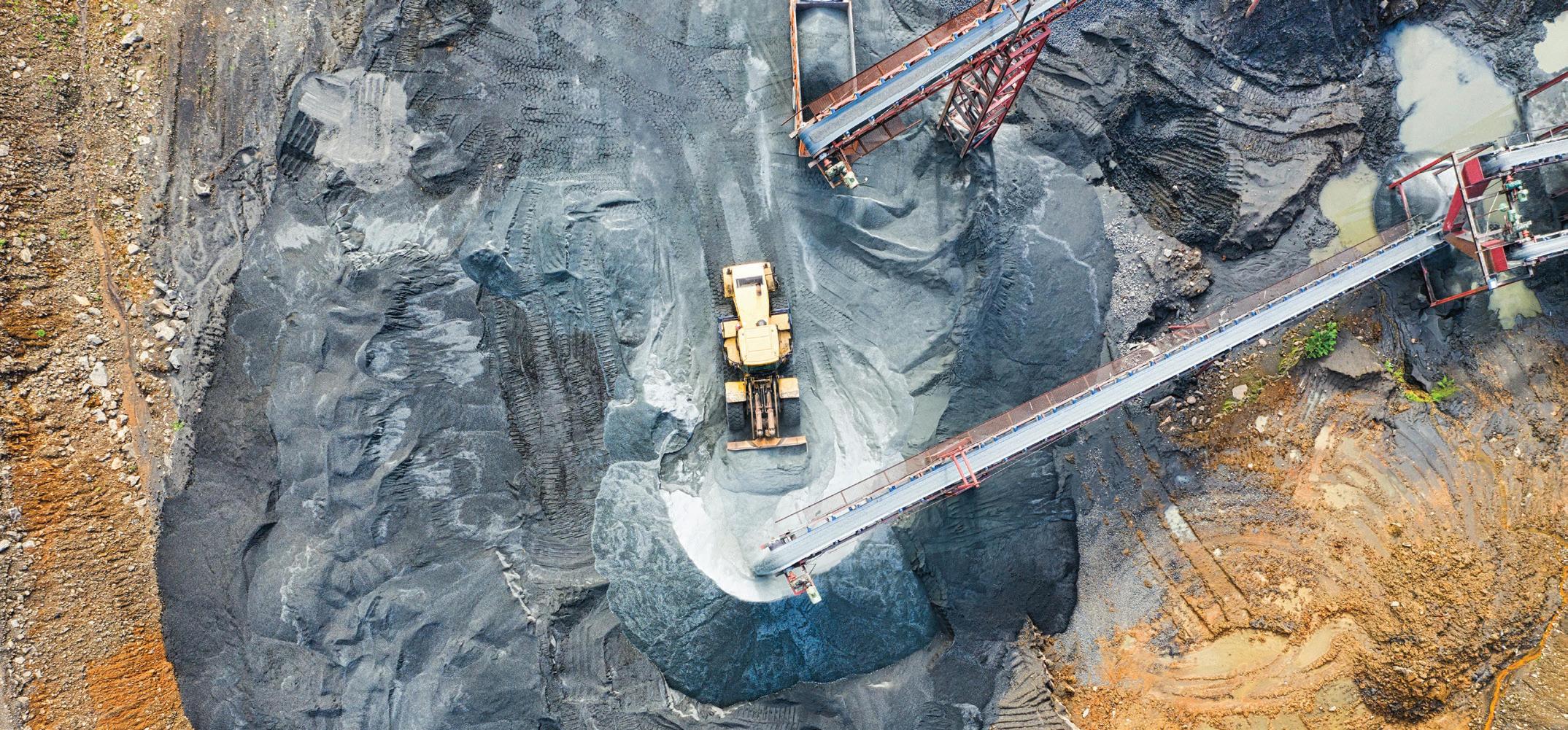
When asked to describe the “mine of the future,” people generally think of one where every aspect of operations is seamlessly intertwined with artificial intelligence (AI). In the mine, you imagine autonomous drones over the pits, computer vision models monitoring ore extraction and handling, and AI-driven robots performing precise drilling and blasting. In the processing plants, AI-based recommendation systems improve the efficiency of mineral separation techniques, constantly learning and adapting to changing conditions. Across the mine site, deep learning algorithms monitor machinery to predict and help prevent failures and optimize maintenance scheduling to minimize downtime.
But the reality is that this vision is not a distant dream but an unfolding reality. According to various industry reports, the mining sector stands to gain over $370 billion in additional value annually by implementing AI and automation technologies, with AI alone capable of increasing productivity by up to 20%. One study found that AI-powered predictive maintenance could reduce equipment downtime by as much as 30%, while also extending the life cycle of machinery. In the realm of ore sorting, AI technologies have shown a 15% to 20% improvement in resource recovery rates. As these technologies continue to evolve, AI and GenAI will only deepen their footprint in the mining sector, enhancing efficiency and driving the industry toward a more sustainable and economically viable future.
The picture drawn at the start of this article is accurate at a high level, but that is exactly what it is: a high-level picture. Under the surface, there are several smaller AI and GenAI systems that can be developed across the entire end-to-end process cycle of any mine. These models/systems come together to create an intelligent ecosystem for how the entire mine operates in the most reliable, efficient, and profitable manner. But it is important to have a more detailed view on what these usecases can be within each part of the mine, and the underlying technical methodologies that enable these use-cases.
• AI-driven ore exploration: AI algorithms analyze geological, geophysical, and geochemical data to identify potential ore deposits. Machine learning (ML) models classify and predict mineralization zones based on historical and remote sensing data.
• Geological pattern recognition: Deep learning models, such as convolutional neural networks (CNNs), detect complex geological patterns in seismic data, satellite imagery, and other geospatial data, aiding in the prediction of mineral locations.
• Predictive resource estimation: Ensemble learning techniques model and predict mineral deposit sizes and grades, improving the efficiency of drilling locations and reducing costs.
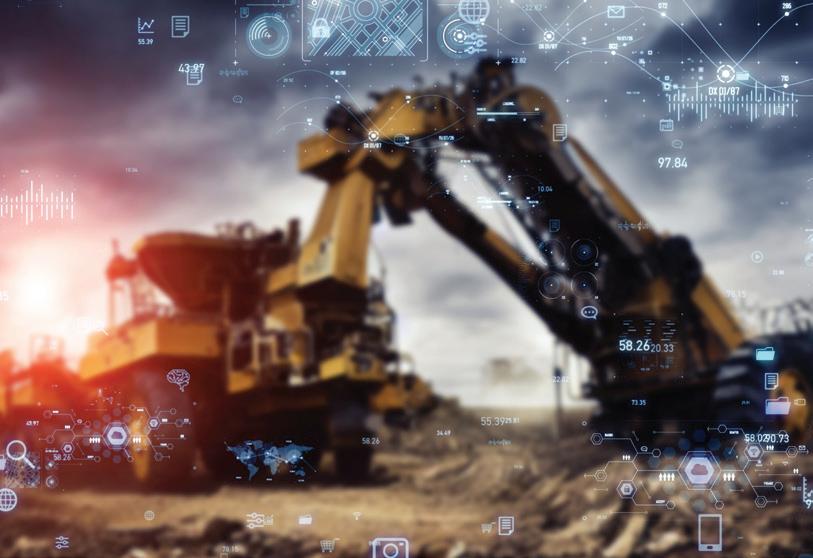
• Ore sorting and material characterization: Computer vision models process images from ore sorting systems to identify ore composition and quality, improving the efficiency of material handling.
• Flotation process optimization: Combination of predictive algorithms and optimization models predict and adjust key flotation parameters such as reagent type, pH levels, and airflow to maximize mineral recovery.
• Energy and reagent consumption optimization: AI systems use optimization algorithms to balance energy and reagent usage in the plant, improving the costeffectiveness of mineral processing.
• Ore blend optimization: Metaheuristic optimization models (such as Genetic Algorithms) help optimize ore blending by considering ore quality and quantity, leading to efficient and consistent extraction.
• Material tracing: Predictive models analyze real-time material characteristics (e.g., hardness and mineralogy) to predict ore movement and assist with targeted blasting strategies.
• Optimized fragmentation and blasting; Reinforcement learning (RL) models adjust blast parameters such as charge size and hole placement in real time to optimize fragmentation while minimizing waste and energy usage.
• Autonomous fleet management: Autonomous haul trucks learn
optimal routing, speed, and load balancing for efficient material transport across the mine site, optimizing traffic, congestion, and fuel consumption.
• Load optimization: AI models dynamically adjust loading parameters to minimize haulage costs while maximizing payloads and minimizing fuel consumption.
• Predictive maintenance: Predictive machine learning models analyze sensor data to track equipment degradation, predict failures, and reduce downtime.
• Maintenance advisor: GenAI-based agents trained on equipment manuals, maintenance procedures, and any other documentation, allowing for maintenance personnel to interact with it in a conversational manner to extract information effectively while conducting maintenance.
As organizations march onto their journey to adopt these technologies, they will need to overcome challenges related to adoption and culture change. Building a robust change management pro-
gram is essential to ensure that the benefits of AI and GenAI are fully realized. This journey towards widespread adoption of these technologies will involve continuous learning and adaptation. Organizations must invest in upskilling their workforce, developing the necessary technological infrastructure, and establishing governance and risk management processes. By doing so, they can unlock the full potential and drive significant improvements using these technological advancements.
In conclusion, AI and GenAI are set to revolutionize the mining industry by enabling new levels of efficiency and innovation. The applications are diverse, have potential to be highly impactful, and it is only a matter of time until that “mine of the future” will just be every mine of today.
Nimit Patel is an AI/ML leader at QuantumBlack (AI by McKinsey & Company), leading the development and deployment of AI-driven solutions for mines across the U.S and South America. His work has been pioneering in the mining industry and has become a lighthouse case to show successful adoption of AI solutions across multiple phases of the mining life cycle. He is passionate about helping mining companies achieve groundbreaking improvements in equipment uptime, increased efficiency, and reduced processing costs and emissions.

Noah Rain Builders…tackling extreme conditions in remote locations, overcoming tough terrain and weather to build essential infrastructure safely and efficiently. Effectively and efficiently maintain operational mines to ensure smooth flow of production and operations.
www.noahrainbuilders.com
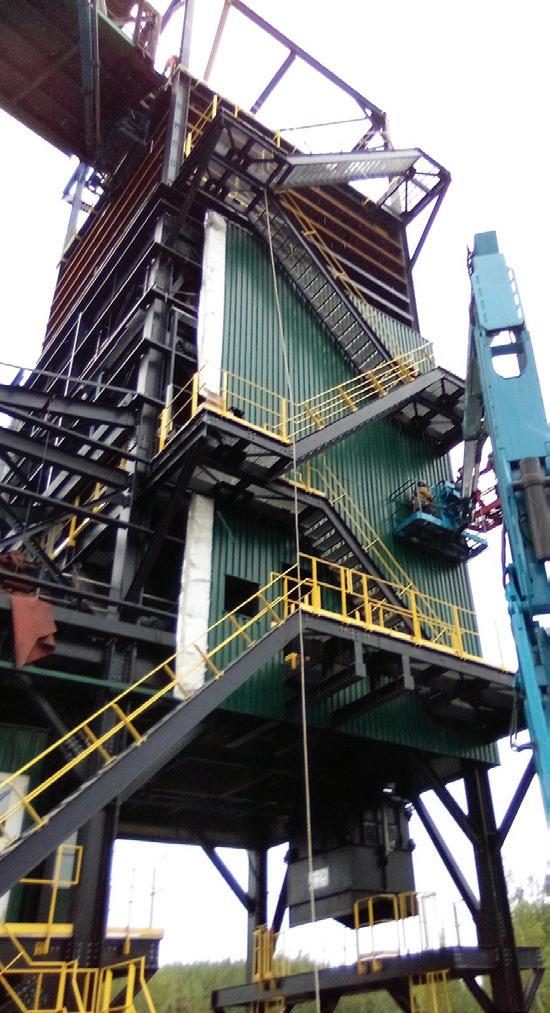
And to do it faster, with less environmental impact
At a time when a looming multi-trillion-dollar supply gap in critical metals is putting the mining industry in the spotlight, there is an immense pressure on mining companies to deliver outputs quickly with less cost, risk, and environmental impact than ever before. It begins with exploration activities to determine if there are minerals underground in a target area. The underlying challenge for explorers is never knowing for certain what lies in the subsurface. Miners may extract and analyze data from dozens, hundreds, or even thousands of drill holes, interpolating what may exist between those geological biopsies. Even with all those holes, they still do not know for sure, yet enormous investment and operational decisions are based on that fractional information about what might be there.
This geological uncertainty impedes growth, drives costs, and slows time to market. Better subsurface intelligence can close the gap on that uncertainty, reducing it dramatically and providing the tools to quantify what is left, giving mineral exploration and mining companies greater confidence to move earlier, faster, and with less downstream risk. In turn, this helps them get the critical metals the world needs to market more quickly, safely, and profitably.
Subatomic particles reveal subsurface geological features more efficiently than drilling Vancouver-based Ideon Technologies uses naturally occurring energy from supernova explosions in space, in the form of subatomic particles called “muons,” to image deep beneath the Earth’s surface. As the world’s pioneer in the development and application of cosmic-ray muon tomography, Ideon has developed the “REVEAL” subsurface intelligence platform, comprising an advanced suite of proprietary data-generation hardware, software, AI-powered services, and multi-physics fusion that together unlock the exponential power of integrated spatial data. The REVEAL for Exploration solution helps mining companies map and characterize mineral deposits with precision and confidence, allowing them to precisely target and delineate subsurface features, at depth, on remote greenfield sites, or in the complex operational environment of active brownfield mine sites. It delivers a high-volume, high-resolution, high-velocity Earth model that can improve the accuracy of density mapping and drill targeting, expedite geological modelling, and directly inform mine planning.
This foundational technology — muon tomography — is the only straight-line subsurface imaging technology available today, delivering the highest available resolution along with pre-
cise anomaly location information. It uses a passive and free energy source (from space), offers the ability to image in noisy or conductive environments (where other techniques do not), providing insights from depths that other techniques cannot, and captures data continuously, thus improving imaging results over the course of a survey.
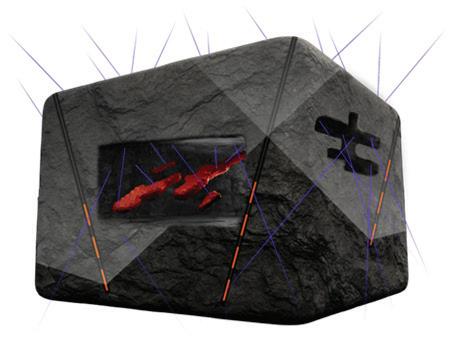
Ideon muon detectors are positioned in connected arrays beneath or next to the target zone, imaging upwards to cover millions of cubic metres of earth.
CREDIT: IDEON
By measuring muon activity through detectors positioned in a few select boreholes, the average density in the overburden within a wide field of view above each detector can be determined. Each detector produces a radiographic (X-ray-like) image of the rock mass above it, with significant geological features standing out clearly because of their density contrast with the surrounding rock. By utilizing multiple detectors with different views of the subsurface, the density of a volume of rock can be estimated through triangulation of the intensity of muons recorded at different detector locations. The muon data can be inverted into a block model that provides a high-resolution 3D estimate of subsurface density that tightly constrains the shape and size of any geological features imaged. This unique data source, combined with advanced processing algorithms and multi-data-set analysis, gives mining exploration companies a comprehensive set of subsurface intelligence that they have never had access to before.
Working in partnership with Vancouver-based Fireweed Metals (part of the Lundin Group), we demonstrated how the REVEAL for Exploration solution can significantly reduce the drilling costs associated with mineralization validation.
Located in eastern Yukon Territory about 400 km from Whitehorse, Fireweed Metals’ Macpass project lies within the traditional territories of the Kaska Dena Nation and the First Nation of Na-cho Nyäk Dun. It hosts several large zinc-lead-silver deposits within the 940 km2 property, which is recognized as one of the world’s largest undeveloped primary zinc districts.
“We see the potential for muon tomography to provide greater resolution and greater accuracy in estimating the source of density anomalies compared to more traditional gravity surveys. Muon tomography can also reliably detect and resolve more subtle contrasts at greater depths and with superior resolution than gravity or seismic surveys, which opens our search space for zinc exploration within one of the most prolific zinc basins on Earth. Furthermore, this technique allows tour operations to be more cost-effective and decreases our exploration footprint.”
JACK MILTON, VICE-PRESIDENT GEOLOGY, FIREWEED METALS
It also has the potential to be a significant source of by-product strategic elements like gallium and germanium.
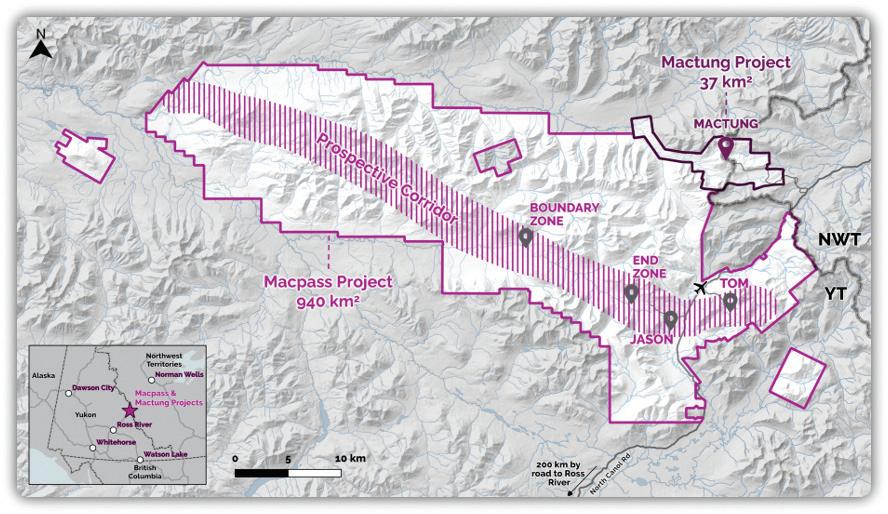
Fireweed Metals’ Macmillan Pass District is one of the world’s largest undeveloped primary zinc districts. CREDIT: IDEON
Ideon worked with Fireweed to deploy the REVEAL for Exploration solution at Macpass in the fall of 2024 with a goal to identify and map new targets for drill-testing during Fireweed’s summer 2025 exploration campaign. The very high density of high-grade massive sulfide bodies observed at Macpass makes these kinds of targets particularly wellsuited to detection using muon tomography. Beyond generating new targets, Ideon was able to greatly improve characterization of the existing mineralization structure, address key geological hypotheses, and identify reasonable extensions adjacent to the known mineralization structures.

In late September 2024, Ideon positioned multiple muon sensors in arrays down three drillholes across one km strike length, down to 550 metres depth, covering 2.5 km2 in the Boundary Zone of Macpass just before camp closed for the season. To prevent the possibility of hole collapse (a known challenge in this region), the sensors were deployed inside the metal drill rods, which were left in place for the imaging program. The sensors mapped density at metre-scale resolution over a volume of 600 million m3 throughout the harsh Yukon winter. An autonomous power solution kept the sensors im-
aging over the season, and data was transferred regularly via satellite connection from site to the Ideon labs in for analysis.
Actionable geological insights delivered well ahead of schedule
After four months of passive imaging, the muon survey independently detected and modelled volumes of high density that closely resembled the orientations and spatial constraints of the deposit defined through prior drilling by Fireweed. The subsurface model, generated blindly without any constraining information from the site, using data acquired from muon sensors with large fields of view deployed in just three drillholes, showed excellent agreement with mineralization data extracted from 50 holes previously drilled in the area, significantly enhancing the understanding of structural trends in the subsurface geology. Not only did these results validate key geological hypotheses about the site and confirm mineralization trends, but they also identified three new advanced drill targets outside of the mineral resource exhibiting anomalous estimated density, which will inform the summer of 2025 exploration campaign. Beyond establishing new targets for exploration in areas that currently have no drilling at all, the Fireweed team used the muon data to develop a robust 3D model of the known mineralized area that gives them greater confidence in the continuity between drill interceptions (50 to 100 metres apart). It helped them validate the tonnage of the deposit and compare it to what they saw in the mineral resource, while also validating mineralization structures (stratiform nature of the mineralization and geology, with interspersed low- and high-density bands) and confirming a geological hypothesis that a fault truncated the massive sulfide zone. The new robust density model has given the Fireweed team confidence that they have estimated the resource as correctly and as accurately as they could.
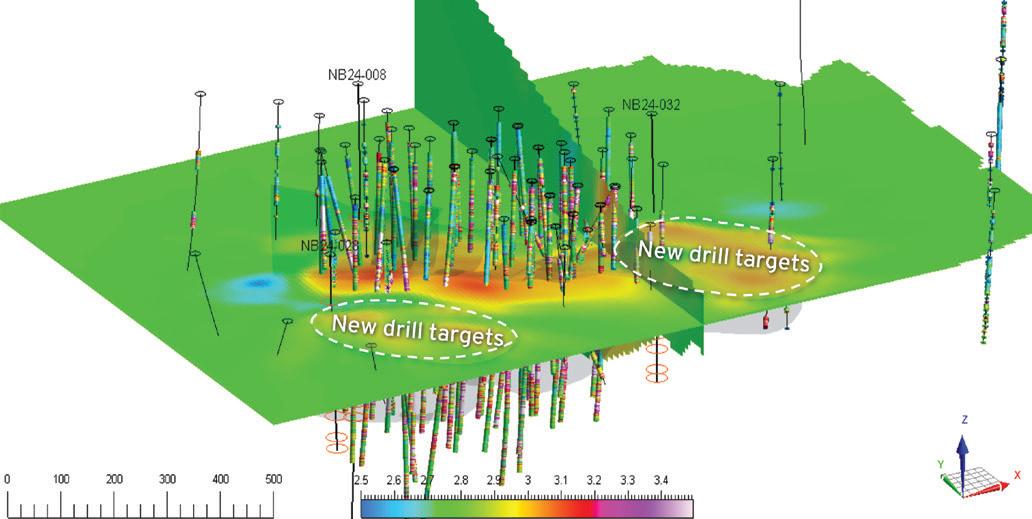
Muon-powered imaging and multi-physics fusion generated new exploration targets in the shallow subsurface and identified a deep target on the north side of Boundary Zone that would not have been detected by using gravity data alone. Exploration targets are ready to drill in the 2025 season for testing potential satellite zones or potential extensions around the Boundary Zone deposit. CREDIT: IDEON
The journey toward a more sustainable future in mining is about more than just cutting-edge equipment. It’s about people, expertise, and the ability to adapt to new technologies with the right support. Sandvik is at the forefront of this transformation, helping mines across Canada integrate battery-electric vehicles (BEVs) into their operations for safer, more productive, and emissions-free mining.
NEXT-GENERATION BEV LOADER
Designed for the future of mining, Sandvik’s third-generation Toro® LH518iB underground BEV loader is redefining efficiency and safety. With a capacity of 18 tonnes, it has been engineered for high-performance underground operations while eliminating the need for diesel fuel and reducing greenhouse gas emissions.
Built with advanced technology, the Toro® LH518iB is autonomous-ready, allowing for seamless automation integration. The loader features Sandvik’s proven AutoMine® system, ensuring fast and reliable automation adoption. The AutoMine® Onboard Package simplifies retrofitting with a small enclosure, quick electrical connectors, and no significant hydraulic modifications – allowing a fast installation time of just two to three days.
Additionally, the My Sandvik Knowledge Box® is included to collect, process, and transfer monitoring data for real-time visualization of fleet health, productivity, and utilization. For optimized data driven operations, Toro® LH518iB is capable of being integrated with the Newtrax Mining Data Platform (MDP) – Sandvik’s comprehensive data management solution for underground hard rock mining.
A BATTERY BUILT FOR THE DEMANDS OF MINING
At the heart of the Toro® LH518iB is Sandvik’s latestgeneration battery technology, which incorporates advanced safety features, including lithium iron phosphate (LFP) chemistry, full cell encapsulation in non-conductive potting material, and a redesigned battery management system that monitors each cell’s temperature and voltage for safe operation. The electric driveline of these BEVs offers significant environmental benefits over traditional dieselpowered equipment, notably reducing noise and heat emissions to enhance working conditions for miners. The new battery module boasts a 36% increase in energy capacity within the same physical dimensions, improved structural rigidity, enhanced cooling systems, and better protection against dust and moisture, all contributing to greater durability and performance in harsh underground environments.
BATTERY SWAPS HAVE NEVER BEEN EASIER, THANKS TO SANDVIK’S AUTOSWAP AND AUTOCONNECT
Features: Operators can remain safely in the cab while the discharged battery is removed and replaced with a fully charged one. This automated process eliminates the need for cranes, forklifts, or additional infrastructure.
Toro LH518iB loader at a glance
Dimensions: 12,000 x 3,100 x 2,300 mm
Bucket size: 7.0 to 9.1 m3
Bucket capacity: 18,000 kg
Battery chemistry: LiFeP04 (LFP)
Battery capacity: 482 kW
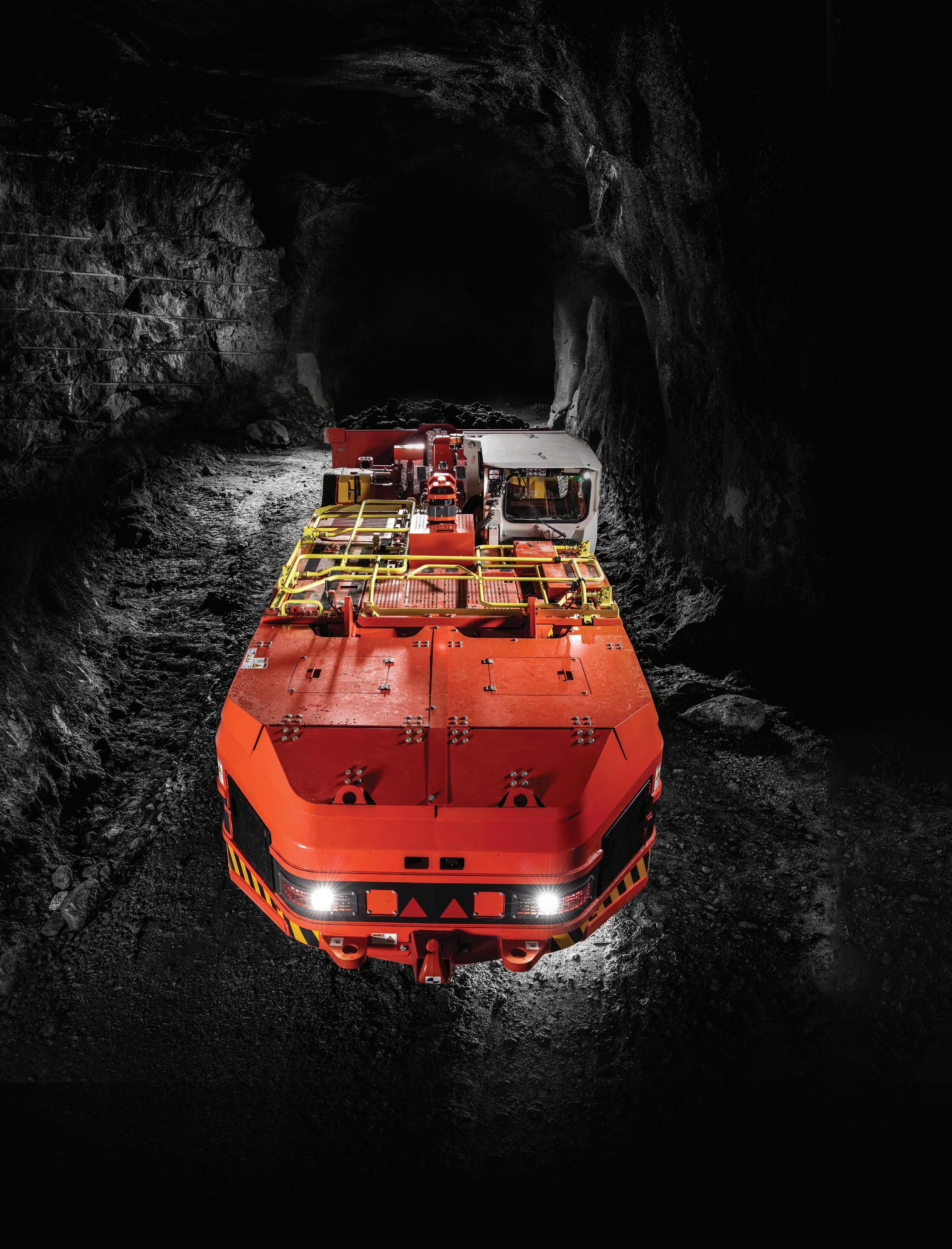
WITHOUT COMPROMISE
With 540 kW of electric drivetrain power and 6,000 Nm of total torque output, the Toro® LH518iB offers unmatched acceleration, ramp speeds, and efficient bucket filling. The loader’s regenerative braking system maximizes energy efficiency while electronic traction control prevents wheel slip, ensuring maximum tractive effort. Unlike traditional diesel loaders, the Toro® LH518iB does not lose hydraulic power during traction, allowing for optimal bucket-filling performance.
SUPPORTING THE FUTURE OF SUSTAINABLE MINING
Across Canada, mines are embracing the advantages of battery-electric technology through the adoption of the Toro® LH518iB. The New Afton mine in British Columbia, operated by New Gold, has chosen the LH518iB to support its zeroemissions initiatives while boosting safety and productivity.
“The Toro LH518iB has been well received by customers and proven to be a preferred machine by operators,” said Alex Willows, Business Line Manager – Load & Haul.
Meanwhile, Foran Mining’s McIlvenna Bay project in Saskatchewan will become an all-BEV underground operation, relying on Sandvik’s complete fleet of batteryelectric loaders, trucks, drills, and bolters to set new standards for sustainable mining.
With Sandvik’s global expertise and unwavering commitment to innovation, mining operations worldwide can confidently transition toward a cleaner, more efficient, and more productive future underground.
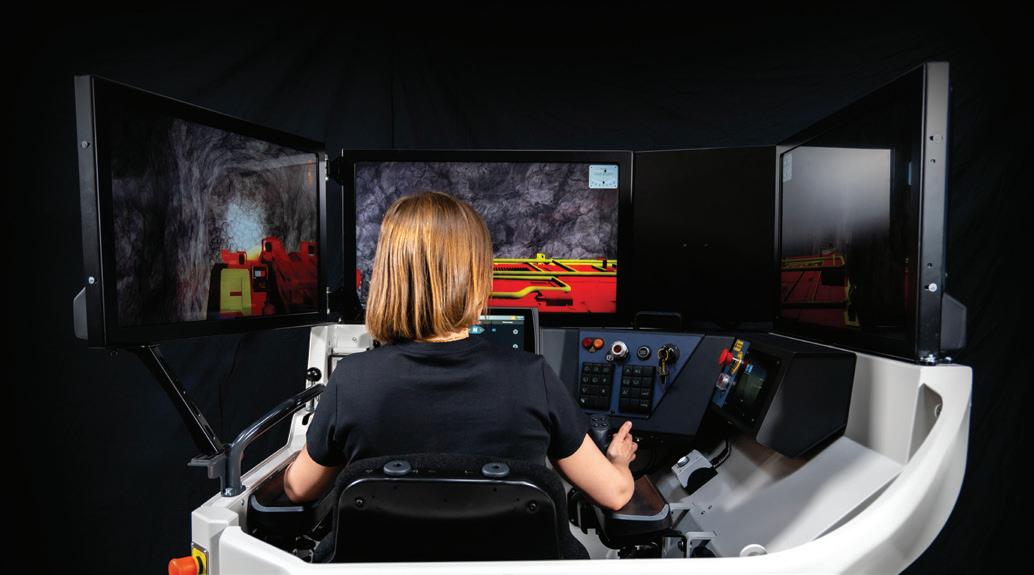
Sandvik offers a digital trainer for the Toro® LH518iB loader that provides tailored training sessions to reinforce the skills and confidence of every operator. The trainer replicates the loader cabin with premium ergonomics, including the same controls and elements as the ones used in the actual loader.
Visit Sandvik at CIM Connect 2025 to see how BEVs are driving the future of mining. Stop by booth #1501 to test the LH518iB Digital Trainer.
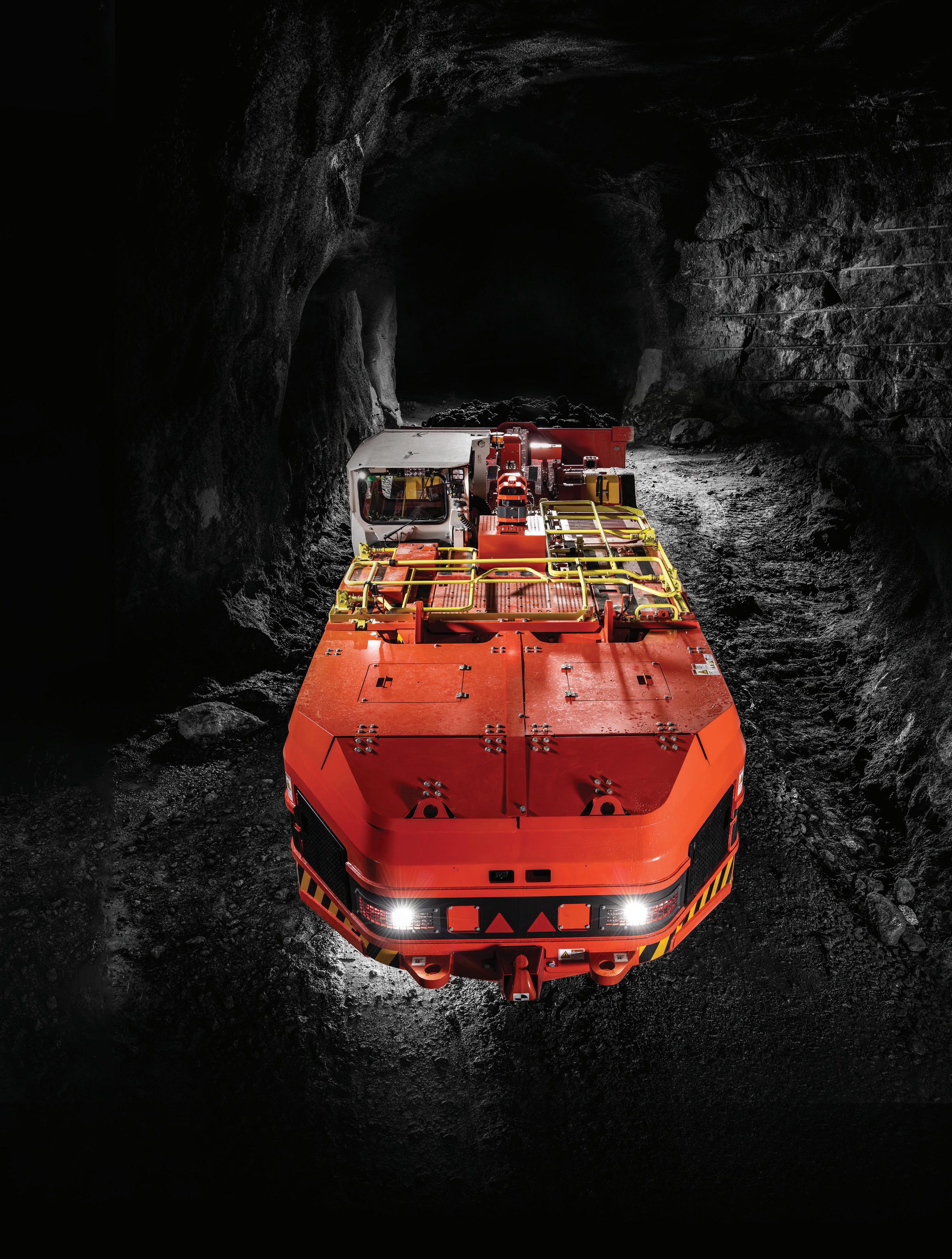
This state-of-the-art BEV loader is designed specifically for underground mining operations. Equipped with an optimal battery chemistry, the fastest battery swap on the market and a high-power electric driveline, this loader is your gateway to sustainable mining.
Toro® LH518iB Safer. Stronger. Smarter.

Gravity inversion typically requires delicate tuning to achieve a good model that aligns with the local 3D geology. It is most sensitive to shallow features.
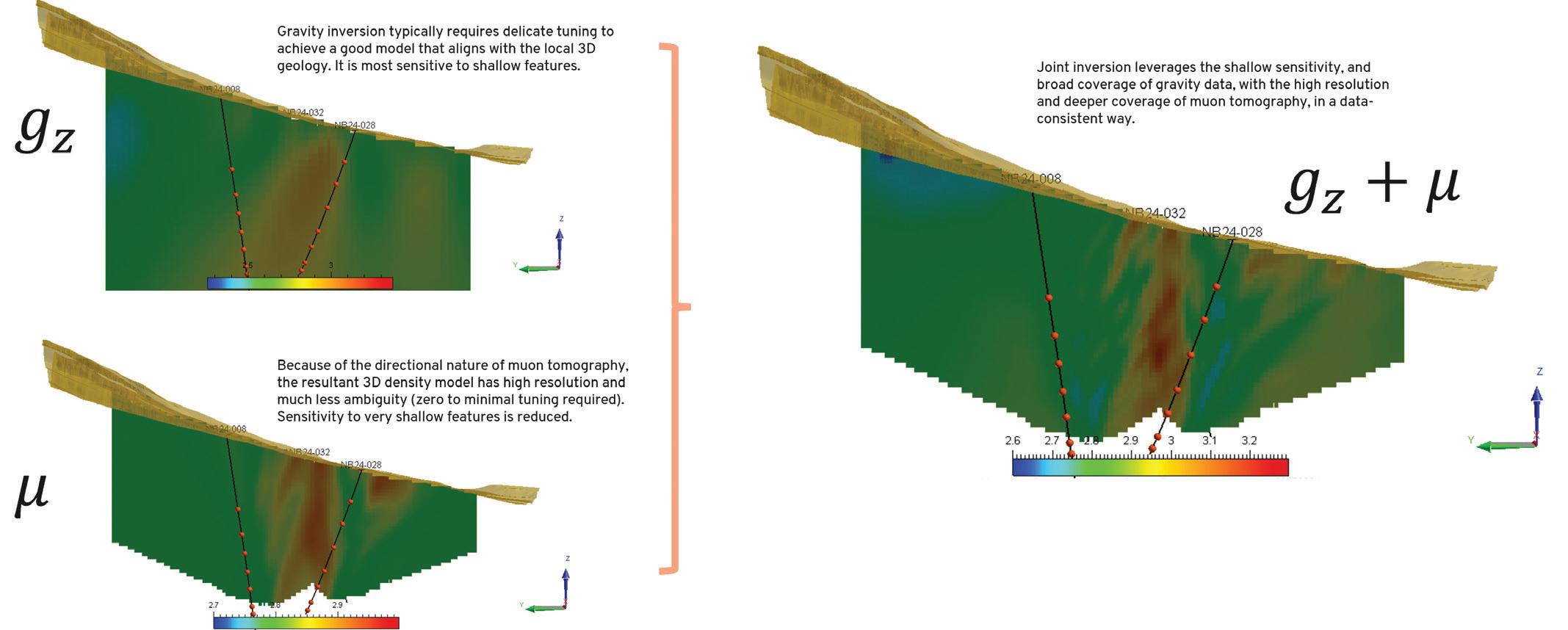
Because of the directional nature of muon tomography, the resultant 3D density model has high resolution and much less ambiguity (zero to minimal tuning required). Sensitivity to very shallow features is reduced.
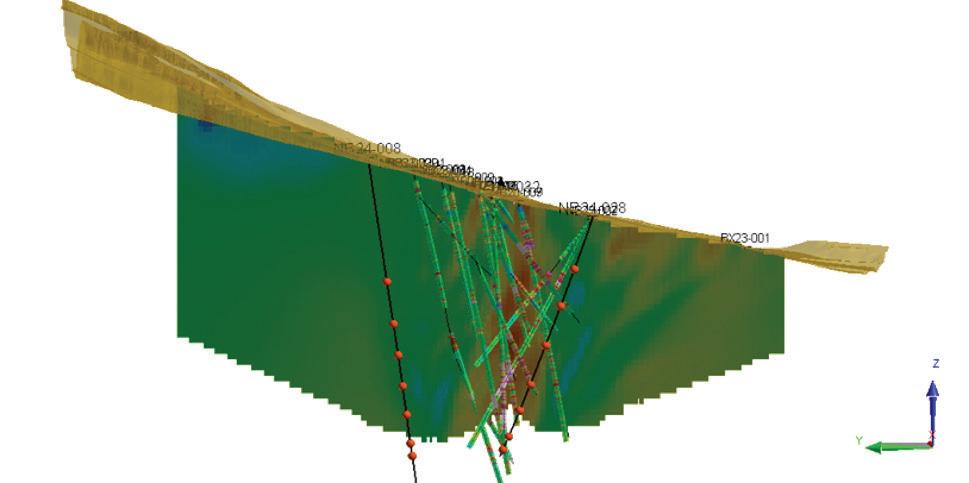
Muli-physics analysis yields “1 + 1 = 3” impact
Over the years, Fireweed had acquired a rich ground gravity data set across the district. Once the muon imaging had been analyzed, the team opted to combine this gravity data and the muon data into a single 3D inversion to assist in targeting. Areas of anomalous density in both surveys corroborate very well and generated an improved model over the inversion from either dataset alone. The gravity data is a surface measurement and thus more sensitive to density anomalies closer to the surface, providing regional understanding of the bulk properties of the subsurface. The muon data, which images upwards from beneath the target zone, delivers much better sensitivity and higher resolution at depth, allowing for the more effective detection of density anomalies than using gravity alone.
In the summer of 2025, Fireweed will drill-test new targets. Having seen the outcomes at Boundary Zone, they also will be using muon tomography and gravity over a much larger area in the upcoming exploration season.
Leveraging technology to drill less and discover more and faster By mapping large volumes of the subsurface over the off-season, this technology can help greenfield explorers reduce the time to fully explore an area by more than 50%, quickly building a macro view of a large volume of earth in an exploration zone. As
Joint inversion leverages the shallow sensitivity, and broad coverage of gravity data, with the high resolution and deeper coverage of muon tomography, in a data-consistent way.
The joint muon-gravity inversion(above) leverages the shallow sensitivity, and broad coverage of gravity data, with the high resolution and deeper coverage of muon tomography, in a dataconsistent way. The drill hole overlay (below) demonstrates the resolution improvement possible with muon tomography over gravity alone. CREDIT: IDEON
a result, the overall amount of drilling to confidently map, delineate, and understand mineralization can be reduced up to 90%, allowing companies to then focus remaining drilling activity on validating targets rather than trying to discover them. They can identify new targets, understand their parameters (mass, 3D geometry, and size), and narrow step-out drilling plans. Ultimately, this allows them to gain crucial confidence earlier on, achieve more with limited drilling resources, reduce site disruption, and avoid bureaucratic hurdles that slow progress.
The REVEAL for Exploration solution is equally productive for near-mine exploration on active brownfield sites, delivering the high-resolution imaging needed to precisely delineate subsurface features, at depth, and in complex operational environments. It can identify subtle differences in subsurface features that other technologies completely miss and can be used to remotely identify subsurface structures or voids that could mitigate potentially unsafe situations for personnel or equipment. No other remote sensing technology can deliver this powerful combination, which can unlock millions in annual value per mine and allow miners to confidently move on without fear of having missed anything between widely spaced drillholes.
The technology is de-risking critical metal exploration and mining processes by quantifying and reducing geological uncertainty in an environment that has traditionally been very uncertain.
Gary Agnew is CEO and co-Founder of Ideon Technologies.
By Kesiah Stoker and Tamer Elbokl,
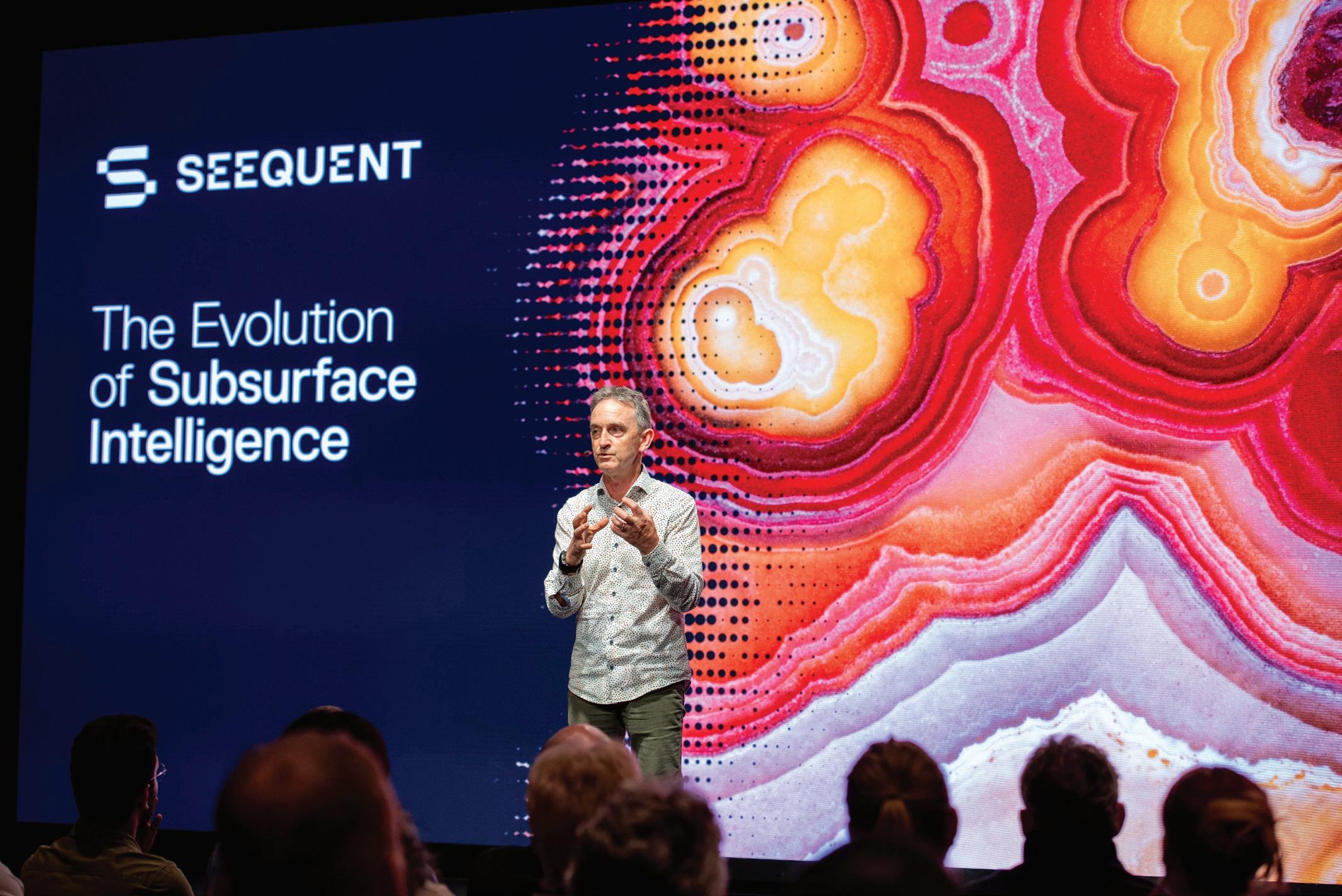
Seequent is on a mission to empower innovation in the mining industry. The geoscience software company recently announced Seequent Evo, a cloud-based data and compute platform that enables integrated workflows, as well as two native applications, Driver and BlockSync. Graham Grant (GG), CEO of Seequent, describes these new technologies as “game changing,” and they are just the latest entries in a line-up of innovative products from the company. Grant is passionate about the advances that Seequent — and its flagship geological modelling software, Leapfrog — has introduced across the geosciences.
At PDAC 2025, we had the opportunity to sit down with Mr. Grant to discuss how the mining industry can benefit from Seequent’s innovation philosophy.
CMJ: CAN YOU TELL US ABOUT THE HISTORY OF SEEQUENT AND HOW IT BECAME WHAT IT IS TODAY?
GG: The important history of Seequent started before Seequent. It began in Hyde Park, London, with a mathematician and an engineer who were trying to solve the problem of severe head injuries: if someone has a car accident or motorcycle accident and breaks their skull, how can the skull be rebuilt? They applied a special class of mathematics to describe the surface area of the head, so that they could build a titanium implant and surgically implant in into the head. That
was around 2000 or 2001. They did some cool stuff with the software they developed: the computer-generated imagery (CGI). The “Men in Black” and “The Lord of the Rings” movies used that software, and NASA used the software to model asteroids. Then, the developers were approached by a mining organization that wanted to try their mathematics in the context of geology. And it worked. It was a very unusual approach. Old-school geologists used to hand-draw maps, and a lot of the software at the time just digitized that way of working, whereas our software dealt with algorithms and mathematics. It was transformational. That was the genesis of Leapfrog, which is the product we have today. It was launched out of that medical business in 2003, which predated Seequent, but they were ostracized by the geoscience industry, who said they knew nothing about geology. It took 10 years for market acceptance of that approach to geology.
I joined Seequent in 2012. At that time, we were 5% of the size we are today. We were one office in New Zealand, above a café, with 30 people and $2 to $3 million in revenue. We literally threw the product away. We knew it would never scale. So, we built a new one, which is known today as “Leapfrog Geo.” We released it in 2013, and it took off because of the market crash in 2014, when the price of iron ore fell 80% and gold fell 45%. Mining companies respond to a downturn by reducing costs, being more efficient, working harder, and working faster. Leapfrog was unbelievably fast, so the mining companies climbed onboard. Over the next 10 years, we grew 10 times our scale.
We knew that Leapfrog covered geology, but we are in a whole value chain of data, exploration, geostatistics, block modelling, and mine operations. So, we have acquired 10 software companies to fill out the geosciences. Now, Seequent has the broadest range of geoscience software of any company in the world. We work in mining, energy, oil and gas, geothermal, hydrogen, carbon capture and storage (CCS), civil infrastructure, and water. We even work in unexploded ordinances. If you are going to drop a new gas pipeline or fibre optic cable through the North Sea, and you want to know if there is a bomb there from World War II, you would use our software.
CMJ: WHAT WAS YOUR BACKGROUND BEFORE JOINING SEEQUENT?
GG: I worked in forestry; I trained in growing trees. I ended up managing the Southern Hemisphere’s largest private forestry company, in terms of the forest estate. I was very involved in shipping products from New Zealand to Asia. Then, I moved into personal and business banking. And then, renewable energy: I spent time building wind turbines and solar parks in the U.K. I have been across many, many industries, and I stumbled into geoscience software by mistake in 2012. I came for three months and never left.
CMJ: HOW DOES YOUR EXPERIENCE IN SO MANY DIFFERENT INDUSTRIES INFLUENCE YOUR WORK AT SEEQUENT?
GG: One thing I have learned is that business is business. It does not matter if you run a mining company or a bank. They are all complex in their own way, but industries run with blinkers on. They just look at what they know. They do not look outside. Some mining executives say we need to look outside our industry, for example, to oil and gas. I would say you have to look way further than oil and gas. Look everywhere. No one would have thought of looking into cranial implants for the next revolution in mining. But Leapfrog has literally flipped the industry on its head, and it is now the standard method of modelling geology anywhere in the world. One of the problems of innovation is you are staring at your own shoes. You are not listening to new outside ideas. I think Seequent is the broadest of any technology company here at PDAC, in terms of the range of technologies we have, and we are the only one here that came from outside mining.
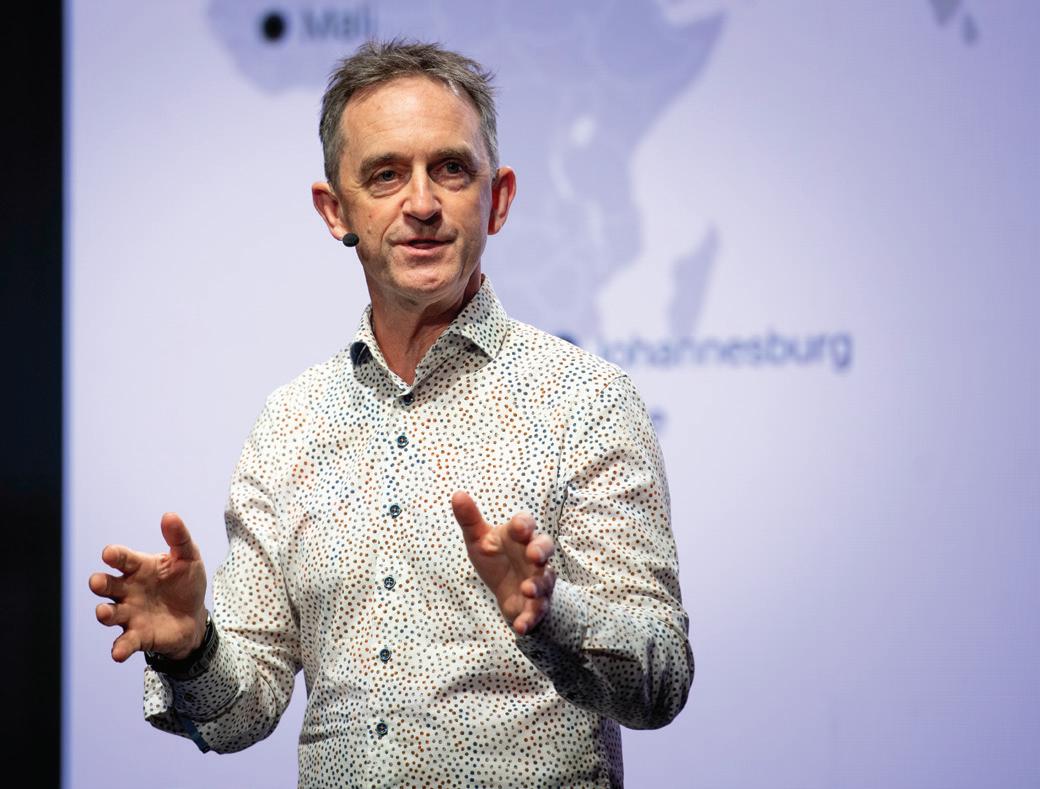
CMJ: IN YOUR OPINION, ARE THERE ANY OTHER REASONS WHY WE DO NOT SEE MORE INNOVATION IN THE SOFTWARE AND TECHNOLOGY AREA OF THE MINING INDUSTRY?
GG: I can give you three reasons why I think there is a problem in innovation in our piece of the industry. I cannot speak for engineering or processing. The first reason is that the resident, traditional software players came from inside the industry. They know what they know. They might digitize an old process, so you are doing the same thing slightly differently, but everyone is talking to each other in the same language again and again. The second reason is the big consolidation move going on right now. This is happening because all the companies are found-
Seequent is headquartered in Christchurch, New Zealand, and produces world-leading earth modelling, analysis, data management, and collaboration software. It serves a variety of industries with interests in the underground. Seequent’s mining solutions aim to help companies understand subsurface data and mine smarter.
er-owned. Founders must sell their technology at some point, and bigger companies are the buyers. This laddering-up of technologies can be either good or bad, depending on the motivation of the buying company. If you are a consolidator that just buys up little software companies and keeps running them, I would describe that as a rental house strategy: buy a few houses, do a bit of a paint job, rent them out, collect your money. But nothing is going to change. Some of the consolidation is more about locking up the technology than doing anything interesting with it. And that is great for the shareholders of the software company, but it is not great for the customer. It throws a wet blanket right over the top of anything innovative. Those companies think “do not change anything” is the best strategy.
And the third reason — which no one talks about — is that upstream, in this geoscience area, it is a small market. If you add up the revenue streams across all the technologies, it is small, in global terms. So, why would this even be interesting to an outside player?
Those three reasons, I think, are very profound. In all the years I have been coming to PDAC, I walk around, and I do not see companies changing. I see the same booths with slightly more polish, but everyone keeps doing the same thing. Seequent is just not prepared to do that. It is not in our DNA. Everyone thinks of us as Leapfrog, but if you go back through the last 10 years, we have dropped a whole series of extremely innovative products into the market that are unlike anything else. We quietly just get on with the job of innovating.
CMJ: CAN YOU TELL US A BIT MORE ABOUT SOME OF THOSE INNOVATIVE PRODUCTS? AND WHAT SPARKED THE DEVELOPMENT OF YOUR NEWEST PRODUCT, SEEQUENT EVO?
GG: Leapfrog Energy is the best subsurface energy product in the world, outside of oil and gas. Now, 60% of all the world’s geothermal power runs through our software. The world was jammed up with highly complicated geostatistics software, so we built Leapfrog Edge to deliberately democratize geostatistics and make it easy for geologists. Leapfrog Works is the category leader in civil infrastructure ground modelling worldwide. Now, we are announcing Evo, Driver, and BlockSync, all game-changing technologies.
The existing players in the industry built what we describe as a “walled garden” around their technology. Their data formats are proprietary. You cannot easily send data somewhere and get someone else to work with it, because it is locked up inside their technology. This is an old strategy playbook in software. Lots of big industry players try to envelop the customer and lock them in, and once they are in, they cannot leave. But mining is a pro-
cess. No matter what these bits of software do, the information must flow through the whole mining process. So, we set out to fundamentally break that old mindset. The mining customers run the drilling rigs, they own the data, they paid for the software. What right do you have as a software company to lock it up? With Evo, we wanted to flip that entire thing on its head. We needed a new operating system where things can move in and out, in a way that is easy, sophisticated, cloud native, and puts control back in the hands of the customer.
CMJ: YOU RECENTLY PARTNERED WITH THE INTERNATIONAL GEOTHERMAL ASSOCIATION. WHY IS THAT PARTNERSHIP IMPORTANT FOR SEEQUENT?
GG: We have been quiet leaders in geothermal for so long that we wanted to support the association’s global endeavours, but it also gives us a chance to reach for a voice that we would not otherwise reach. We recently acquired a new piece of reservoir simulation technology and put it together with Leapfrog Energy. It is transforming how geothermal companies run their operations. Countries today are worried about energy security; they do not want to be dependent on someone else. Geothermal is a domestic fuel source, so countries that are lucky enough to have geothermal are starting to invest heavily to build up their geothermal capability. That is why we want to reach these organizations and help them.
CMJ: WHAT DO YOU HAVE IN MIND FOR FUTURE COLLABORATIONS? ARE THERE ANY PIECES MISSING FROM THE WORK YOU ARE CURRENTLY DOING?
GG: We are hopeful and confident that, as we launch our new products, we will see mining companies begin to take control of their own destiny and start building workflows and streamlining their operations. We need to get mining companies to come onboard and adopt that way of thinking: getting out of the lockbox and into building.
Secondly, let us facilitate the next round of innovators. One of the reasons young tech entrepreneurs do not come into this industry is that it is so hard to get in! You can see these entrepreneurs in their convention booths, doing their best to convince a mining company to buy their product. If we can provide a platform for them to jump onto and connect into — with open application programming interfaces (APIs), high performance, cloud compute: a massively secure system that runs at industrial strength and is replicated all around the world — then we can stimulate a whole new generation of entrepreneurs and innovators. That is maybe a fourth reason we do
not see innovation: it is so hard. Seequent had to fight for 10 years just to get started. We cannot do that anymore. We must encourage these young, creative, and destructive thinkers to come into mining instead of going somewhere else. So, I think the missing pieces will come with the arrival of the entrepreneurs and new, interesting startups. They do not need to be owned by us. We just want to facilitate them to arrive.
GG: We are growing fast, so we will be a lot bigger than we are now. We will make vast strides in the civil infrastructure market. Like mining, it has its own challenges. When was the last time you can recall a large infrastructure project that was on budget and on time? One of the challenges is that everything that is built — like stadiums, freeways, and airports — is built in or on the underground. No one has ever connected the idea of subsurface uncertainty with designed, built infrastructure. Now that Seequent is part of Bentley Systems, leaders in the built infrastructure world, there is a chance for us to transform how our infrastructure is delivered. That is a massive market, and we are going to approach it the way we approach mining: sideways.
Within mining, there are vast opportunities to improve the way mining is done. Our ultimate goal on the mining side is to help companies build better businesses. There is so much going on for mining executives right now, in terms of geopolitics, trade, inflation, and social license to operate — it is a really long list — and most of those issues are uncertain and highly volatile. So, how do you navigate your mining company, which is a 50- to 100-year business, through that kind of interim volatility? Those are punishing requirements on mining executives. We believe that mining companies need to be adaptable and agile. The purpose of Evo being open and flexible is to deliver mining companies means by which they can be fundamentally flexible. Right now, with the lockbox, they cannot. Mining companies are being asked to be technology companies. Work is loaded on the mining company to connect all these Lego blocks together that do not join up. And they are all doing it individually. Think of the cost of that to the industry. It is a morally indefensible way of running technology, so we are going to turn this on its head and do it the opposite way around. Seequent is probably the first technology company attending PDAC that has ever given code away in an open-source format. It is the modern way to go.
Kesiah Stoker is a multi-skilled freelance writer.
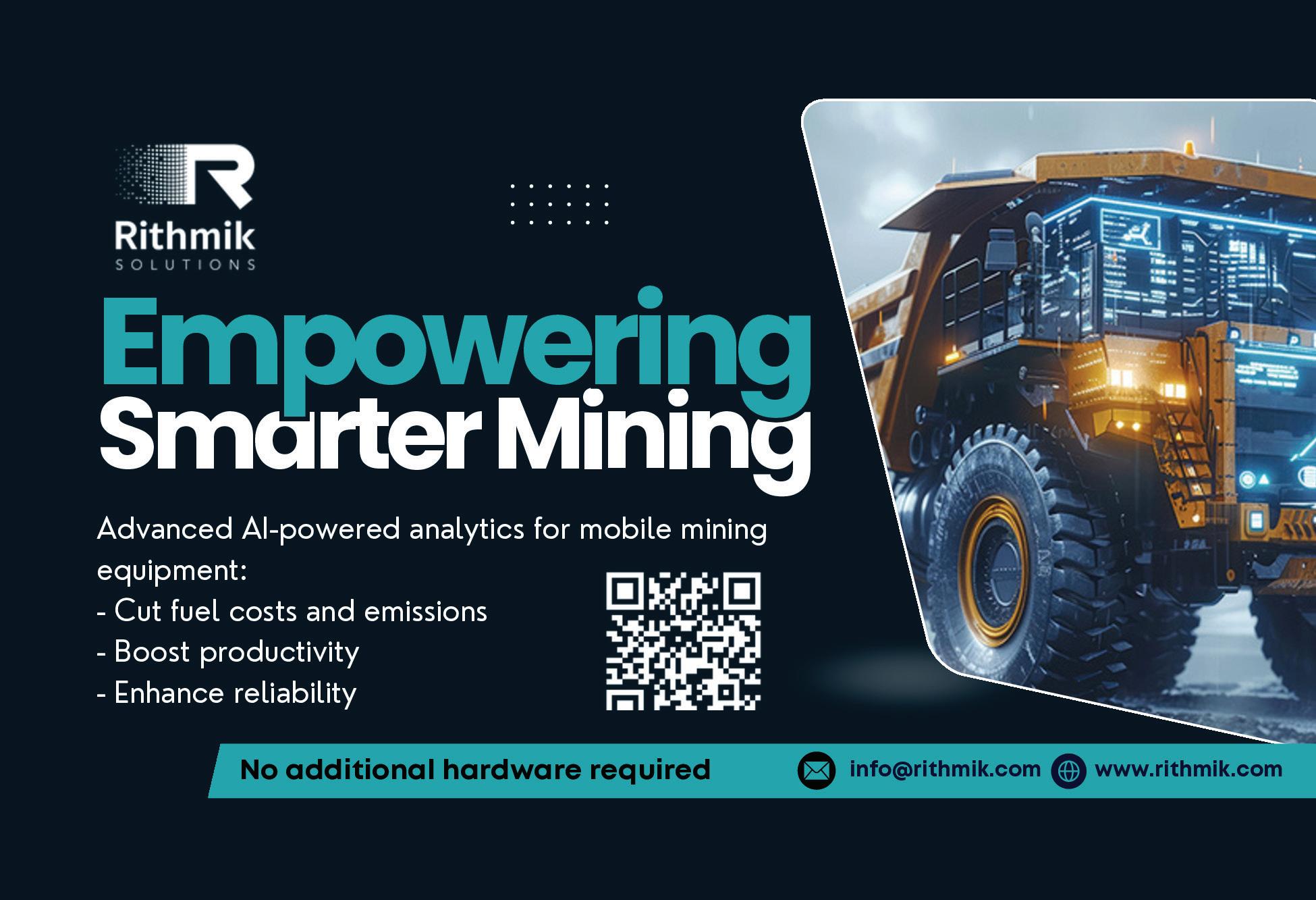
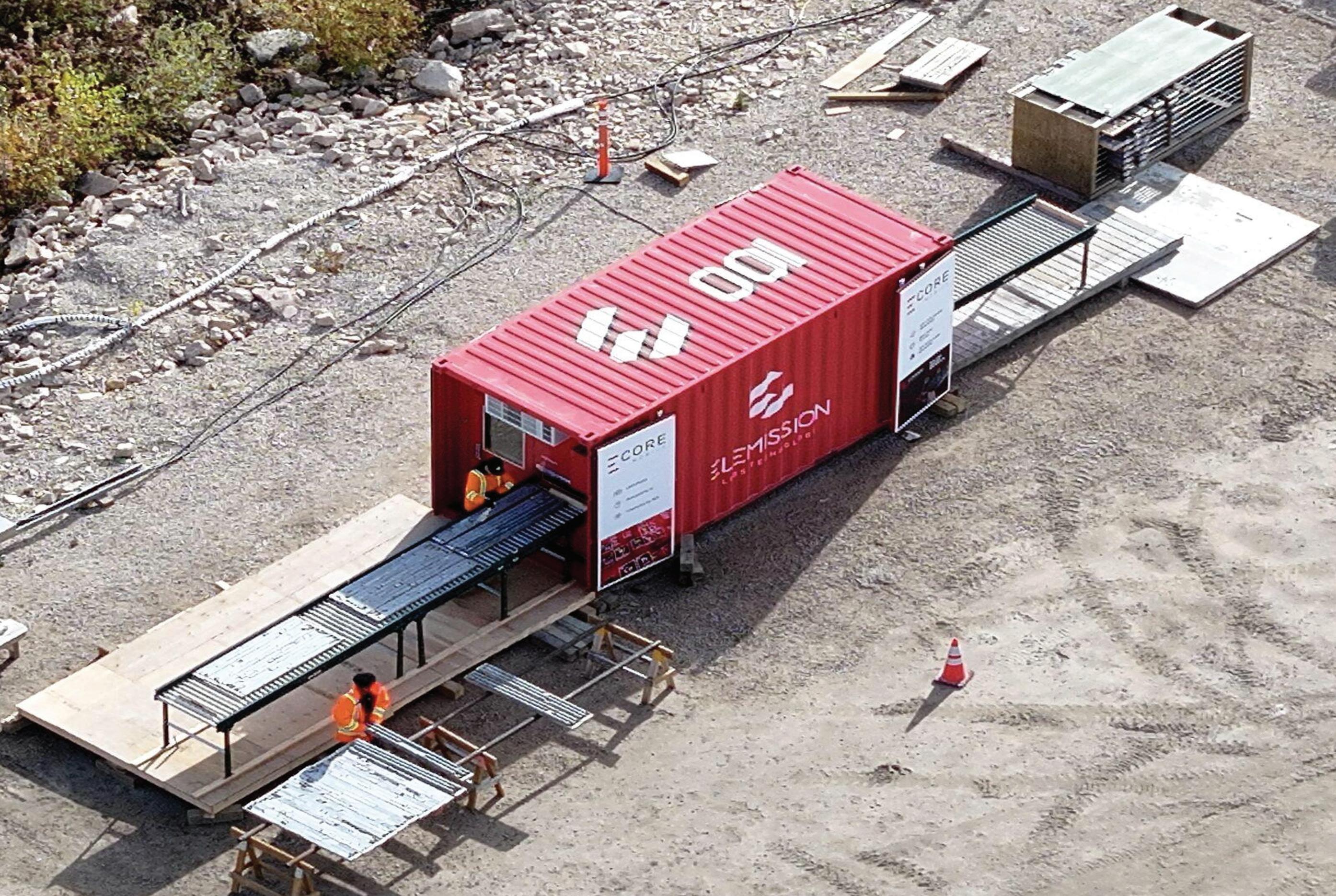
As climate change accelerates, exploration firms and global miners face mounting pressure from two directions. On one side, shareholders, as well as some policymakers, want them to accelerate the pace at which they can efficiently identify and then bring critical minerals to the market. On the other, regulators, non-governmental organizations (NGOs), and ESG-oriented institutional investors increasingly expect miners to devise new ways to minimize mine footprints, optimize on-site energy consumption, reduce chemical use, and mitigate the environmental impacts of tailings. Both types of stakeholders are motivated by a desire to accelerate the energy transition and reduce carbon emissions in the wider economy by driving mining productivity through innovation.
Despite advances in exploration technologies aimed at identifying mineral deposits, the processes for testing core samples remains cumbersome and still relies, in many cases, on hand-logged entries by geologists as well as chemical assays that must be conducted in offsite laboratories. The industry routinely uses mineral classification
imaging techniques, such as X-ray fluorescence spectrometry and infra-red hyperspectral imaging, but these can also be time-consuming and are not effective with lighter elements, including lithium.
Laser-induced breakdown spectroscopy (LIBS) has emerged in the past decade as a compelling alternative. Conceptually, the surface of a core sample is ablated with laser pulses while a spectrometer takes readings from the resulting plasma emissions. As the plasma cools, the optical device records the distinct spectral fingerprints for every element contained within the ablated portion of the sample, creating a rapid and highly granular in situ mapping of the mineral composition of the sample.
In the past decade, research-oriented applications for LIBS involved the deployment of a non-commercial LIBS system on the Mars Curiosity mission in 2012. The rover used these devices (dubbed ChemCam) to evaluate the mineral composition of surface rocks without physically collecting samples. Other non-mining applications include the mapping of shale cores for unconventional oil and gas reserves.
Relying on peer-reviewed testing that has confirmed the accuracy of LIBS relative to predecessor technologies, several firms have developed and commercialized handheld LIBS analyzers for use in field prospection work. They provide advantages and precision not found in other field portable technologies. However, for core logging and exploration, handheld LIBS serve primarily as support tools. They remain labour intensive and prone to certain shortcomings, such as the need for frequent cleaning of the window on the laser aperture.
Elemission’s ECORE systems have significantly advanced the use of LIBS mineral analysis across the entire spectrum of mining activity, from prospection and exploration to exploitation, remediation, and environmental monitoring. The three ECORE models (full-scale and two portable versions, one of which is deployed to the field in a modified shipping container) automate the process, enabling larger quantities of samples to be analyzed rapidly. They use machine learning (ML) software to achieve further accuracy in mineral characterization across the full table of elements while substantially accelerating the number of readings to 2000 per second — a critical feature that enables our system to analyze kilometres of core.
ECORE’s combination of automation, artificial intelligence (AI), and speed gives miners a tool that can be used to calibrate the grinding/flotation processes and thus optimize the recovery of marketable minerals, including Cu, Li, Au, Zn, and more. Ultimately, ECORE’s automation features eliminate the risk of isolated human error, and, unlike handheld LIBS devices, provide users with accurate mineralogy.
In 2020, we reported on the results of a side-by-side test comparing Elemission’s first commercial LIBS analyzer, CORIOSITY, with a scanning electron microscopy analyzer paired with energy-dispersive X-ray spectroscopy (SEMS-EDS) — a mature technology. The goal of the published study was to assess LIBS performance against a commercialized mineral surface mapping device (TIMA-X), using core samples from the platinum group of elements (PGE) — a family of scarce minerals with applications in a broad range of domains, including chemotherapy drugs, energy catalysts, and consumer electronics such as storage devices and smartphones.
The TIMA-X analyzer required highly polished samples and a controlled laboratory environment whereas CORIOSITY is designed to scan larger quantities of samples that do not require time-consuming preparation. Our machine, moreover, was engineered to operate in harsh field conditions and does not require special devices such as pumps and gases other than air or exhaust fans. These features are intended to reduce the time and cost associated with traditional mineralogy technologies.
The results of our study showed that CORIOSITY’s rapid LIBS surface analysis yielded comparably precise core sample scans to the more established SEMS-EDS machine, even one that has been re-engineered to increase scan speeds. As demonstrated by the implementation of the extra-terrestrial mining application of the ChemCam instrument on Mars’s Curiosity rover
since 2012, our study demonstrated that LIBS is a valuable tool for surveying the landscape or orebody samples rapidly to quickly converge to high-value samples that require deeper investigation with complementary analytical approaches.
We subsequently demonstrated that the well-established microX-ray fluorescence technique validated LIBS data gathered from two other PGE samples. The study demonstrated the ability of the LIBS technique to perform direct fast high-resolution mapping of the chemical and mineralogical composition of PGE ore samples.
A related insight about the utility of LIBS analysis is that the accuracy of the scan provides critical information about the concentration and structure of both the target mineral and other minerals in the orebody, such as high levels of iron sulfates that contaminate the concentrates. That granular data, which can be collected rapidly in the field, allows miners to precisely calibrate the milling process to avoid grinding the ore more than necessary, thus saving energy and reducing operating expenses.
Additionally, the pace of the LIBS processes relative to mature technologies, when deployed across the entire mine lifecycle, enables miners to pivot more rapidly from exploration to exploitation to remediation. The accelerated speed helps address the questions of social acceptability that miners routinely encounter when permitting new mines.
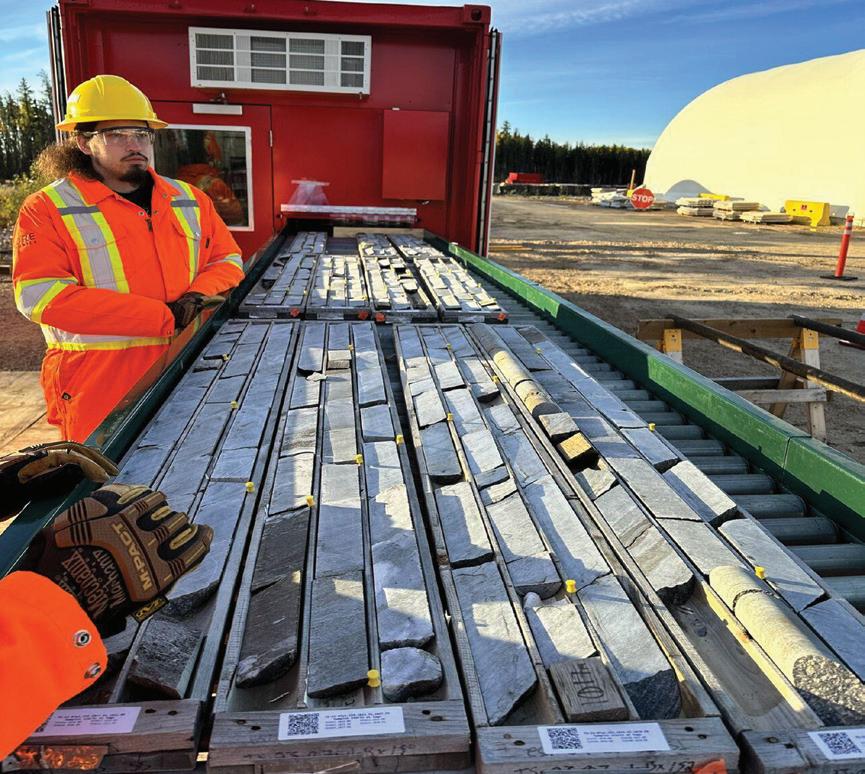
Since publishing these results, we have launched a commercial-scale pilot project, deploying ECORE, which is an enhanced version of CORIOSITY, to analyze pre- and post-treatment ores, with the goal of adjusting the grinding/flotation processes to minimize the amount of saleable minerals in the tailings stream. Elemission is working with Vancouver-based Foran Mining on a commercial-scale partnership at the company’s 100%-owned McIlvenna Bay project in Saskatchewan, currently under construction. According to Foran, the licensed 209-km2 site has indicated reserves of 39 Mt, including 1.03 billion lbs of Cu and 1.9 billion lbs of Zn, grading at 2.04% Cu equivalent.
The mine will become the first carbon-neutral facility in Canada and is supported by a $41 million grant from the federal Strategic Innovation Fund, which promotes the adoption of clean and innovative technology. The project funding will support an all battery electric vehicle (BEV) fleet, ventilation on demand,
and water-recycling, among other carbon reduction measures.
Over 12 weeks, the ECORE module scanned about 17,254 metres of drill core, and the highly granular mineral characterization maps will be transformed into digital twins, thus providing Foran with an unprecedented map of alteration and ore mineral distribution across the orebody. This body of data can be leveraged to optimize the yield by directing excavation operations to the most mineral dense regions. The ECORE’s ability to rapidly scan very large quantities of drill core has the potential to assist with the planning and engineering processes for deposits such as McIlvenna Bay, which are nearing production. (According to Foran, the project, as of February 2025, remains on schedule to start hot commissioning in H2 2025 and commercial production in H1 2026. The main critical path activities include installation of the primary structural steel and cladding for the mill, installation of the SAG mill and Ball mill, installation of the paste plant, installation of copper and zinc flotation circuits, and commissioning and ramping up to commercial production.)
As Johan Krebs, Foran’s principal Geoscientist, Orebody Knowledge, said of ECORE’s technology, “The new LIBS systems bring the speed up to a place where that was not imaginable just five years ago. Paired that with incredibly well-developed software, it is the synergy of the parts and the knowledge built around this technology that makes ECORE so different. It is only a matter of before the market notices it and latches on that there is something unique here.”
Over the past decade, theoretical and field testing of LIBS systems has demonstrated that an innovative surface scanning technology pioneered in space missions can bring both precision and accuracy to the process of assessing the commercial viability of an orebody. The combination of laser ablation, spectroscopy, and ML enables geologists and metallurgists to rapidly build a location-specific database of a wide range of on-site elements, thereby accelerating the permitting and financing stages of mine development and later optimizing the exploitation of a site. LIBS scanning further holds out the potential for reducing the loss of commercially viable minerals during the grinding/flotation stages to the tailings stream, which is a feature that can assist with remediation while increasing the yield of a mine property. Similarly, this technology allows miners to identify in advance the presence of a range of other metals and minerals that will affect the toxicity of tailings to assist with treatment and remediation.
Taken together, these features of LIBS-based analysis can provide substantial productivity improvements at all points on the mining life cycle, from exploration to remediation.
Elemission’s CEO François Doucet holds a Ph.D. and a master’s degree in analytical chemistry from the Université de Montréal and has 26 years of expertise in LIBS. He is a subject-matter expert in atomic emission, laser ablation, spectroscopy, chemometrics, nuclear forensics, and process chemistry.





















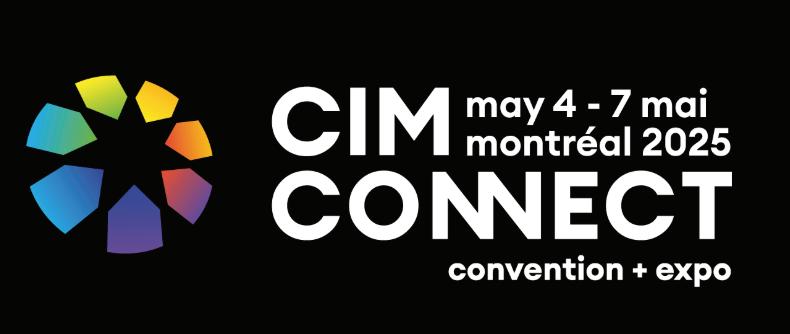
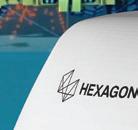







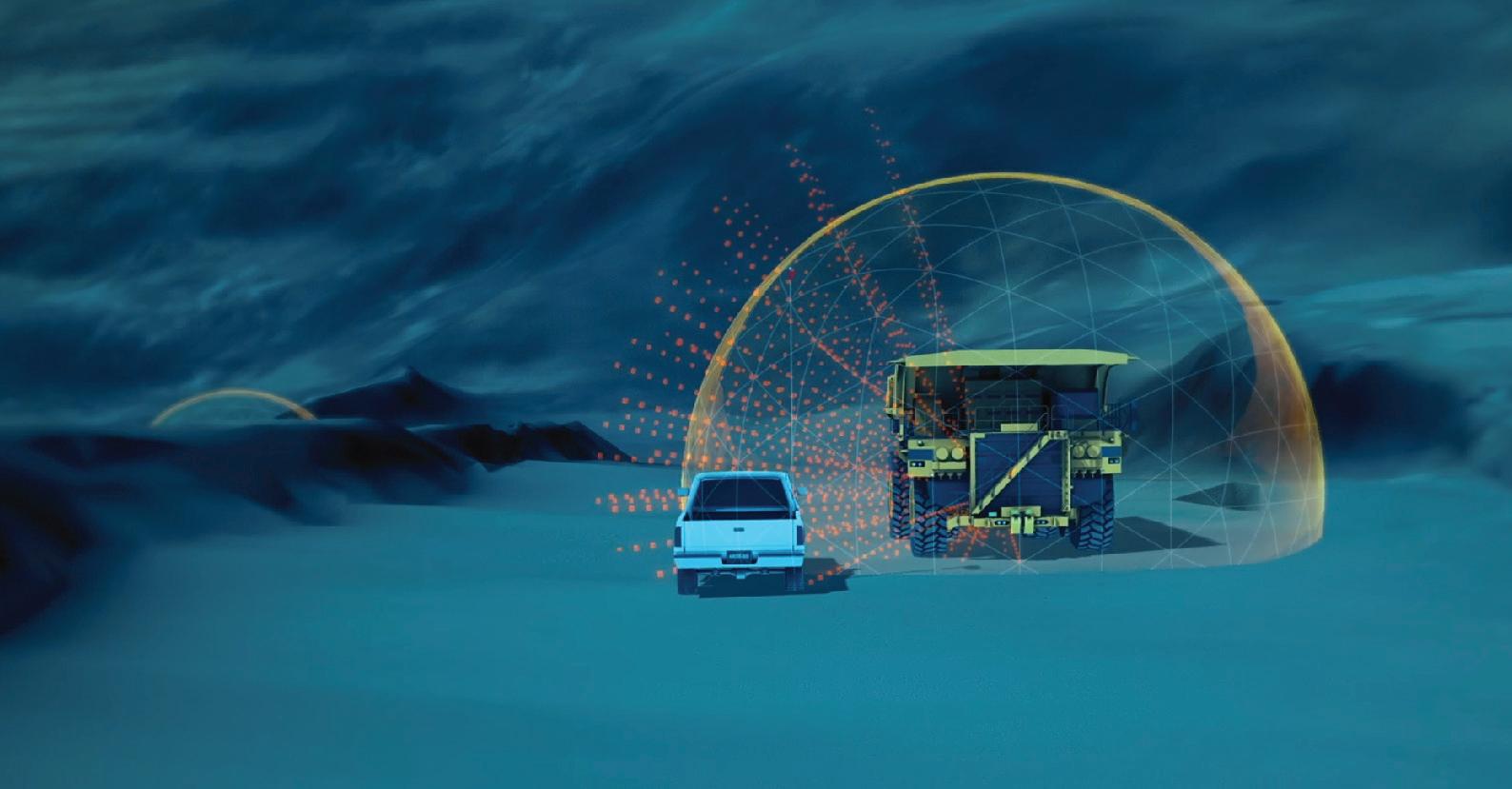




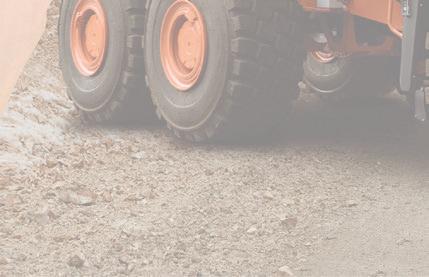
In today’s changing landscape, mining companies face mounting pressure to improve efficiency, safety, and sustainability. Digitalization offers a powerful way forward, but a holistic approach is essential to unlocking its full potential.
Digital transformation is more than adopting new technology. It reshapes how companies operate, including their structure, strategy, tools and culture. When mining companies integrate people, processes, technology, data, governance, and user experience, they can achieve lasting and meaningful change. Digital solutions are crucial, especially in remote locations or where skilled labour is scarce. These solutions can improve safety and support training, as well as reduce human error, downtime and repetitive tasks. People remain central to this transformation. To succeed, companies must invest in change management, process organization, and training.
Upskilling workers in digital literacy, data analytics, and automation technologies boosts engagement and adaptability.
Tools like smart helmets, augmented reality devices, and exoskeletons improve both safety and productivity. By encouraging a culture of innovation and continuous learning, teams are better prepared to embrace new ways of working and become more engaged and adaptable to evolving technologies.
Mining companies need to thrive in the digital age. Digital transformation supports business transformation. By changing how companies operate, it boosts efficiency and creates new value, helping build a more competitive and resilient business. Success depends on aligning digital projects with corporate goals such as performance, sustainability, and workforce safety.
By aligning digital projects with business goals and investing in people, mining companies can build safer, more efficient, and sustainable operations.
Strong governance and a deep understanding of the entire value chain are key. With access to real-time, reliable data, com-

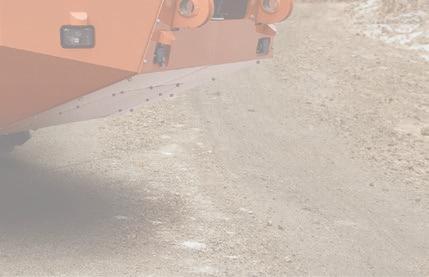
panies can make informed decisions and prioritize projects with the highest impact. This requires a flexible, well-sequenced plan.
A clear vision and measurable goals guide digital strategies. Using a people-focused design ensures new technologies meet the needs of workers and other stakeholders. Following innovation frameworks like the ISO 56002 standard helps organizations track progress, manage change effectively, deliver business value, and promote continuous improvement.
A solid technological foundation is also critical. High-speed connectivity — through internet of things (IoT)-enabled infrastructure, 5G, and private LTE — enables seamless data sharing. Edge computing allows for faster decision making by processing data near its source, while cloud integration improves access to data and supports collaboration across teams.
Mining operations generate vast amounts of data from sensors, equipment, and surveys. Standardizing data formats helps new and legacy systems work together. By leveraging advanced analytics, artificial intelligence (AI), and machine learning (ML), mining companies can streamline workflows, predict equipment failures, and extract meaningful insights from data. However, responsible AI is crucial. Algorithms must be transparent, fair, and unbiased. Ethical AI practices safeguard privacy, protect workers’ rights, and maintain trust in automated systems.
Cybersecurity also plays a critical role. Mining companies must apply robust security measures to defend sensitive operational data from increasing cyber threats.
Automation can significantly improve both efficiency and safety. Deploying autonomous vehicles such as self-driving haul trucks and drilling rigs can significantly reduce worker exposure to hazardous conditions. Drones and robotics can help with site surveys and hazardous inspections without putting workers at risk. Digital twins are another important development. They are virtual models of physical assets that support predictive maintenance and enhance operational decision making.
Digitalization can help companies align business strategies with sustainability goals and reduce environmental impacts. AI-powered systems manage energy consumption and reduce carbon emissions. IoT sensors improve how companies track
and manage water, waste, and other resources, ensuring they are used more efficiently. And finally, digital platforms help monitor environmental impacts, making it easier to comply with regulatory requirements and maintain sustainable practices.
Digital transformation cannot happen in a vacuum. Mining companies need to work with technology providers, research institutions, and industry partners to accelerate innovation. Collaborating with universities, startups, and peer organizations helps share best practices, co-develop new solutions, and explore the boundaries of technological advancements. Embracing open innovation through crowdsourcing, hackathons, and lessons from other industries, such as manufacturing and logistics, can also lead to creative problem-solving and provide valuable insights to improve mining processes.
To fully benefit from digital technologies, mining companies need strong, secure, and agile systems. They must be reliable and perform well to align with strategic objectives, work within existing operations, and adapt to changing needs. Throughout the digital transformation journey, organizations should measure progress using performance indicators, refine processes as needed, and leverage successes to move forward.
As an example, BBA supported one of its mining clients in taking a holistic approach to meet its digitalization goals. The client faced several challenges related to commercial production for its operations. These included replacing depleted orebodies, managing cash flow, and ensuring operational continuity while ramping up production. Also, the client needed to address its sustainability goals, integrate new technologies, like battery electric vehicles (BEVs) and other systems, and align organizational structures while maintaining a diverse and inclusive workplace.
BBA developed a vision-setting framework and operations philosophy to guide the operational transition. This included defining drivers, goals and objectives across key areas such as production, sustainability, culture, and technology. BBA facilitated workshops to address challenges and opportunities and created a roadmap for the path forward. The approach emphasized leveraging existing systems, designing for future business and stakeholder needs, and aligning with our client’s business, ESG, and technology priorities. This helped our client to develop initiatives to achieve outcomes such as maintaining operational continuity, reducing costs, achieving production targets, and meeting sustainability goals. It also highlighted improved safety, productivity, and organizational alignment through technology and innovation.
Digital transformation in mining should strike a balance among people, the environment, and profitability. This triple-bottom-line approach creates long-term value by addressing social and environmental impacts along with financial results.
A holistic approach to mining digitalization is about more than technology. It involves aligning digital projects with business objectives, preparing the workforce, embracing sustainability, and building strong partnerships. By following this strategic framework, mining companies can unlock the full potential of digital transformation, creating a safer, more efficient, and sustainable future for the industry.
Souheil Sabbagh, P.Eng., is vice-president, digital expertise, at BBA Consultants. Mark Yep, P.Eng., is director, digital consulting at BBA Consultants.

IMAGINE KNOWING EXACTLY WHAT YOUR EQUIPMENT NEEDS BEFORE IT NEEDS IT.
Vibration Analysis
Condition Monitoring Impact Testing
Avoid unnecessary slowdowns and unexpected repairs with Haver & Boecker Niagara’s Pulse Diagnostics suite. Our complete set of monitoring tools provides you with the proactive edge your mining operation needs.
THE POWER TO PREDICT, THE STRENGTH TO PERFORM.

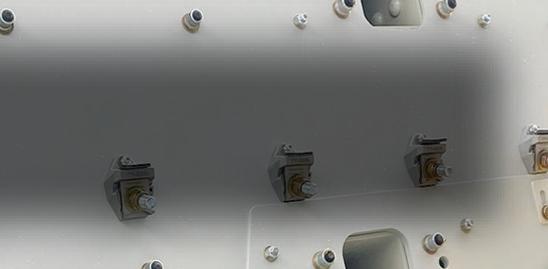


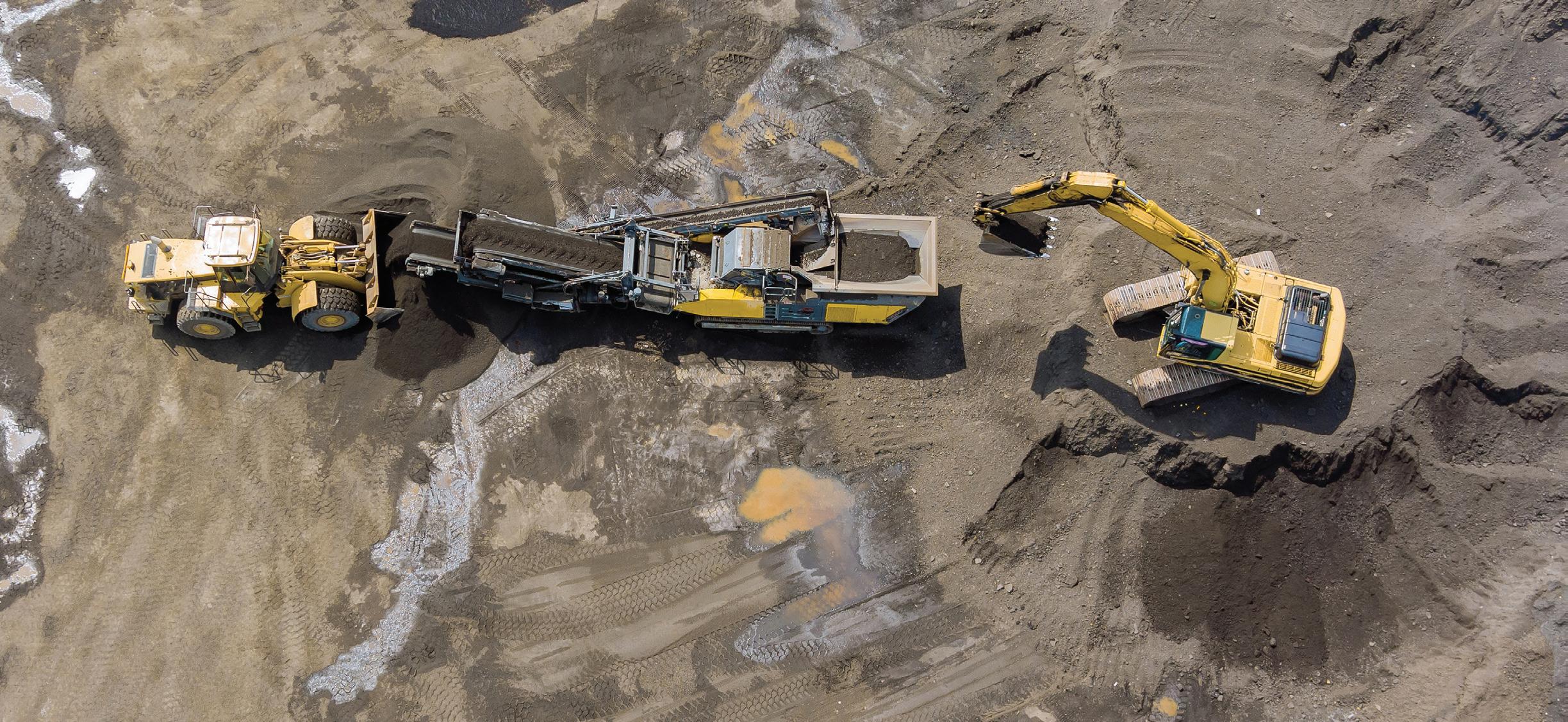
Mining operations do not have the luxury of slowing down. Every hour of downtime means lost productivity, increased costs, and potential equipment damage. That is why Petro-Canada Lubricants (PCL), an HF Sinclair brand, is proud to introduce a groundbreaking solution, an all-season general purpose grease, for mine operators dealing with the seasonal challenge of grease changeouts.
The challenge: Seasonal grease changeouts
Mining operations depend on heavy equipment, like electric and hydraulic shovels, to keep production on track. These machines endure some of the harshest environments on the planet, facing extreme seasonal temperature swings. To maintain optimal viscosity and performance, many mines traditionally alternate between summer and winter greases. However, this practice presents the following significant drawbacks:
• Increased downtime: seasonal grease changeouts may require equipment shutdowns, leading to lost production hours.
• Higher maintenance costs: changeouts often demand additional resources and create logistical challenges.
• Inconsistent lubrication: possible residual mixing of incompatible greases during transitions can lead to compromised performance.
The solution: A true all-season general purpose grease
The latest all-season products eliminate the need for seasonal grease changeouts, providing mines with a reliable, yearround solution that enhances equipment performance and reduces operational disruptions.
Key benefits of Petro-Canada Lubricants’ all-season grease
• Consistent performance in any climate: engineered to maintain stability and viscosity from sub-zero temperatures to extreme heat
• Extended equipment life: superior anti-wear and extreme-pressure properties protect critical shovel components, reducing mechanical failures.
• Minimized downtime and costs: eliminating seasonal changeouts translates to fewer maintenance stops and lower overall costs.
• Improved operational efficiency: simplifying lubrication schedules.
• Enhanced environmental sustainability: reducing grease waste and supports sustainability initiatives.
Supporting mining operations at every stage
Petro-Canada Lubricants is a partner for every stage of the mining lifecycle, from exploration to reclamation, whether underground or above it. The deep understanding of mining operations allows PCL to develop tailored solutions that address extreme working conditions, environmental regulations, and the ongoing pressure to reduce costs.
When Copper Mountain mine in B.C. was building a new mine on an old deposit, investing more than $400 million, the right grease supplier was a critical decision. PCL expertise in mining equipment, helped to optimize Copper Mountain’s operations, improving efficiency, productivity, and overall performance.
In addition to a robust grease line, PCL’s advanced products are engineered to handle the toughest mining environments.
• HYDREX XV is an all-season hydraulic fluid that provides smooth machinery operation in temperatures ranging from –34°C to 90°C, extending oil life and reducing maintenance.
• PRODURO TO-4+ synthetic all season: a synthetic, all-season transmission and gear oil that eliminates seasonal changeouts while providing unmatched protection.
• DURON engine oils: designed for maximum wear protection, and minimal engine wear even in the most severe mining conditions.
In today’s mining landscape, efficiency is everything. Expanding fleets and investing in new machinery is not always an option, making lubrication one of the most cost-effective ways to extend equipment life and lower total cost of ownership. At CIM CONNECT 2025, mining professionals are invited to explore how PCL’s proven solutions can optimize equipment performance and eliminate costly downtime.

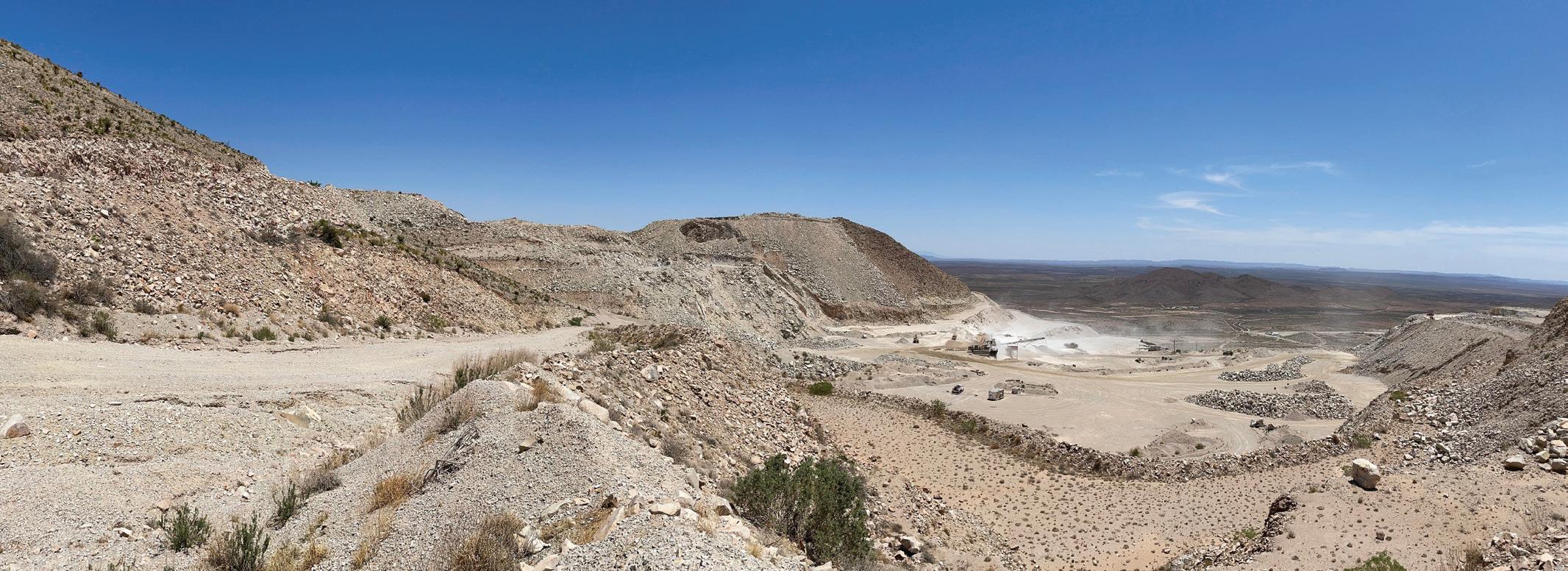
This year (2025) is shaping up to be “THE” year for rare earth elements (REEs) in Western markets. Recent international discussions underscore their global significance — from the U.S. eyeing Greenland for its REEs potential to diplomatic negotiations tying REEs access to geopolitical stability in Ukraine. Actions taken by President Trump and continued bipartisan strategic efforts emphasize REEs’ increasing importance for national security, technological progress, and economic strength.
My journey into REEs predates these recent headlines, originating in a fifth-grade classroom many years ago. That school science project, which involved separating a mixture of iron, salt, and water, ignited a lifelong curiosity. After I completed the experiment, my teacher challenged me further by asking, “What if these materials were critical for life-saving medical technology, space missions, or advanced innovations shaping our world?”
That single, thought-provoking question sparked a lasting interest in critical minerals and set me on a path toward the mining industry.
Today, with nearly two decades of global experience in mining and mineral development, I lead strategic initiatives at Tactical Resources Corp., a mineral exploration and development company focused on U.S.-made REEs used in semiconductors, electric vehicles, advanced robotics, and most importantly, national defense. Based on my personal and professional experiences, I would like to share five critical factors that can help define success for anyone navigating the complexities and opportunities of the REEs sector.
Understanding China’s substantial head start
First, we need to address the elephant in the room. China has a substantial lead in the REEs sector, and western stakeholders
must acknowledge it. China currently controls roughly 90% of global REEs production, despite accounting for only about onethird of global deposits.
This dominance is not coincidental. It is a strategic outcome of China’s aggressive long-term planning, investments in mining and refining infrastructure, and state-supported economic incentives.
Rare earth elements are so important because each of the 17 REEs exhibits unique electromagnetic properties that make them indispensable for numerous modern technologies — smartphones, electric vehicles (EVs), artificial intelligence (AI), humanoid robotics, advanced defense systems, and more. Consequently, Chinese-controlled supply chains and dominance in this sector creates potential vulnerabilities for Western supply chains and interests, including national defense interests and geopolitical leverage.
Nonetheless, there is hope, and more importantly, there is progress. Increasingly, new Western companies, like Tactical Resources, are dedicating resources to close this gap, shifting from dependence on external sources to domestic and allied supply chains. Developing this effort demands sustained attention, strategic government-industry collaboration, and substantial investment in infrastructure and innovation.
Contrary to common perceptions, North America is richly endowed with REEs resources, many of which remain largely unexplored or undeveloped.
Historically, Western stakeholders mistakenly assumed a need to look internationally — whether to China, Greenland, Ukraine, or parts of Africa — for viable REEs deposits. However, abundant, high-quality assets exist within our own borders.
When Tactical Resources began evaluating potential projects, we explicitly focused on North American deposits. The Sierra Blanca geological formation in the Southwestern U.S., for example, represents just one of several domestic sites with significant potential for REEs extraction. These domestic assets not only provide strategic advantages but also support greater geopolitical stability, economic sustainability, and reduced dependence on China and foreign countries. Expanding the exploration and development of these resources could decisively alter the dynamics of the global REEs market in favour of Western economies.
The most immediate challenge for REEs production outside of China is limited processing and refining capacity. Ironically, REEs are not inherently scarce; their mining is achievable in many locations worldwide.
However, processing and refining them into usable, high-purity products — materials that can be used for those smartphones, EVs, defense systems, and more — has historically been complex, energy-intensive, and environmentally challenging. This refining bottleneck enabled China to dominate the global supply chain by effectively positioning itself as the world’s primary processor and refiner of REEs.
The West, however, is now beginning to overcome these hurdles. Encouraged by strategic incentives and early government-industry partnerships, significant investment in refining infrastructure is underway across North America.
Facilities currently under construction or planned for development promise to create the foundation for a fully integrated domestic REEs supply chain. Recent governmental actions in the U.S., backed by bipartisan consensus, indicate a clear strategic priority to ensure national security and technological leadership through enhanced refining and production capacity.
Continued collaboration between industry stakeholders and policymakers is critical to achieving these ambitious — but necessary — objectives.
Prioritizing geological and mineralogical understanding
The core of successful REEs development is firmly understanding geology and mineralogy. Identifying deposits with substantial, credible resource estimates is critical, but equally important is the detailed geological and mineralogical analysis of each deposit’s specific composition. Different REEs have varying market values, extraction difficulties, and industrial applications, which make expert, accurate geological insight essential
Moreover, considerations extend beyond the deposit itself. Mining companies and developers must assess infrastructure, accessibility and proximity to major transportation hubs, and logistics networks. Evaluating whether greenfield sites, which require substantial upfront investment, or brownfield sites, which can leverage existing infrastructure for quicker project turnaround, offer greater strategic value is a significant decision factor.
Tactical Resources, for example, strategically selected the Sierra Blanca quarry near El Paso, Texas, recognizing its geo-
logical and mineralogical strengths, existing infrastructure, and advantageous location that together aim to enable cost-effective production and streamlined distribution capabilities.
Committing to sustainable and environmentally responsible practices
The REEs sector has made quite a bit of progress, but one area that still needs improvement is minimizing the environmental footprint of operations. There is no secret why China dominates this space — the processing and refining of REEs makes it a fundamentally dirty business.
Addressing these environmental concerns requires innovative solutions grounded in geology itself. Some deposits naturally simplify the extraction and refining process, dramatically reducing the environmental footprint. In these instances, nature has effectively performed preliminary processing refining, enabling simpler, cleaner extraction methods.
Most traditional operations go through a series of very exhausting, energy intensive, and heavy steps to produce a concentrated product. This concentrate product then needs to be cracked, leached, baked, and roasted to really unlock and liberate the REEs within. This process has traditionally been a roadblock for refining capacity of REEs in the U.S.
Companies with the right “direct to leach” style assets may only be required to introduce the extraction solution to be able to dissolve the REEs in one single step, which will give them a significant environmental and cost advantage. I believe these are the companies and assets that stakeholders in this market should keep an eye on.
The REEs market is at an unprecedented inflection point, poised for significant transformation in the coming years. China’s established dominance, North America’s geological abundance and emerging refining capacity, alongside growing sustainability commitments, collectively represent opportunities and challenges that require informed, strategic navigation.
My journey into REEs — sparked by youthful curiosity in a classroom and shaped by decades of industry experience — has provided me with unique perspectives on the complexities and potential of this fascinating sector. As we navigate these critical times, my ambition is to share my insights, inspire collaborative industry advancement, and contribute meaningfully to the broader understanding of REEs as foundational pillars of our technological future.
Much like the educator who profoundly influenced me, I aim to help others in our industry recognize and leverage these exciting opportunities, turning strategic insight into practical action to help take this market to the next level. I hope I can serve as a good teacher for others in this space, as they evaluate strong companies and assets and plan for future partnerships and investments.
Kuljit (Jeet) Basi is the president and executive chairman of Tactical Resources Corp., a mineral exploration and development company focused on U.S.-made REEs used in semiconductors, EVs, advanced robotics, and most importantly, national defense.


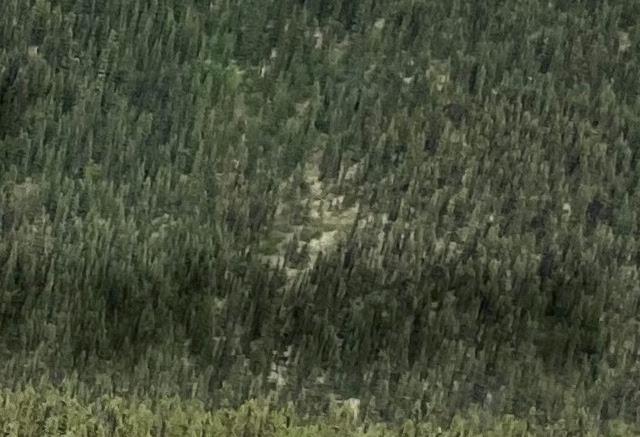
Wildfire hazard is not new, but it is changing and the risk of wildfires destroying mining and industrial operations in remote locations has never been higher. Wildfire is increasing steadily in frequency, extent, and severity, and there has been a dramatic growth in mining and other industrial operations facing substantial losses because of shutdowns and forced evacuations.
Remote operations that are hours away by road or air from the nearest firefighting base require custom wildfire risk mitigation efforts that recognize the absence of nearby firefighting resources. They need to plan to mitigate these disasters independently rather than hoping the assistance of others will arrive in time. In today’s changing fire environment, perspectives and approaches to mitigating risk must also change. It is no longer a question of “if,” but rather a question of “when.”
Andy Low is a senior wildfire specialist, and special projects lead at Forsite. He brings 27 years of practical, on-the-ground wildfire operations experience to his role helping industrial clients improve their fire resilience, and he says, “There is a growing recognition across the mining and industrial sectors that wildfire threat needs to be considered in relation to specific operating locations and the services and transportation networks that support them. There is realization that wildfire agencies are becoming increasingly taxed during fire seasons, and that can translate into remote resource projects needing to be more self-reliant in their planning and decision making. Companies are now proactively integrating wildfire into their broader risk management strategies, rather than reacting once a threat is imminent.”
Fortunately, today’s digital landscape is giving us better data and improving ability and accuracy when analyzing forests and developing predictive weather and wildfire models. Forsite’s expertise, strategic mindset, and technology is at the forefront of risk mitigation efforts, collaborating with companies to develop and implement innovative technologies and tools to enhance wildfire resilience.
Mitigation of wildfire risk requires a complete management approach to reduce wildfires ignited from infrastructure and operations, as well as mitigating risk to infrastructure and staff. Mining companies need to be prepared for natural and human-caused wildfires that impact on their worksites, as well as understand the liability and consequences of operations causing wildfire. Effective solutions are approached through the four phases of emergency management: mitigation, preparedness, response, and recovery.
The foundation of effective wildfire risk mitigation is a thorough risk assessment. There is a need to understand the complexities and intricacies of planning for a wildfire emergency, recognizing that every operation is unique and working to identify solutions that work. Combining extensive experience in wildfire management and the latest wildfire science with insights gained from previous work on wildfire risk assessments and mitigation planning for mining operations allows to provide insightful, efficient solutions.
Mr. Low says, “Forsite’s process starts with a boots-on-theground assessment of wildfire exposure and site-specific vul-
nerabilities, followed by a spatial analysis of fuels, access, suppression capability, and ignition risk. We work closely with clients to co-develop practical mitigation strategies, ranging from vegetation management to emergency response planning. The result is a clear, actionable roadmap that supports both operational and environmental goals. It is comprehensive, site-specific, and grounded in real-world feasibility.”
He adds, “Wildfire risk mitigation protects more than just physical assets — it helps ensure worker safety, reduces downtime, and safeguards critical infrastructure. For industrial operators, these efforts can also support compliance, insurance eligibility, and environmental stewardship. It is about building resilience into the operation from the ground up.”
Resiliency through infrastructure adaptation
Increasing resiliency to wildfire is rooted in changing how we interface infrastructure and the natural environment. Through proper site preparation, vegetation management, and choice of building materials, it is possible to construct facilities and infrastructure that can withstand intense wildfires. Increasing ventilation in buildings and supplying proper PPE may allow work to continue under smoky conditions that would otherwise be considered a health risk. Planning redundancy into supply lines or improving roadways will facilitate safer access and egress from your site during an emergency and facilitate a continuous flow of critical supplies during a wildfire.
Ultimately, improving the resiliency of your site means increasing worker safety and reducing the likelihood of evacuations or infrastructure damage from wildfires. In a recently completed wildfire risk assessment for a client in B.C.’s Golden Triangle, Forsite identified key wildfire vulnerabilities related to access and egress under emergency evacuation conditions.
“The client appreciated the clarity and practicality of the recommendations — especially how we tied risk directly to operational impact. They have been in the process of using our report to refine their emergency response procedures, which is personally gratifying as that has a direct relationship to worker safety,” says Low.
Asked about common problems he has seen at remote sites and easy wins, Low recommends starting with unmanaged vegetation buildup in and around critical infrastructure —
fuel that is just waiting for an ignition source, “A simple but high-impact recommendation is to establish and maintain a well-defined fuel-free or fuel-reduced zone around infrastructure. It is cost-effective, easy to implement, and significantly reduces the risk of fire spread to key assets,” he added.
The rapidly evolving digital landscape is giving us better data and improving our ability and accuracy in analyzing forests and developing predictive models. Forsite is at the forefront, collaborating with companies to mitigate both wildfire risk to and from infrastructure. Our team has been hard at work, developing new wildfire situational awareness products and services designed to alert operations during periods of elevated wildfire weather conditions.
Forsite offers a wide range of deliverables based on analytics and research and development suitable for wildfire mitigation in the mining industry, including risk mapping and spatial data, hazard assessments, mitigation planning and implementation, emergency management training, wildfire behaviour modeling (either static or real time), and operational firefighting maps.
Additionally, we work to prepare companies by prioritizing wildfire risk and using our extensive operational response experience to recommend mitigation activities. Examples of Forsite initiatives include building a web-based mapping platform that displays relevant wildfire information with infrastructure and links wildfire hazard with operational responses.
Forsite combines on-the-ground wildfire expertise with spatial analysis tools, remote sensing, and predictive fire behaviour modeling. Our wildfire risk assessment approach integrates remote sensing, LiDAR data, and custom fuel models to generate site-specific insights. These tools help clients prioritize mitigation actions based on real risk — not guesswork. Low says, “For remote and high-value sites, tools like LiDAR and custom fuel typing are must-haves for precision planning.”
Wildfire behaviour modeling is a strategic solution used to illustrate how a wildfire could move across the landscape surrounding your operations under various weather conditions. Models help determine how fast a fire could move toward your infrastructure, which locations are most at risk, and how difficult a wildfire may be to suppress, leading to more accurate decision making and planning. Accurate modeling can allow for decisions to be based on real-time data, increasing their effectiveness and enhancing safety for all aspects of your operation.
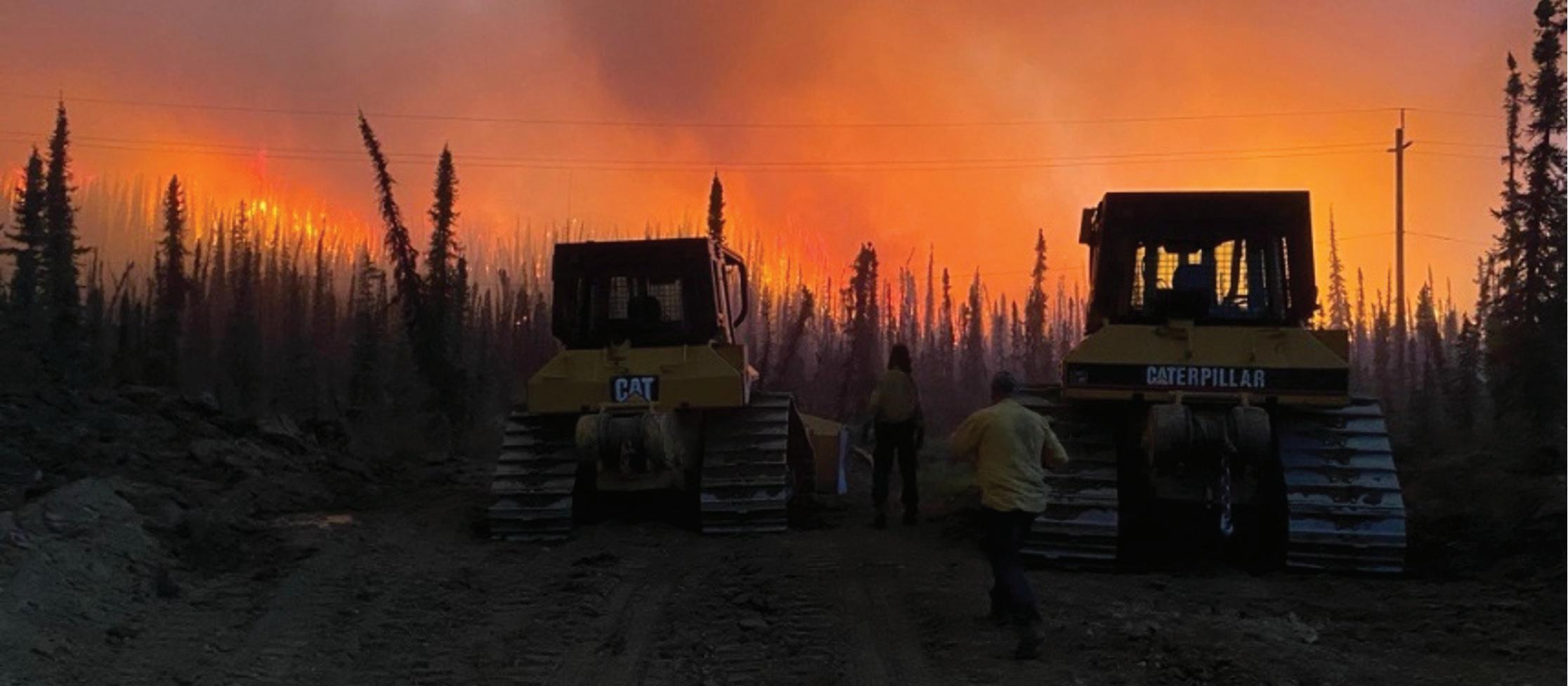
A wildfire that threatened over 20 km of transmission line servicing a large mining operation.
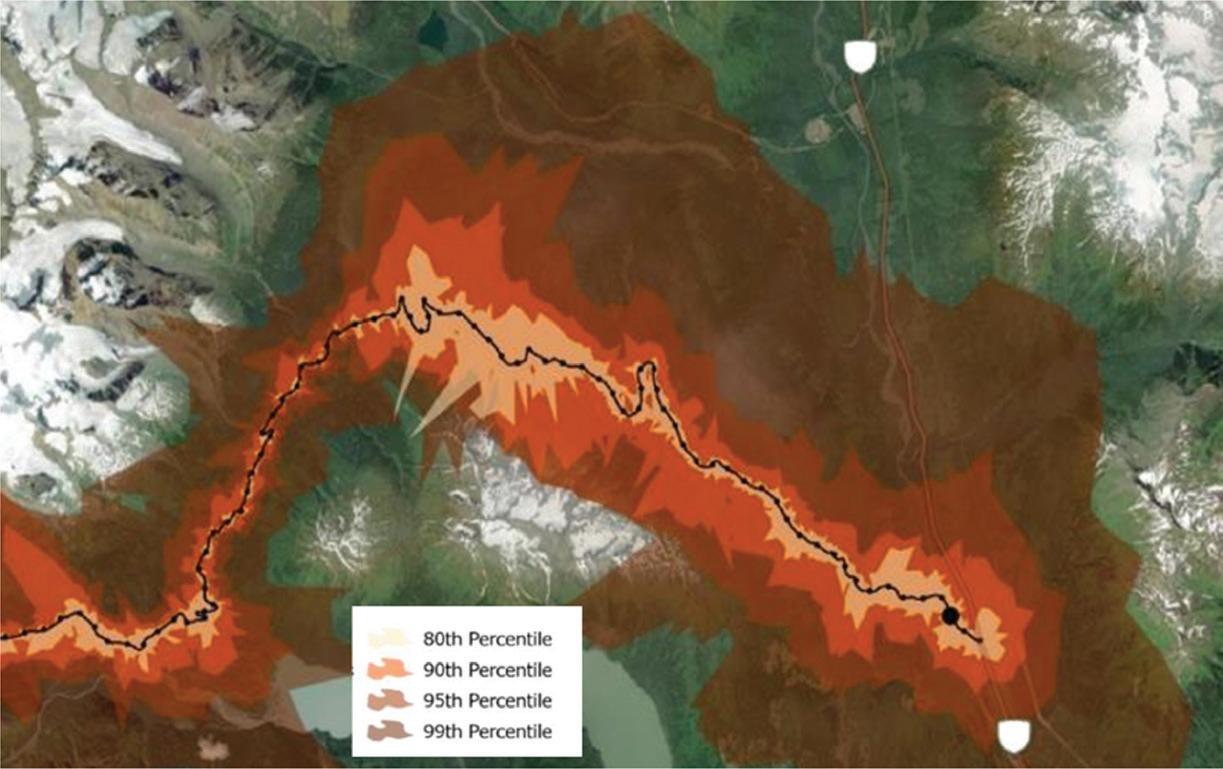
Forsite and our partners have the expertise of seasoned fire weather and behaviour specialists, coupled with skilled remote sensing analysts. This blend of remote sensing technology and leading-edge wildfire science empowers us to thoroughly assess potential wildfire risk. We are committed to supporting our partners and their operations to safeguard infrastructure and local communities.
Low says, “We have coupled that with some outstanding minds who have really strong graduate-level analytical skills. The result is that we can put together analyses that are grounded in decades of wildfire experience. That, paired with our advanced spatial tools, creates real value for our clients.”
Aside from internal emergency planning and site-level mitigation measures, building relationships with nearby communities and local emergency response agencies can increase the effectiveness of wildfire mitigation and strengthen community relations between your project and the public. Wildfire risk management is challenging and fostering partnerships across stakeholder groups, industries, professionals, and the public is crucial.
Risk from wildfire does not end after the fire has passed. High-intensity wildfires increase the likelihood of mass movements, flash floods, and permafrost melt for many years after the wildfire has passed, putting infrastructure at increased risk. Pre-emptively identifying post-wildfire hazards that may require additional qualified professional assessment.
Mounting pressure is coming from the research community and wildfire management agencies to change how we perceive wildfire risk. The natural ecological role wildfire fulfills as an agent of renewal, enhancing biological diversity, and increasing resiliency of natural areas has become strikingly clear. These ecosystem services are not only important for the natural environment but provide immeasurable value to our society. It has become obvious that a century of striving for fire
exclusion and aggressive wildfire suppression is an unsustainable path forward. Wildfire is a natural part of our ecosystems, and we must adapt to live and operate alongside it.
As the past two decades have shown, wildfire risk is not going away. The frequency, extent, and severity of wildfires today are demanding innovative and multidisciplinary solutions to meet this challenge and move towards full-circle fire resiliency.
Mac Prawdzik is a fuels management specialist at Forsite Consultants.
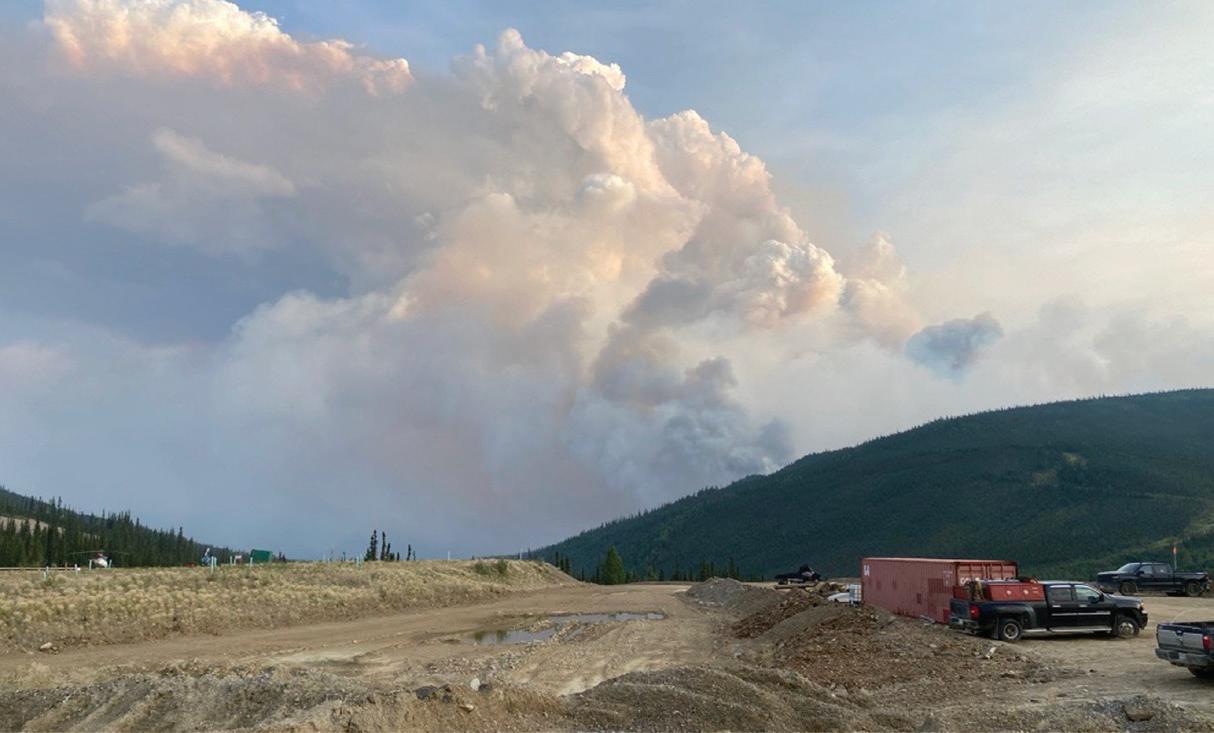




SCREEN PANELS WS 85

• Open cast polyurethane provides highest abrasion resistance


• Longer wear life lowers production costs
• Designed specific to your application



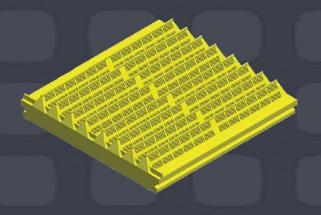


• Outlast AR plate 3:1


TeePee™ PANELS
• Double the open area
• Double the drainage rate
• Reduce moisture content by 3 - 5%
• No grinding or welding reduces maintenance downtime




• Patented magnetic fastening system improves holding strength WEAR LINERS WS 2.10

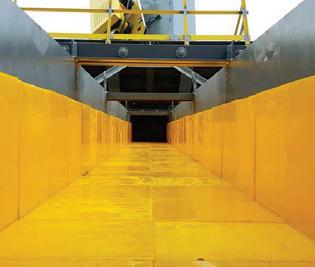





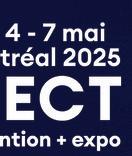
By
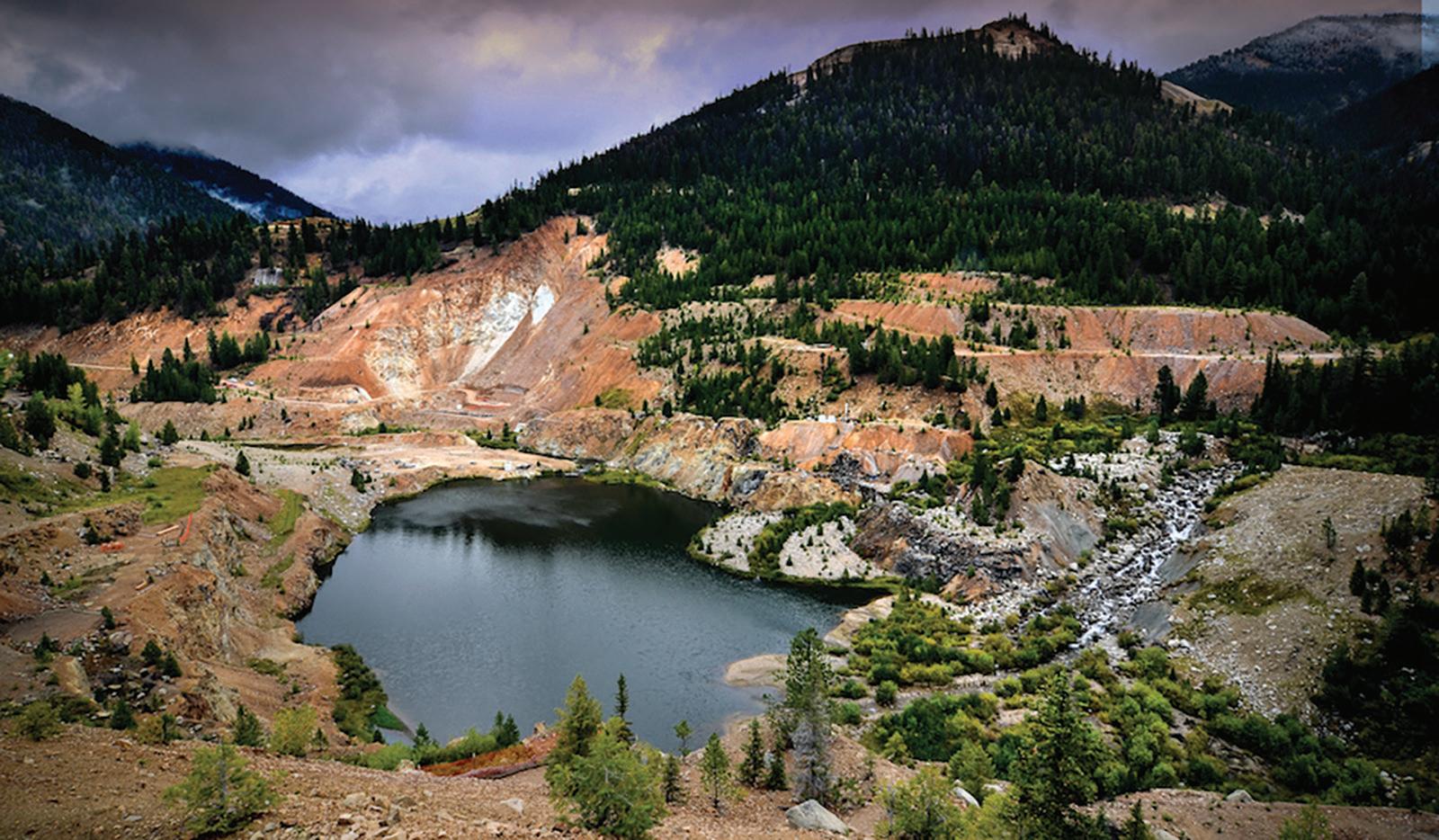
Canadian mining companies and most domestic mining associations seem to agree on one idea: The permitting and approvals process in Canada needs to be vastly improved so that mining projects come into production much quicker than they do now.
Canada’s focus on securing critical minerals to overcome the Chinese monopoly has led many politicians and policy makers to give mining approvals a second look. Critical minerals are low hanging fruit. The International Energy Agency says demand for copper, nickel, and zinc will explode over the next 15 years. Their conclusion? Canada will lose the global race for critical minerals and rare earth elements if the nation’s policy makers do not streamline and expedite approvals and permitting.
The Mining Association of Canada (MAC) — a national organization which has served as the voice for Canada’s mining industry for decades — released a landmark report in November 2022 called “Project Permitting in Canada and the Mining Industry.” The report put a microscope on this important issue.
Here is the MAC report’s conclusion: “There is a broad consensus that the timeline for the planning and approval process for new projects, (including “no go”) must be shortened from the current 10 to 15 years without losing the requirements for good planning, environmental protection, and Indigenous consultation.”
The report went on to describe the obstacle to reform: “For nearly 30 years, the objective of “one project one assessment” remains elusive. The combination of provincial and federal assessment and approval processes, and related necessary Indigenous engagement, continues to fall short of coordinated, timely and
efficient planning. Such uncoordinated process duplication is not seen in other countries.”
Numerous reform attempts have sought to achieve this laudable “one project one assessment” goal, but governments at both levels seem to continually add more nebulous evaluative criteria to mining approvals. Indigenous consultation requirements can also affect timelines, which creates more incentive for an expedited permitting process that brings Indigenous parties into the process throughout.
Industry media have documented over the years how the oil and gas sector has managed to do a better job at creating so-called “single window” permitting process, such as the B.C. Energy Regulator, which has now added renewable energy projects to its purview.
While there are indeed examples and case studies in Canada to draw upon, some other jurisdictions have attempted more radical changes to bring the full attention of government to the goal of vastly expediting the permitting process.
One such example is Idaho’s so-called SPEED Act. We turn to that now.
On January 24, 2025, Idaho Governor Brad Little signed executive order 2025-02, the Strategic Permitting, Efficiency, and Economic Development (SPEED) Act. The Act aimed at better coordinating state permitting on major projects that promote energy independence, support national security, and drive the economy. Thus, the governor passed the law to push forward priority projects that met the above criteria.
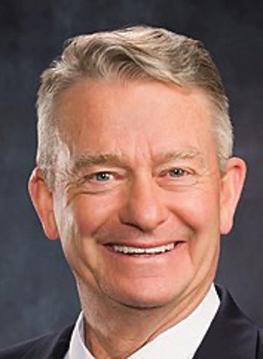
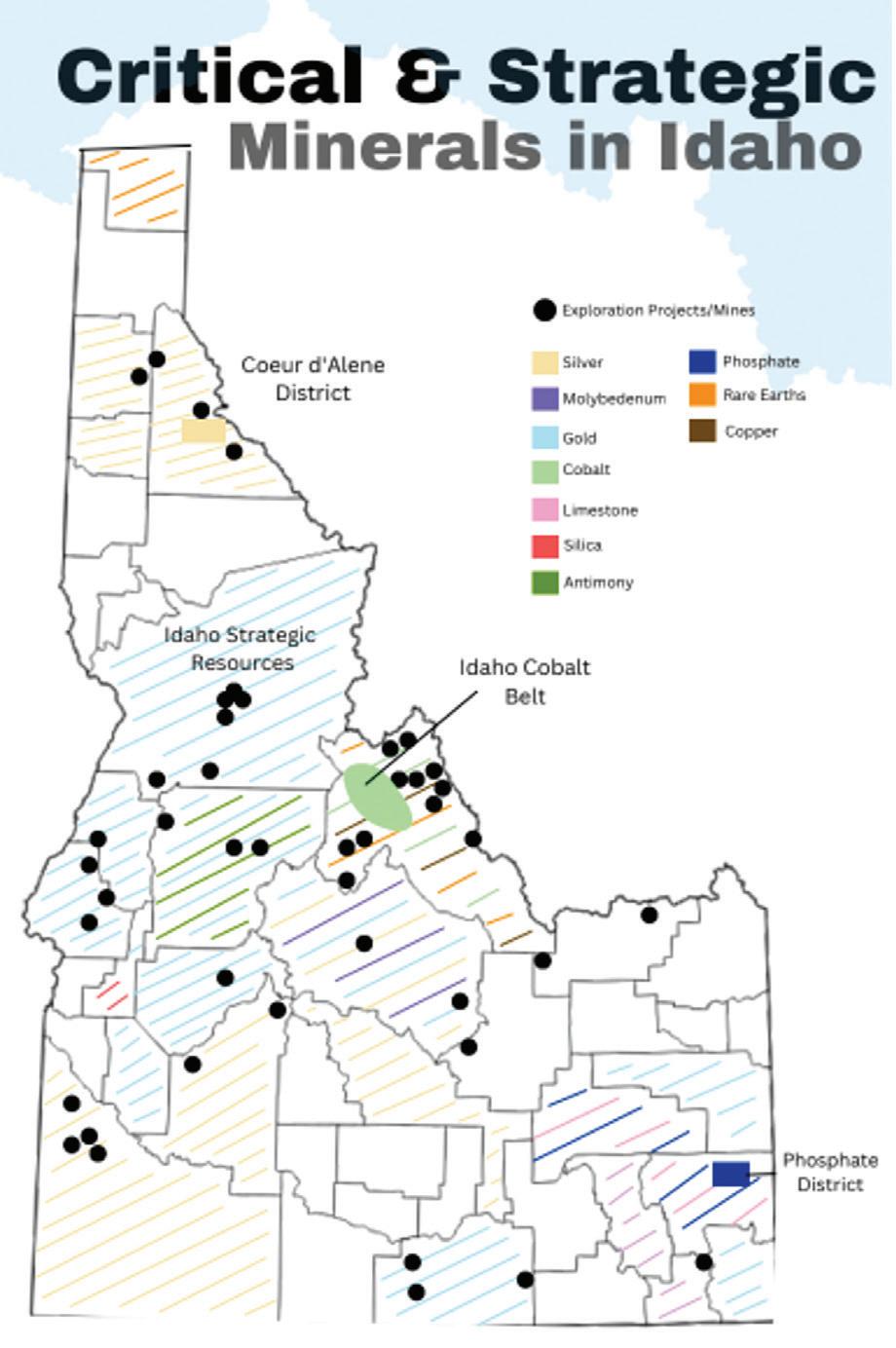
How exactly does the SPEED Act work? Well, according to a government news release, the executive order creates a new SPEED council comprised of several state agency directors that will aim to expedite the review of permits and increase collaboration with project proponents. The order’s overarching goal is to seek to eliminate duplicative or unnecessary statutes and rules
The new policy regime also aims to include all infrastructure requirements within the approvals process. The press release reads: “Large scale projects that require permits from multiple state agencies could include electricity generation and transmission projects, mining projects, data center development, fabrication facilities, water facilities, and other important projects that support communities across Idaho, as determined by the SPEED Council.”
Mining industry observers also highlighted the unprecedented co-ordination between the governor’s office and state agencies. During the unveiling of the new executive order, Governor Little was joined by Lt. Governor Scott Bedke and several state agency directors. Government sources announced that Richard Stover — administrator of the Governor’s Office of Energy and Mineral Resources — will chair the SPEED Council and Lt. Governor Bedke will advise the council.
At the unveiling news conference, Governor Little stated, “Idaho leads the nation in streamlining regulations and promoting good government, but there is always more we can do to improve. With President Trump’s return to the White House, there is a renewed focus on efficiency in government at the federal level. In that same spirit, here in Idaho we are going to take even more steps to make sure state government does not
get in the way of projects that support our economy.”
Before continuing forward, it is important to get a better sense of Idaho as a mining jurisdiction and how the state’s regulatory climate was prior to the SPEED Act.
Idaho as an historic mining jurisdiction
Idaho is famously called the “gem state.” This was a nickname it received during its pre-state territorial days. However, it did not gain the name from its gem or mineral wealth. Historical sources say the name was more about hype. The word Idaho was supposedly derived from a purported Native American word “EDah-Hoe” meaning “Gem of the Mountains” or “Light on the Mountain.” Thus, the name was adopted to draw attention to the territory to make its case for statehood. However, since that time, the state has become renowned for its rich mining history and potential.
It was in fact gold that drew many non-Indigenous settlers to the state in the first place and its discovery propelled the territory to statehood in 1863. However, gold deposits soon began to disappear, leading prospectors to seek other minerals. By the late 1800s, silver, lead, and zinc were discovered in the Coeur D’Alene area.
Idaho now produces about 45% of all silver in the U.S. The state also produces about 15% of the phosphate produced in the U.S. Finally, true to its original name, Idaho now produces many precious and semi-precious stones.
To get an international perspective, it is important to see how Idaho sits relative to other similarly suited mining jurisdictions. The Fraser Institute’s Annual Survey of Mining Companies presents one tool to evaluate the mining policy attractiveness of various jurisdictions. Many jurisdictions around the world have strong mineral potential but do not possess a stable policy environment enticing to investors and mining exploration. The Fraser Institute’s survey involves interacting with mining executives, so it reflects the opinions of decision makers.
When asked about the Fraser Institute’s most recent 2023 figures, Fraser Institute Policy Analyst Julio Mejía pointed out that Idaho ranked 20th out of 86 jurisdictions in terms of investment attractiveness and 25th of 86 in terms of policy alone.

He added that, “Investors in Idaho expressed reduced concern over infrastructure issues and uncertainty surrounding disputed land claims, with none of the respondents citing these factors as deterrents to investment. Only 11% of respondents stated that Idaho’s labor regulations deter investment, a decrease of 3 percentage points compared to 2022.” One potential area where comparing Idaho to Canada becomes tricky is in Indigenous land claims. Although U.S. mining companies do have to deal with Native American groups, especially if a project affects a tribe’s lands, land claims uncertainty is much of a pronounced issue for Canada, especially given unceded lands in B.C. and elsewhere. In the U.S., tribal boundaries are much
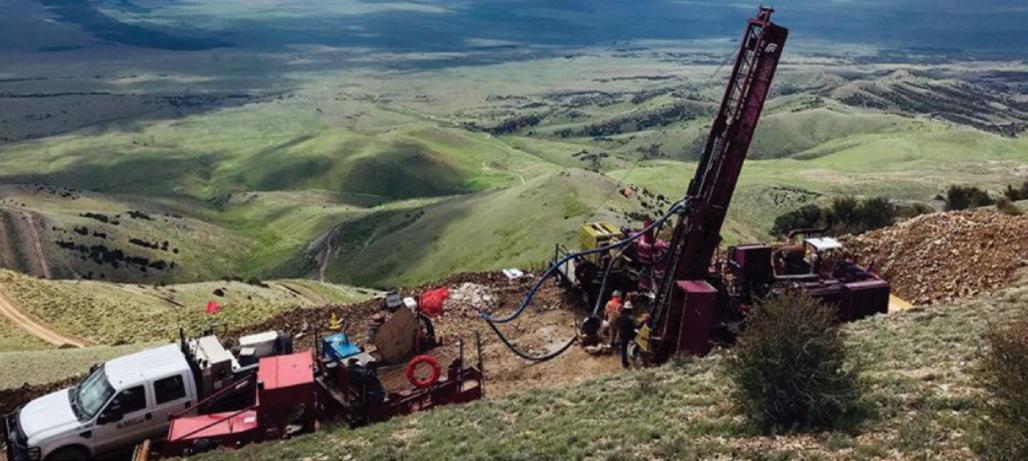
clearer.
Regarding permit times, Mejía said the Fraser Institute did not receive enough responses from Idaho to include Idaho in the 2023 permit times sub survey, as only Alaska and Nevada received more than the five necessary responses to meet the threshold to be included in the survey. Thus, it would be difficult to state with certainty exactly how Idaho stood in permitting immediately before the SPEED Act was brought in.
U.S. well ahead of Canada in terms of permitting: Analyst
Although the Fraser Institute’s annual survey could not provide more clarity on Idaho’s position, Mejía said overall this most recent survey and previous ones have highlighted general trends between Canada and the U.S. Mejía said the U.S. has on average the highest percentage of respondents indicating that they received their permits in six months or less (80%).
By contrast, this average was 59% amongst Canadian jurisdictions. Similarly, on average, 54% of respondents for Canadian jurisdictions indicated that permit approval times had lengthened either somewhat or considerably (emphasis added) over the past 10 years, which compares to 35% who said that was the case in the U.S.
Moreover, an average of 73% of U.S. respondents indicated that the US met its established timelines for approval decisions between 60% and 100% of the time, in contrast, on average, 59% of respondents for Canada said this was the case. Also, an average of 38% of respondents for Canada said that a lack of transparency deters investment in the country, compared to 32% for the U.S.. Finally, an average of 77% of survey respondents in Canada expressed either confidence or high confidence that the necessary permits will be granted, compared to 83% of respondents for the U.S.
Thus, it seems that, at least according to the mining executives that are involved in the Fraser Institute’s annual survey, it would be more likely good ideas on speeding up permitting and approvals would come from the U.S. In fact, some mining companies seeking to build mines in Idaho are specifically mentioning the SPEED Act as a contributing factor in their decision to build in Idaho. We turn now to two projects, the first being Perpetua Resource’s Stibnite gold project and the second being Liberty Gold’s Black Pine project.
Perpetua Resources, Stibnite gold, and the SPEED Act
Perpetua Resource, headquartered in Boise, Idaho, is publicly
traded on Nasdaq and the Toronto Stock Exchange. The company is determined to complete its Stibnite gold project in central Idaho. The new operation will involve recovery of an abandoned mine site. The site is about 44 air miles northwest of Cascade, Idaho and near Yellowpine, Idaho.
The company’s pre-feasibility study from 2014 found the Stibnite gold project had the largest known source of antimony in the U.S. Antimony is a critical mineral vital for defense, technology, and energy application. With an estimated reserve of 148 million Ibs of antimony, the project could meet up to 35% of U.S. antimony demand in its initial six years of production, significantly reducing reliance on foreign supply chains.
Moreover, the study also found the project contained one of the top 10 gold deposits in the U.S. In total, the company estimated in its study that it could recover more than four million oz. of gold over the mine’s projected 12 years of life. The study also concluded the high grades of gold to be recovered would keep operating costs low relative to gold operations overseas.
The Idaho-based company has already taken steps on the mining project, including signing an environmental clean up agreement in 2021 with the EPA and U.S. Forest Service. The agreement granted permission to Perpetua to conduct early-action cleanup, and under the oversight of the agencies, to remove legacy mine waste and maintain water quality.
Perpetua was delighted when the Idaho governor introduced the SPEED Act, as it believed its mining operation was striving to achieve the same objectives the Act was designed for.
Jon Cherry, CEO of Perpetua Resources, commented, “We are thrilled to see Governor Little take decisive action to streamline permitting without compromising environmental integrity. The SPEED Act aligns perfectly with Perpetua’s vision to restore an abandoned mine site and responsibly develop domestic mineral resources for a more secure future.”
The Idaho Mining Association — a non-profit organization acting as a voice for the industry in the state — has also been impressed with the SPEED Act and is backing it.
Ben Davenport, the executive director of the organization, stated, “The SPEED Act exemplifies Idaho’s common sense, forward-thinking leadership. We hope that by improving communication and coordination, Idaho can help vital projects like the Stibnite gold project deliver hundreds of well-paid and highly skilled jobs to our rural communities.”
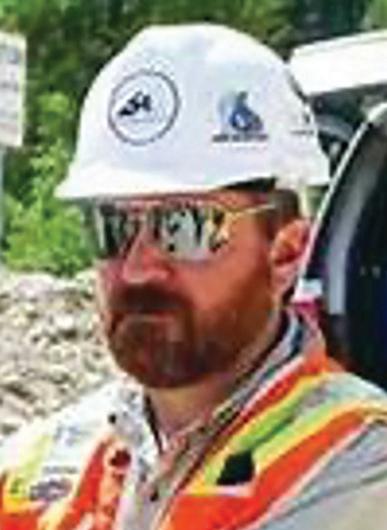
Ben Davenport, executive director of the Idaho Mining Association. CREDIT: IDAHO MINING ASSOCIATION.
Liberty Gold — a Vancouver-based mining company — has set its sights on a reviving a gold project in southern Idaho. The company has placed much hope in an expedited timeline the SPEED Act is making possible. The Black Pine oxide gold proj-
ect, located in southeastern Idaho, is a past producing open pit, run-of-mine heap leach mine.
In the past, Pegasus Gold mined about 435,000 oz. of gold and 189,000 oz. of silver from five open pit mines between 1991 and 1997.
Liberty Gold says the exploration site now covers about 40 sq. km. In the middle of 2024, Liberty Gold launched a 20,000-metre drilling effort on seven new high priority targets. The company has now completed a preliminary feasibility study for the project showing strong economic potential.
Henry Lazenby, a journalist with the Northern Miner (a sister publication to the Canadian Mining Journal), has written how Liberty Gold set an ambitious 2028 construction start for the Black Pine project.
Liberty Gold CEO said, “We are establishing a strong foundation for advancing Black Pine through the permitting process to a potential construction decision within three years, ensuring the project meets the highest environmental and operating standards.”
The Northern Miner article also mentioned Liberty signed an agreement with government agencies with the aim of helping it complete reviews for the environmental impact statement. The company is expecting that process to begin next year. Final permits should be ready by 2027, and the company believes a construction decision could be made by early 2028.
Black Pine is set to benefit from the provisions of the SPEED Act as it navigates a presumably more efficient permitting landscape.
L3 Capital analysts told the Northern Miner that this kind of framework can reduce permitting risks. It also hoped that it may also speed up the construction decision process.
However, company officials stressed much of the SPEED Act’s promise is still theoretical at this stage. Matt Zietlow, Liberty Gold’s director of regulatory affairs and sustainability, said, “While the governor did sign an executive order creating the SPEED Act in January, it is not (yet) a functionally active process. They anticipate a Q3 or Q4 launch this fall.”
He clarified, “Given that, we of course can’t opine on any actual “Liberty Gold experience” with the SPEED Act yet, but Liberty strongly supports and commends the governor’s efforts to improve and streamline the overall permitting process in Idaho.”
Zietlow also added that for more than a year Liberty Gold and key staff from the Idaho Department of Environmental Quality and the Idaho Department of Lands have already been engaged in frequent consultation on the status of the Black Pine project, proposed design, ongoing baseline studies and projected permit timelines
He said: “These joint efforts, along with a recently completed memorandum of understanding between Liberty Gold, state agencies, and the U.S Forest Service and Bureau of Land Management, directly address Governor Little’s stated first responsibility for members of the environmental council to be created by the SPEED Act.”
While expediting the regulatory and permitting process, Zietlow said the SPEED Act, from his reading, does not affect robust regulatory and environmental oversight.
He said: “The SPEED Act aims to improve overall efficiency of the permitting process with a more visible process, enhanced communication, and regular accountability to help insure reasonable and predictable permit timelines can be achieved. The Act does not circumvent or eliminate any environmental safeguards or required and appropriate environmental analyses.”
Thus, despite all the promise on paper, the jury is still out on the exact and measurable performance of the SPEED Act on the ground. Both Perpetua Resources and Liberty Gold will come to see how the executive order improves permitting timelines and whether it can enhance investor confidence in Idaho projects. Liberty Gold has already taken the next step with an optimistic timeline for construction.
Challenge is in reforming bureaucracies: Mining policy analyst
For some mining policy analysts, it is always about bridging theoretical permitting reform with actual performance on shovel-ready projects.
Heather Exner-Pirot is a senior fellow with the non-partisan Macdonald-Laurier Institute in Ottawa. She is also the Institute’s director of energy, natural resources, and environment.
When asked about the SPEED Act and permitting reform in general, she replied by email that, “Every jurisdiction in the western world is looking at how to reduce regulatory and permitting burdens. The overriding philosophy is no longer coming from the environmental side, but from the economic and national security sides.”
She added, “Getting rid of red tape and building things are politically winning messages right now. The challenge is reforming bureaucracies, so they respond in kind.”

Heather Exner-Pirot is a senior fellow with the Macdonald-Laurier Institute. She is also the Institute’s director of energy, natural resources, and environment.
CREDIT: MACDONALD-LAURIER INSTITUTE. `
In other words, permitting reforms are likely only as good as the bureaucracies that are administering the process changes.
The Canadian Mining Journal shared a full link to the SPEED Act to a few Canadian mining associations, asking for comment. One organization gave a response in time for publication, issuing a warning to Canadian jurisdictions to take the issuing of new executive orders as evidence that they need to respond likewise to maintain our competitive edge.
Michael Goehring, CEO of the Mining Association of B.C., stated, “If more states than just Idaho begin to match President Trump’s recent executive order on energy and critical minerals to boost domestic energy and mineral production, the competitive position of B.C.’s and Canada’s mining sector will further erode. These state and federal executive orders require an urgent policy response to keep Canadian capital and mining talent from heading to the U.S. Together with Trump’s tariffs, these executive orders are a double-barrel threat to our economy, people, and prosperity and underscore the urgency for the B.C. and federal governments to secure First Nations partnerships and streamline permitting processes to get new mines built in the provincial and national interest.”
Joseph Quesnel is the daily news editor for the Canadian Mining Journal.
Generation Mining (TSX: GENM; US-OTC: GENMF) forecasts that its Marathon copper-palladium project in northwestern Ontario will produce enough copper to manufacture about 2.8 million electric vehicle batteries over its 12.5-year mine life.
An updated feasibility study on the open-pit project completed at the end of March outlined average annual payable metal of 42 million lb. copper, 168,000 oz. palladium, 38,000 oz. platinum, 12,000 oz. gold and 240,000 oz. silver at life-of-mine all-in sustaining costs of $2.05 per lb. copper-equivalent or $781 per palladium-equivalent ounce.
Marathon’s after-tax net present value (at a 6% discount rate) was estimated at C$1.07 billion and its IRR at 28%, based on three-year trailing average metal prices as of Nov. 1. Initial capital of C$992 million could be repaid in 1.9 years.
The project hosts 244.1 million pit-constrained measured and indicated tonnes grading 0.51 gram palladium, 0.2% copper, 0.17 gram platinum, 0.06 gram gold, and 1.6 grams silver. Inferred resources add 29.8 million tonnes averaging 0.39 gram palladium, 0.22% copper, 0.1 gram palladium, 0.05 gram gold and 1.4 grams silver.
The project is fully permitted for construction federally and is waiting approval on its last permit from the Ontario government.
The 260-km2 project, 10 km from the town of Marathon, is near the Trans-Canada Highway and is served by the CPR’s main rail line. A new 230 kilovolt power line from Wawa to Thunder Bay crosses the property.
Key shareholders include Sibanye-Stillwater (NYSE: SBSW; JSE: SSW) (14%), Wheaton Precious Metals (TSX: WPM) (7.6%) and Eric Sprott (6.9%). Generation Mining has a TSX market value of $36.7 million.
Bannerman Energy (ASX: BMN; US-OTC: BNNLF) has started bulk earth works for the construction of its fully permitted Etango uranium project, about 30 km southeast of Swakopmund, a city on the Atlantic coast of Namibia.
Etango is one of the world’s largest undeveloped uranium assets. A definitive feasibility study in December 2022 outlined an open-pit operation that at a throughput rate of 8 million tonnes per year would produce about 3.5 million lb. U308 annually over a mine life of 15 years. The base case used a uranium price of $65 per lb. and estimated a post-tax NPV (at an 8% discount rate) of $209 million (C$290 million) and post-tax IRR of 17%. Initial capital was pegged at $353 million.
Last year, the company completed a scoping study evaluating future higher throughput and operating scenarios. The first scenario, Etango-XP, examined a post ramp-up expansion in throughput capacity to 16 million tonnes per year. The second scenario, Etango-XT, evaluated an extension of the operation’s life to 27 years.
Etango-XP generated a post-tax NPV (at an 8% discount rate) of $250 million and IRR of 16.9%, and Etango-XT an NPV of $241 million and IRR of 18.6%.
Etango has 32.4 million measured tonnes grading 201 ppm U308 for 14.3 million lb. contained U308 and another 345.7 million indicated tonnes grading 195 ppm U308 for 148.5 million lb. U308. Inferred resources add 140.6 million tonnes grading 200 ppm U308 for 62.0 million lb. uranium. The resource used a cut-off grade of 55 ppm U308.
Bannerman Energy has a market cap of about A$379 million (C$333 million).
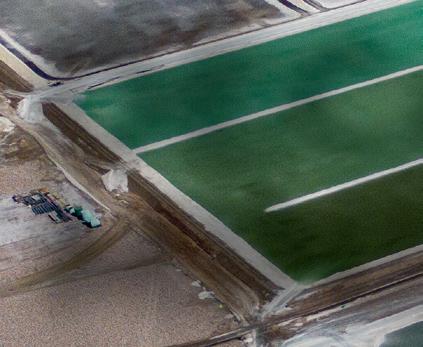

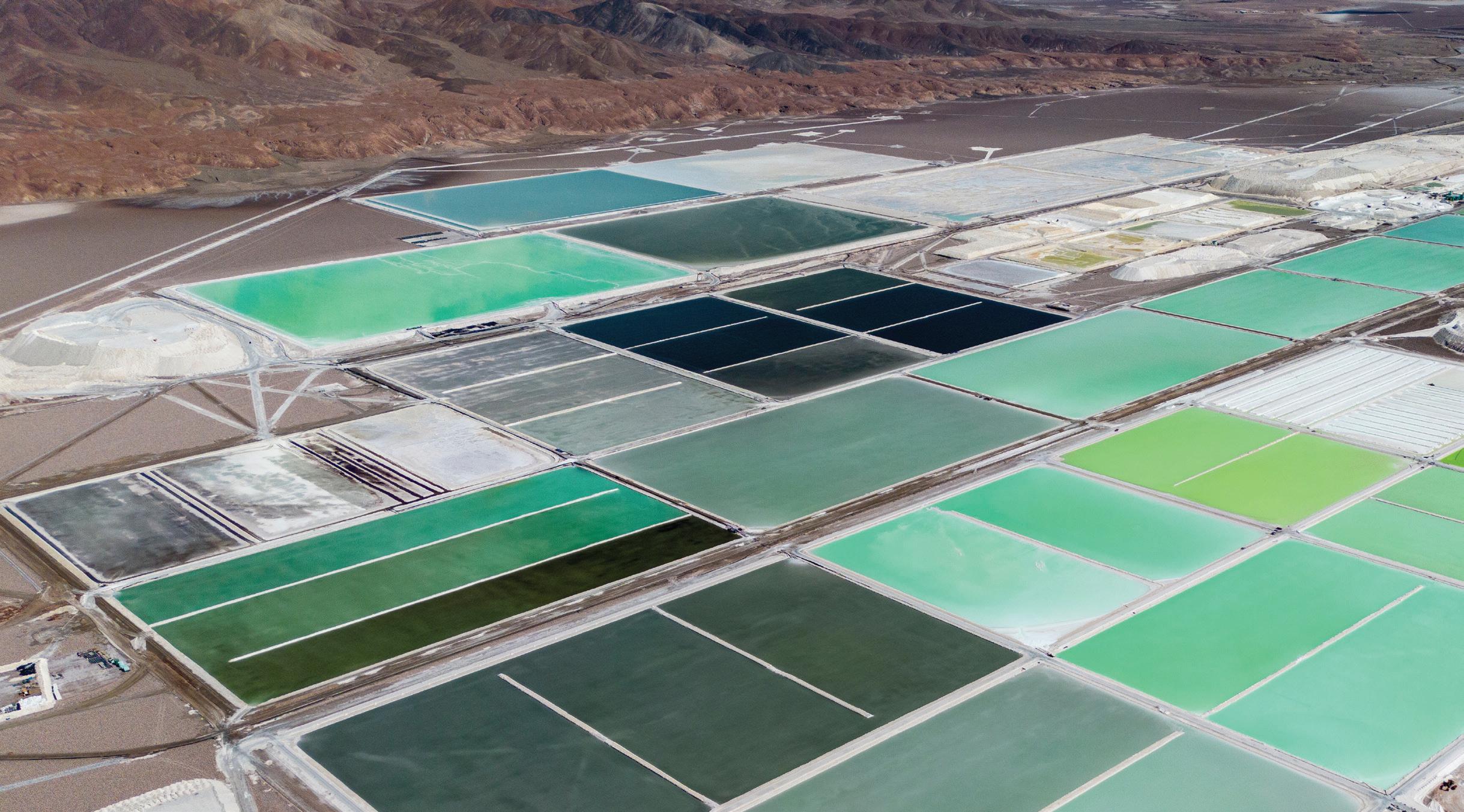

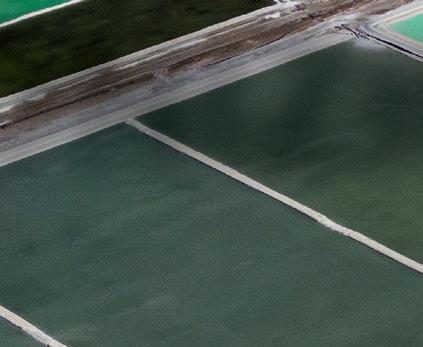

hile’s government claims to be making big moves to decarbonize the mining sector. What actions has it been taking?
Chile is the world’s biggest producer of mined copper, with 24% of global production in 2022 (according to the U.S. Geological Survey’s report of 2023a). Over the last 2 years, copper, lithium, iron, and molybdenum were Chile’s main export products, with a total value of US$111.89 billion (according to S&P Capital IQ’s reporting in 2023).
Considering the rising global demand for lithium, Chile is an important player, as the world’s second-largest lithium producer after Australia, and the host of the largest known quantity of commercially viable lithium reserves in the world (USGS, 2023b). The country accounts for 24% (equal to 235,000 tonnes lithium carbonate equivalent) of global lithium production (S&P Capital IQ, 2024). In Chile, lithium is produced from brine in the Atacama Desert in the salt plains bordering Bolivia. In terms of employment, Chile’s mining industry provided 263,000 direct jobs in large-scale mining between March and May 2022; an increase of 21.4% compared to the same period in 2021.
In 2020, the mining sector contributed 17.73% to national GDP according to the study published by the International Council on Mining and Metals. These numbers show the importance of the mining sector for the Chilean economy. In April 2023, Chile’s newly elected president announced the first wave of a new government plan to exert greater central government control over the country’s increasingly important lithium industry. This would mean that future lithium contracts would only be issued as public-private partnerships with state control.
Looking at economy-wide greenhouse gas (GHG) emissions, according to the IMF, Chile’s total GHG emissions in 2021 were 124.41 Mt (excluding land use, land-use change, and forestry, which according to the IMF is up from 90.61 Mt in 2005). The
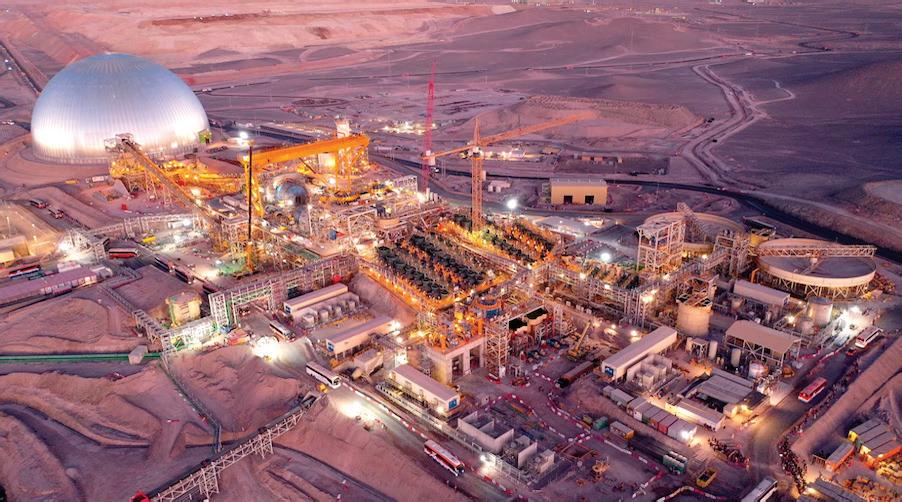
data slightly differs according to Climate Watch, which also puts Chile’s GHG emissions at 106.72 Mt in 2020, representing 0.10% of global emissions (according to the 2024 research report published by Climate Watch). Historical data on GHG emissions, derived from Climate Watch data, show that Chile’s total emissions have grown rather moderately over the past decade. Only 4.5% of GHG emissions are generated as a result of industrial processes. Energy accounts for 80% of emissions in Chile. It is unclear whether that includes mining. Overall, GHG emissions in Chile have increased by 114.7% since 1990 and 20.0% since 2007. Data on emissions in Chile’s mining sector are included as part of a sectoral focus in the country’s 6th Biennial Update Report (as published in 2023 by the national government’s Department of Mitigation and Transparency).
GHG emissions from mining, especially copper mining and other mining activities (including lithium), have tripled between 1990 and 2020. The reasons for that are the increase in mining activities, largely owing to rising copper prices as well as rising demand over that period, and increased consumption of diesel for mining other minerals on the other hand.
Another set of emissions caused by the Chilean mining sector is a result of coal mining and coal handling. This includes active open pit (surface) and underground mines, as well as GHG emissions caused in the post-mining process, referring to
processes related to mine closure. However, they only make up less than 5% of the GHG emissions from copper mining. As coal mining has been decreasing in Chile for a few years, these numbers are expected to continue to decline.
As communicated in the 5th Biennial Update Report published by the government in 2022, the Chilean mining industry is making significant progress in the use of renewable energy. In 2021, 44% of mining electricity consumption is from low GHG emissions sources, and in 2025, it is expected that 62% of the industry’s electricity demand will come from solar and wind energy sources.
A look at Chile’s “Nationally Determined Contributions” (NDC) and its international climate change commitments
The Chilean government published its first “Nationally Determined Contributions” (NDC) commitments in writing in 2016. The document was updated and submitted to the United Nations Framework Convention on Climate Change (UNFCCC) in 2020. The 5th BUR was communicated by the Ministry of the Environment in December 2022 and offers extensive information on Chile’s way forward in reducing GHG emissions.
Even though Chile is such a large mining country, the country’s updated NDC treats emissions reductions in the mining sector mainly as part of its ambitions in the energy sector. In its official NDC document, Chile sets an absolute annual emissions target of 95 Mt CO2 unconditionally by 2030 — and committed to peaking emissions in 2025. This is a much harder target than the one set in Chile’s 2015 NDC, where the country committed to an annual emissions target of 123 Mt CO2. According to its most recent NDC report, Chile aims to be carbon neutral by 2050 and intends to use a GHG emissions budget of no more than 1,100 Mt CO2 from 2020 to 2030.
updated 2030 NDC target is rated as “almost sufficient” when compared to modelled domestic pathways and “insufficient” when compared to its fair share contribution to climate action.
Another important factor to mention is that Chile pledged to exit coal mining by 2040. This is also mentioned in their NDCs as one of their strategies to reduce GHG emissions. There is no mention of whether this also includes a pledge to end the use of coal as part of the energy mix. The evolution of Chile’s energy mix shows that oil is the largest energy source, almost stable for the last 15 years, and that coal and biofuel use is dropping while renewable energy is experiencing steady growth.
Given that lithium in Chile is primarily found in the Atacama Desert, one of the driest places on earth, water potentially plays a role in Chile’s lithium production. Yet, it needs to be noted that direct conflicts over water use associated with lithium mining in Chile are limited, as the brine from which lithium is extracted cannot be used for either human consumption or agricultural purposes. Much more water is used in copper mining, especially processing. Prioritizing the water sector in the NDC is thus related to the mining sector. The documents do not spell out how and to what extent this would impact mining activities.
UNFCCC, or The Paris Treaty, is the international treaty that aims to limit dangerous human interference with the climate system.
Since mining emissions reduction targets are a key concern, Chile’s latest NDC includes the following mining-specific GHG emissions reduction targets by 2050:
• Reduction by 57% in open pit (surface) copper mines.
• Reduction by 74% in underground copper mining.
• Reduction by 52% in other mining activities.
Reductions in GHG emissions should be achieved using electric vehicles in mining operations to reach carbon neutrality. Other potential measures in mining include thermal electrification and hydropower. However, it needs to be pointed out that it is clearly stated in the NDCs that these measures might or might not be reflected in sectoral mitigation plans. The 3rd BUR (Government of Chile, 2018) sets as its objective a reduction of GHGs in the sector of industry and mining of 2.38 Mt CO2 by 2030. Furthermore, the Chilean government aims to incorporate energy efficiency in assessments and designs of future mining operations to reduce GHG emissions caused by fuel consumption in mining.
According to the Climate Action Tracker’s 2023 report, Chile’s
Chile’s rather robust national institutions, which provide stability to mining activities, make it comparatively advantaged and position it as a reference or benchmark for other countries in the region to emulate or learn from when it comes to mining. As presented in Chile’s 5th BUR, the recently launched National Mining Policy 2050 sets short (2025), medium (2030), and long- term (2050) goals for the mining sector and the government. The objective is to achieve a responsible mining sector that provides the minerals needed for the global energy transformation (according to the Ministry of the Environment in 2022). The Action Plan for Energy Efficiency policy imposes efficiency actions in different sectors, including the mining sector. It was disclosed in 2013 and is currently in the implementation phase. Further laws supporting the implementation of the Chilean contribution to the Paris Agreement include the Unconventional Renewable Energy Law (Law no. 20.257/2008), the Carbon Tax Law (Law no. 20.780/2014), the Energy Efficiency Law (Law no. 21.305/2021), and the Climate Change Framework Law (Law no. 21455). None of these focuses on the mining sector, but they touch upon the mining sector as a contributing sector on the path to climate neutrality. This is in line with the NDC mentioning mining as one factor for GHG emissions reduction; however, the assigned measures are related to energy and electrification.
Gordon Feller is a freelance mining writer.
By Carolina Marín
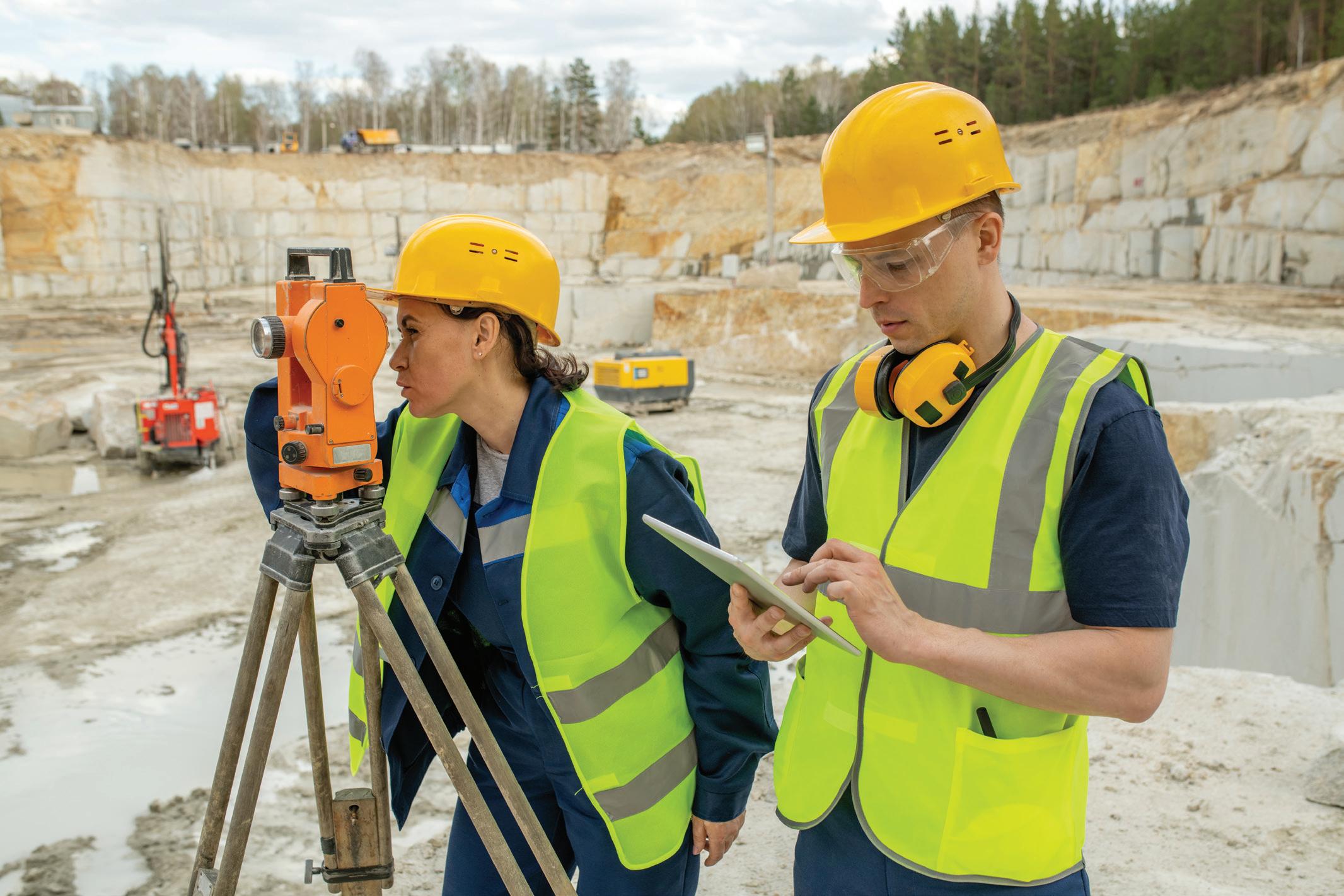

In 2023, a landmark report by the Western Australia parliamentary inquiry exposed widespread sexual harassment and discrimination in the mining industry, revealing a culture where women continue to face significant barriers. The report found that one in three women working in mining had experienced workplace harassment, reinforcing what many of us already knew — breaking into this industry as a woman comes at a cost.
I was 25 years old when I got my first job as a geologist. After multiple applications and interviews, I finally secured a role that aligned with my passion. I was full of motivation, eager to learn, and ready to prove myself. But my excitement quickly faded during my first meeting.
The senior geologist in charge questioned my qualifications. He could not understand how a woman with little experience had been hired, even though the description mentioned zero to two years of experience for the role. For more than two hours, I was bombarded with technical questions meant to challenge
my abilities. I left the meeting feeling miserable, alone at a site 3,500 metres above sea level in a project where I was the only female on site.
That was just the beginning. In another incident, one male colleague asked me to wear a sexy cleaner’s uniform to clean the office and serve them coffee. The manager that was present in the conversation left without saying a word, while some laughed, and others remained silent. I was so shocked that I could not react quickly. When I confronted them, they dismissed me as oversensitive, and they lecture me that I should learn to have more sense of humor.
During my early experience as a geologist, I constantly questioned whether I was the problem, struggling to fit into a male-dominated environment where I was the only woman and the youngest. Over time, I adapted to the work rhythm and found supportive male colleagues and male mentors who helped me grow both technically and personally.
However, despite the support I received, I still faced discrim-
ination, dismissive jokes, and the constant minimization of my work. I had to learn how to navigate underestimation, mansplaining, and the extra effort required to prove myself to my team. Even after receiving excellent evaluations, I constantly second-guessed my abilities, anticipating disapproval from my male colleagues. These experiences planted self-doubt, making me question whether I truly belonged in the role.
This problem extends beyond my personal experience. A 2023 study by McKinsey found that women in male-dominated industries are 1.5 times more likely to experience impostor syndrome. We are constantly undermined, forced to justify our positions, and subjected to microaggressions. Over time, this takes a psychological toll, making many of us question our worth.
Women in the mining industry face significant psychological and social challenges. In Western Australia, 30% of mining workers report high psychological distress, and 38% experience burnout. Gender-based discrimination and harassment are widespread, with women’s mental health affected by both organizational and personal sexism.
Female miners face workplace sexism, impacting their job satisfaction and wellbeing. With women representing only 14% of the global mining workforce — and just 10% in Latin America, mostly in administrative roles — our presence remains limited. Even when we break into the field, our expertise is constantly questioned.
Some believe diversity programs are solving the issue, but they often backfire. Women hired through these initiatives are frequently told they got the job “just because they are women.” Instead of fostering inclusion, these programs can lead to further discrimination and bullying. If workplaces do not address the underlying bias, they are setting young women up for failure.
As I met more women working in mining throughout my career, I began to feel more supported, heard, and acknowledged. I learned to navigate these tough experiences with the support of amazing, strong, and intelligent women who have stood by me to this day. Through them and with nearly eight years of work experience, I realized that these challenges extend beyond any single project, company, or country.

It is a cultural issue rooted in generations of male dominance in the industry, which will likely continue for some years.
Our first responsibility as women in mining is to recognize that bias exists and will persist for generations. What we need is to support the next generation of women — not only by preparing them technically but also by equipping them with the soft skills needed to navigate this hostile environment so that securing a good role in mining does not come at the cost of burnout, impostor syndrome, or leaving the industry altogether.
Change starts with awareness and action. Mining companies must implement stronger policies to support female employees. Respectful workplace training should be mandatory, with clear guidelines on addressing discrimination. Companies need to create mentorship networks so that women entering the field have guidance and support.
Mining is evolving, especially with the rising demand for critical minerals. But for the industry to thrive, it must ensure a safe and supportive environment for all workers. Women do not need special treatment — we need equal opportunities, respect, and the chance to succeed without unnecessary barriers. The future of mining depends on it.
Carolina Marín Suárez is a geologist and a master’s student at the University of British Columbia (UBC), in the Mineral Deposit Research Unit (MDRU). She has almost eight years of experience in the mining industry, having worked on projects in Chile and Canada, including five years at a Canadian mining company.
Disclaimer: The opinions expressed in this article are solely those of the author and do not necessarily reflect the views or positions of the Canadian Mining Journal.

By Kate Collier, Mbali Nkosi, and Matlhatsi
In an industry which can reach, and positively impact, large numbers of people through its engagement with direct employees, contractors, stakeholders, and community members, mining companies have a unique ability to drive positive change in the fight against gender-based violence, femicide, and broader safety and security challenges experienced by women, both in and outside of the workplace.
In August 2024, the South African Mine Health and Safety Inspectorate published its guideline on the management of gender-based violence and femicide (GBVF), safety, and security challenges for women in the South African mining industry. This guideline came into effect on November 1, 2024. It requires all mines to implement a mandatory code of practice as per the South African Mine Health and Safety Act, to address the risks associated with GBVF and implement measures to address these issues. Notably, these measures go beyond the boundaries of the workplace and encourage collaboration with state and other non-governmental organizations working to stop GBVF and to help victims and survivors. Importantly, this is not limited to physical GBVF, but to mental health impacts and the more insidious types of violence, such as bullying and harassment in the workplace.
While legally mandated in South Africa with potential enforcement action against the employer if the required actions are not implemented, the minimum expectations set out in the guideline serve as a good baseline document for mining companies operating in other African (and international) jurisdictions. This framework can assist companies achieve their ESG objectives, contribute positively and sustainably to the communities in which they operate, and comply with soft law objectives relating to the provision of safe and violence-free workplaces.
The actions and programs that employers can implement are underpinned by true social sustainability considerations, particularly when the drive to provide and maintain a safe and decent workplace is coupled with initiatives that, for example, strengthen governmental and institutional efforts to investigate GBVF crimes and secure justice for victims and survivors. These measures should also align with domestic laws and the obligations of countries that have ratified the International Labour Organization Convention 190, which notes that members have a responsibility to promote an environment of zero tolerance towards violence and harassment.
Historically, GBVF has been treated as an unfortunate social ill, often unrelated to the employment relationship and outside of the jurisdiction of an employer’s sphere of influence. However, when employers commit to operating in a manner that supports and drives factors such as the overall health and well-being of employees, gender equality, decent work, and economic growth, it becomes more challenging to draw a definitive line around their role in reducing risks faced by employees. In such cases, employers are
better positioned to contribute to mitigating and controlling foreseeable harm. By fully embracing the guideline, the mining industry throughout Africa can play a leadership role in the development of social norms and behaviours that protect women, children, and all community members from systemic violence.
A key obligation in the guideline is training and communication. For training and communication to be effective and useful, employers must carefully assess and understand the prevailing cultural norms. This includes working with community leaders and conducting workshops and training sessions within relevant communities and with employees on matters related to combatting GBVF. While employee-focussed training relating to sexual harassment and discrimination and company policies is important, it should also cover aspects such as the impact of budgeting on programs and processes, awareness of governmental and social initiatives that can be supported, awareness of support and response programs, and the role that employees and leaders can play in a survivor-focussed response plan.
Clearly communicating the practical and physical steps that will be taken in each workplace is essential. These measures must be informed by a risk assessment specific to each workplace, whether on-site or at corporate offices. Effective communication also requires that programs addressing GBVF receive dedicated attention from senior leadership, including time on executive agendas and reporting. The importance of dealing with GBVF should be reflected in organisational strategic planning, contained in KPIs of leaders and demonstrated in budget allocations for the required actions identified.
Channels of communication and co-operation with existing governmental agencies and non-governmental organisations will be required to ensure these actions have a meaningful, long-term impact on employees, victims, and communities. The South African guideline emphasizes the importance of collaborating with the criminal justice system, monitoring reporting processes, providing support for legal fees, and actively participating in programs that help through the formation of public-public partnerships.
Addressing GBVF must be a fundamental aspect of creating resilient, sustainable, and inclusive mining operations. Achieving this requires a collaborative approach where all stakeholders work together to communicate, educate, and promote prevention and protection efforts. The private sector must support government initiatives, particularly in areas such as investigation and justice processes. Mining companies are well-placed to step in, be involved, and use their existing systems to drive change.
Kate Collier is a partner, while Mbali Nkosi and Matlhatsi Ntlhoro are senior associates at Webber Wentzel.



In recent years, the mining industry has faced substantial criticism on both national and international fronts. Critics often highlight environmental concerns, casting the sector in a negative light, while overlooking its crucial role in sustaining Canada’s high standard of living. This portrayal is not only unfair but also undermines the efforts of thousands of dedicated professionals who work tirelessly to mitigate the environmental impacts, particularly those involved in reclamation work.
Mining is more than just extraction. It encompasses a vast range of activities that significantly contribute to the economy, providing essential materials for various industries, from technology to healthcare. The economic backbone supported by mining extends beyond direct employment, influencing other sectors and communities that rely on its stability and growth.
Reclamation, the process of restoring land after mining activities are completed, is a field that embodies the industry’s commitment to environmental stewardship. Reclamation professionals, many of whom have extensive backgrounds in STEM (Science, Technology, Engineering, and Mathematics), devote their careers to ensuring that mined lands are returned to a natural or economically usable state. Their work is an intricate blend of science and art, requiring deep understanding of ecosystems, soil science, and sustainable practices.
Despite their crucial role, these experts often receive little recognition. They transform scarred landscapes into thriving ecosystems, demonstrating that responsible mining practices can coexist with environmental preservation. These unsung heroes deserve to be honoured and celebrated for their unwavering dedication to restoring and enhancing natural habitats.
In the face of widespread negativity, one artist is making it her mission to highlight the beauty and complexity of reclamation work. With her unique approach, she travels across Canada, vis-

Proud Paintbrushes: Acrylic on canvas. Inspired by the successful reclamation of the Canmore coal mines to the current recreational area now known as Quarry Lake.
iting reclaimed mining sites and creating stunning visual tributes. Her paintings capture not only the physical transformation of these landscapes but also the intricate efforts of the reclamation professionals behind the scenes.
Shannon Carla King’s work is more than just art; it is a powerful narrative that brings hope and inspiration to those who often feel unappreciated. By showcasing the reclaimed sites, she provides a visual testament to the positive impact of mining when done responsibly. Each brushstroke tells a story of resilience, innovation, and the harmonious balance between industrial activity and environmental care.
Her exhibitions draw attention to the often-overlooked aspects of the mining industry, fostering a deeper understanding and appreciation among the public. These works of art serve as a reminder that the industry’s contributions extend far beyond extraction, playing a pivotal role in shaping Canada’s landscape and upholding its standards of living.
As her paintings gain recognition, so too do the efforts of reclamation professionals, whose work is integral to ensuring that mining activities leave a positive legacy. By honouring these individuals, we acknowledge their invaluable contributions to both the environment and the economy, reaffirming the importance of their roles in sustaining the well-being of our nation.
It is imperative to shift the narrative surrounding the mining industry, recognizing it not as a detriment but as a vital sector committed to balancing progress with environmental responsibility. Through the celebration of reclamation efforts and the powerful message conveyed by one dedicated artist, we can foster a more nuanced and appreciative understanding of the mining industry’s role in Canada. Shannon’s artwork: “The ART of Reclamation” can be found at the Oil Sands Discovery Centre in Fort McMurray from November 1, 2024 to April 30, 2026.
Conveyor Components 20 www.conveyorcomponents.com
Groupe BBA 23 www.bba.ca
Haver & Boecker Niagara ............41... www.haverniagara.com/diagnostics
Hepburn Engineering 15 www.hepeng.com
Hexagon Mining 39 www.hexagon.com/mining
Jennmar 21 www.jennmar.com
John Brooks Company 11 www.johnbrooks.ca
Komatsu ........................................2........ www.komatsu.com/autonomous
Liebherr Canada 7 www.liebherr.ca
Maestro Digital Mine 5 www.maestrodigitalmine.com
McLellan Industries 59 www.mclellan-ind.com
Noah Rain Builders 27 www.noahrain.ca
Petro Canada Duron ....................60....... www.petrocanadalubricants.com
Redpath Mining Insert www.redpathmining.com
Richwood 19 www.richwood.com
Rithmik Solutions 36 www.rithmik.com
Sandvik 30/31 www.rocktechnology.sandvik
Sofvie...........................................25.................................. www.sofvie.com
Tema Isenmann 47 www.temaisenmann.com

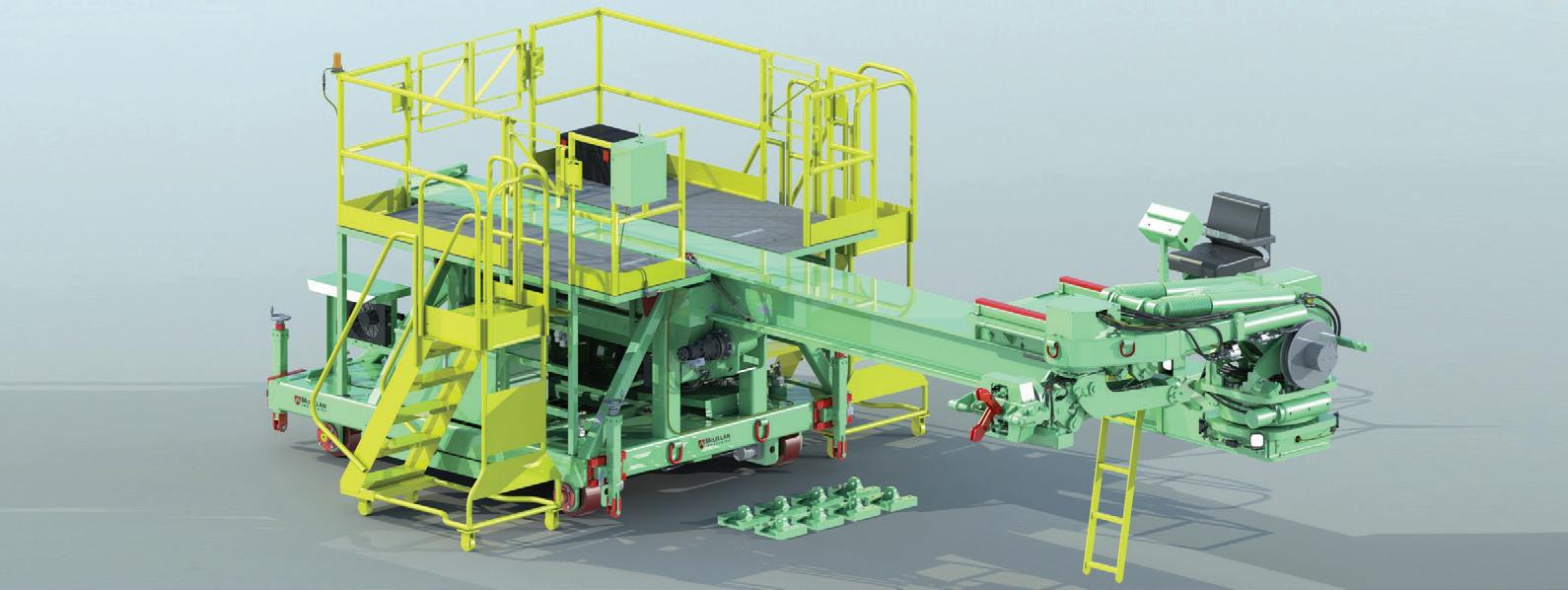
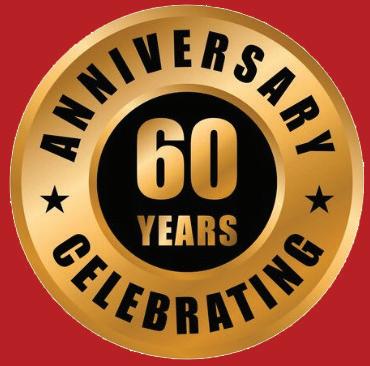
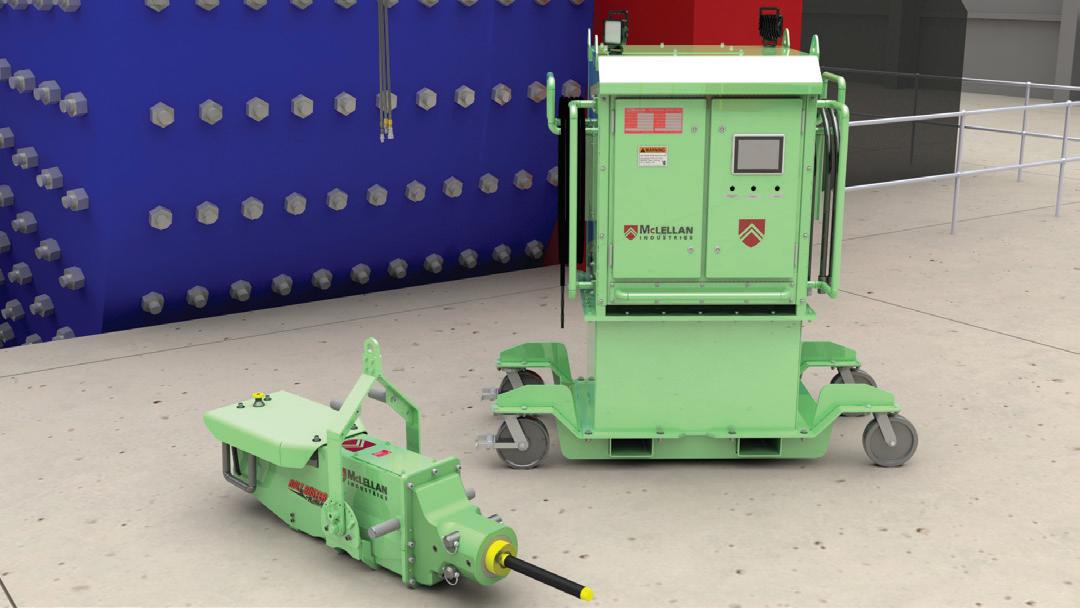
McLellan Industries is the original designer of the Mill Liner Handler. Our experience and support are well known throughout the world.
With over 60 years of research and development experience, we custom engineer and manufacture quality-built equipment for servicing Ball, Sag, Ag and Rod type mills. This equipment is essential for scheduled or emergency relines.
Our McLellan Mill Relining Equipment significantly reduces mill downtime while providing a maximum level of safety. Our equipment empowers your crew with a mechanized delivery of mill liners for easy transport and placement inside your mill. Let us help you with all aspects of the mill lining process. We can provide you with a custom reline service package designed to meet your needs.
MILL LINER HANDLERS
BOLT BUSTERS, WITH HYDRAULIC POWER UNITS
JIB CRANES FOR BOLT BUSTER SUSPENSION
MONORAIL SYSTEMS FOR BOLT BUSTER SUSPENSION
FEED CHUTE TRANSPORTERS
ROD CHARGERS
ANCILLARY SUPPORT TOOLS & SPARE PARTS
SERVICE & MILL RELINING SUPPORT


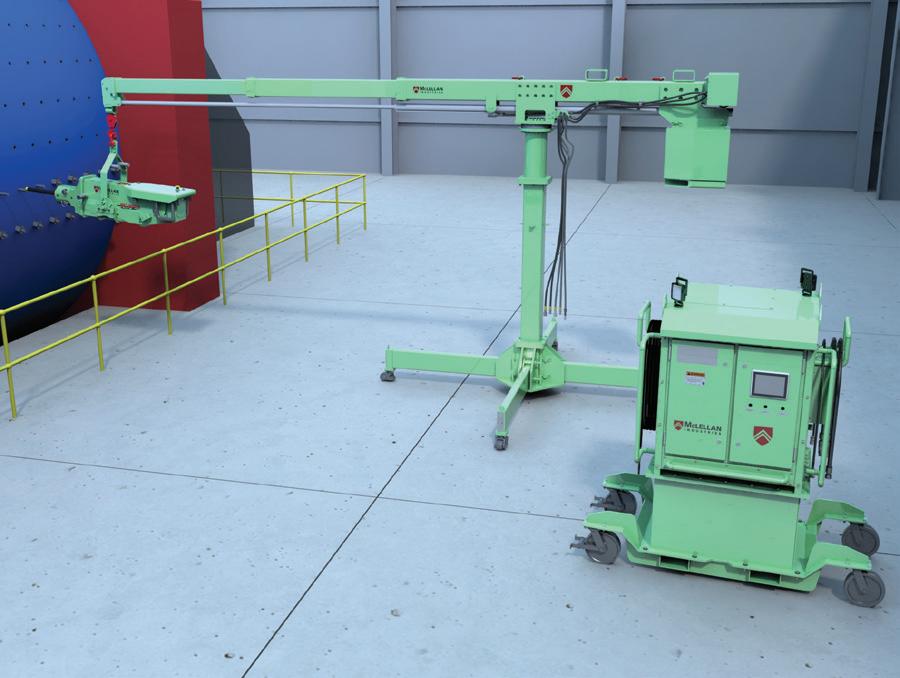
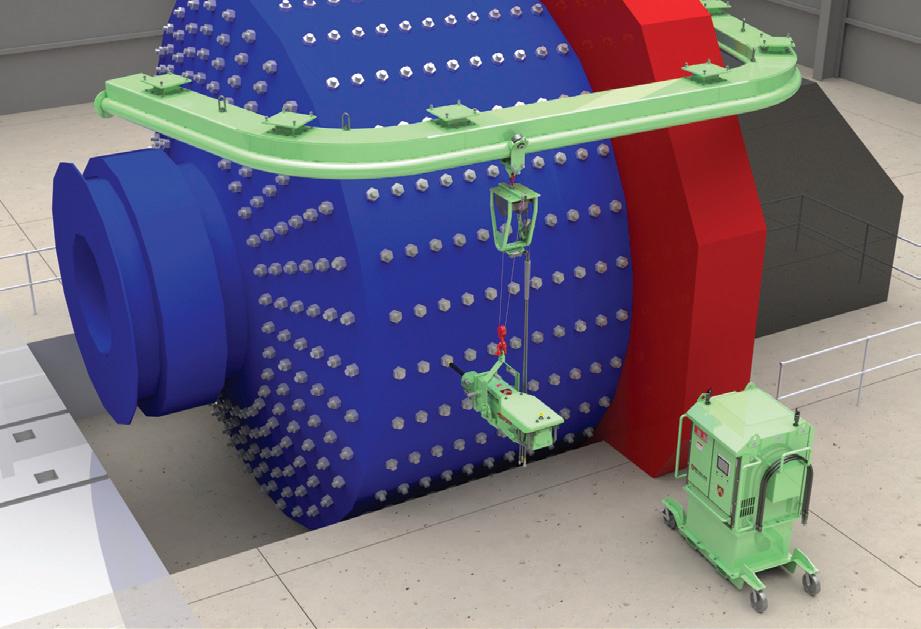
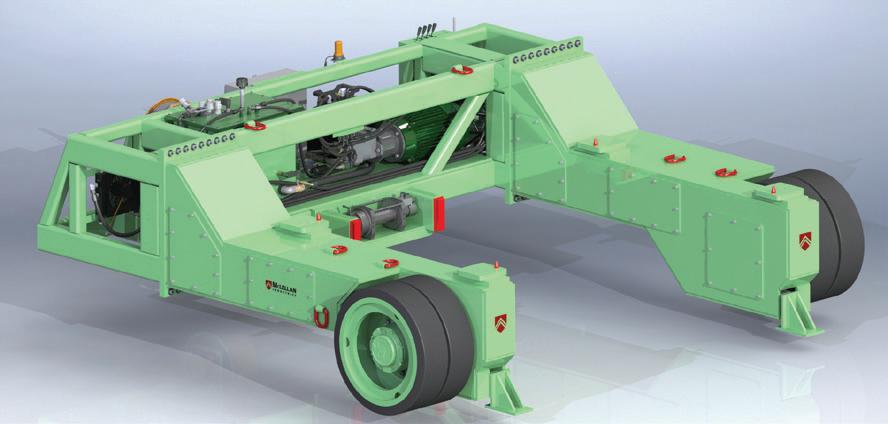
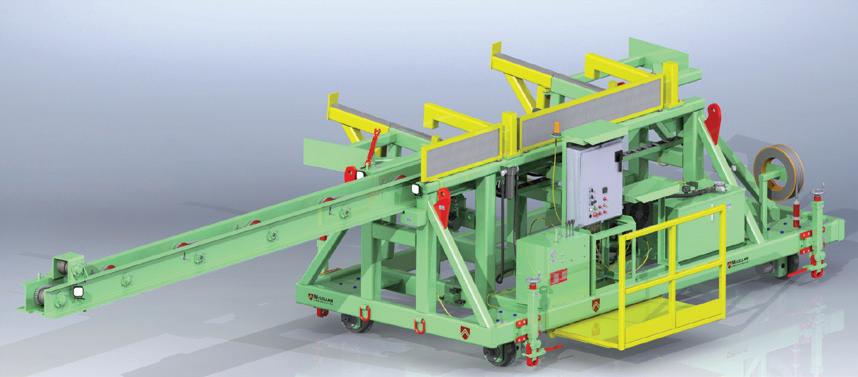





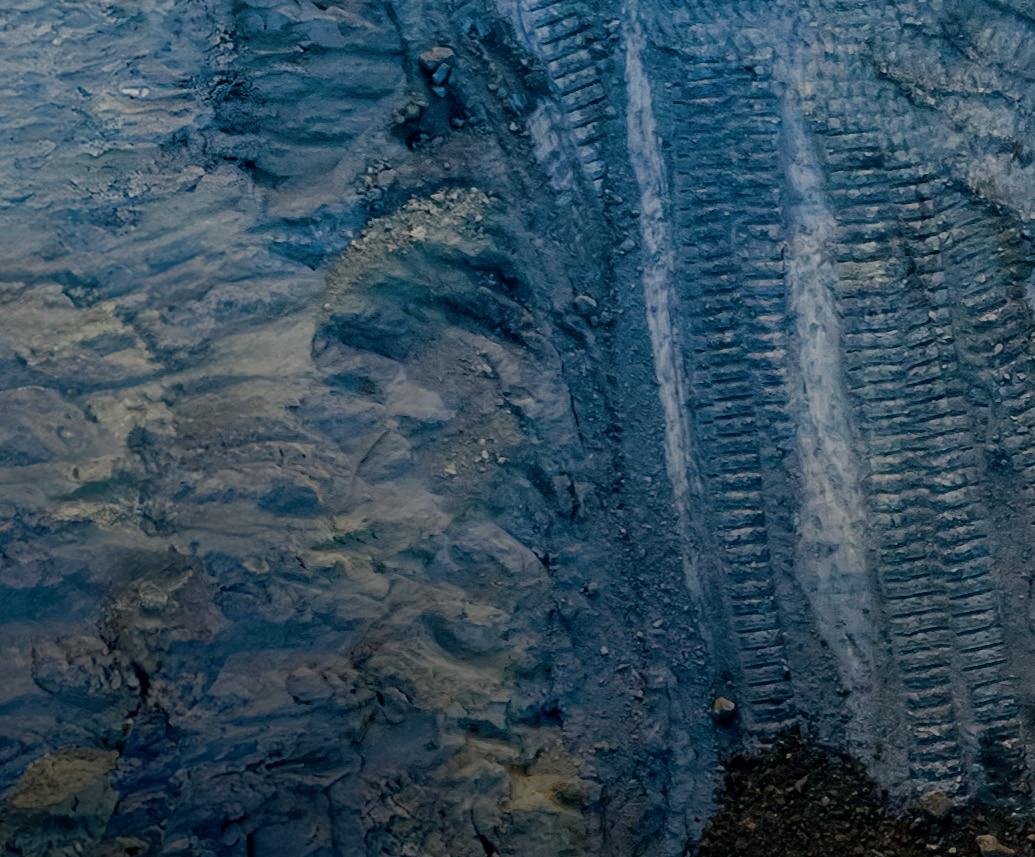

In today’s challenging mining environment, maximizing productivity and cutting costs are critical. The right lubricant choice is essential to your success. Petro-Canada Lubricants offers a comprehensive range of products, including PRODURO™, DURON™, HYDREX™, and our specialized greases and open gear lubricants, all designed to enhance effi ciency and reliability in off-road applications. Choose Petro-Canada Lubricants for superior performance and peace of mind.

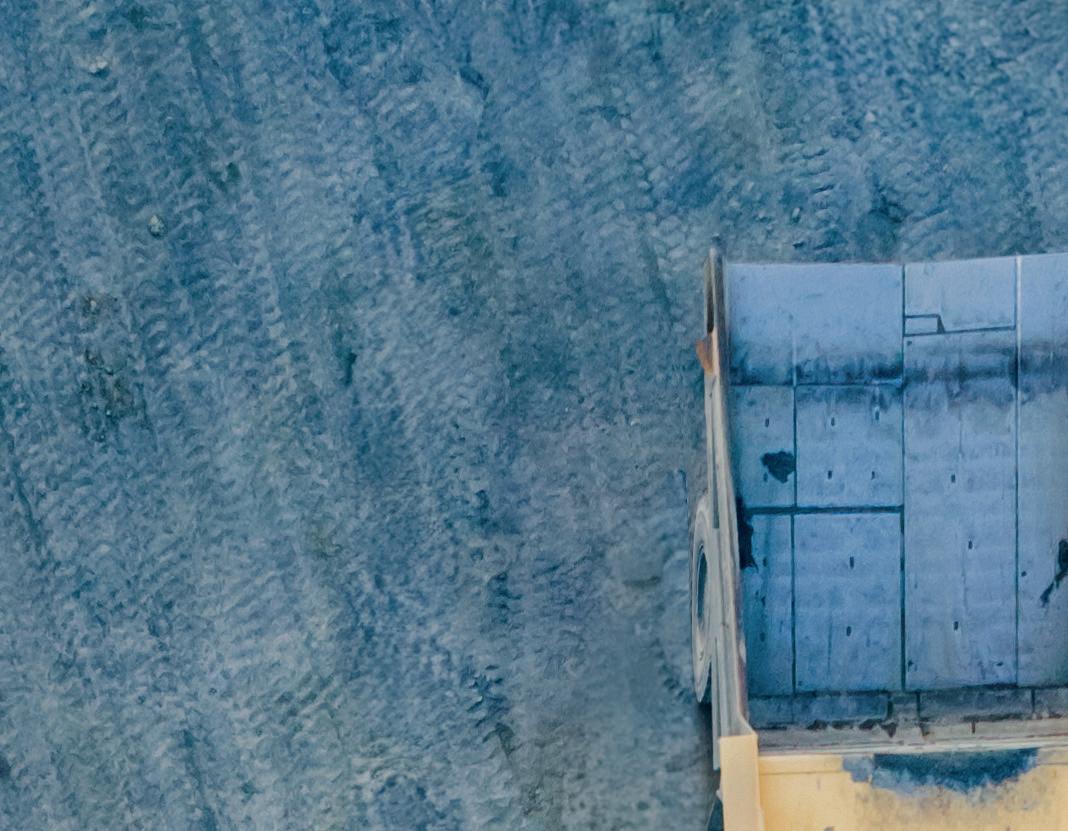
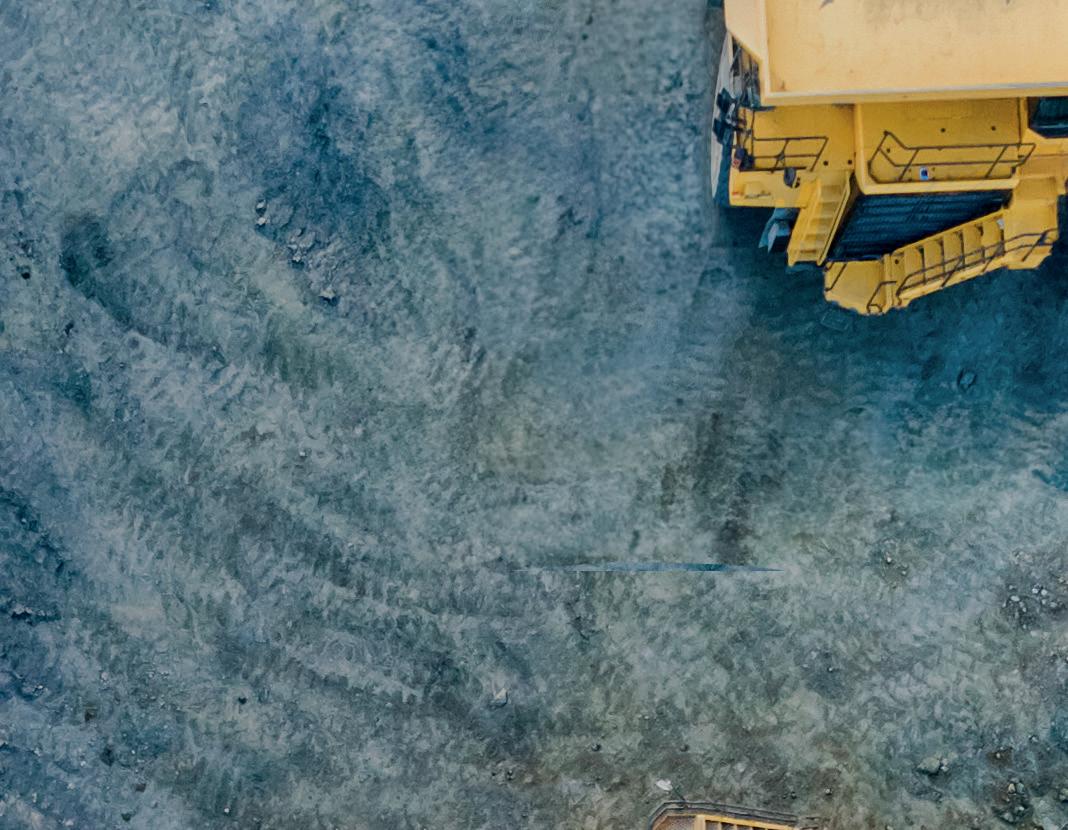

Ready to take your operations to the next level?
Challenge us to show you the savings! Contact the Petro-Canada Lubricants team today and unlock potential with our Cost Savings Calculator.
petrocanadalubricants.com
